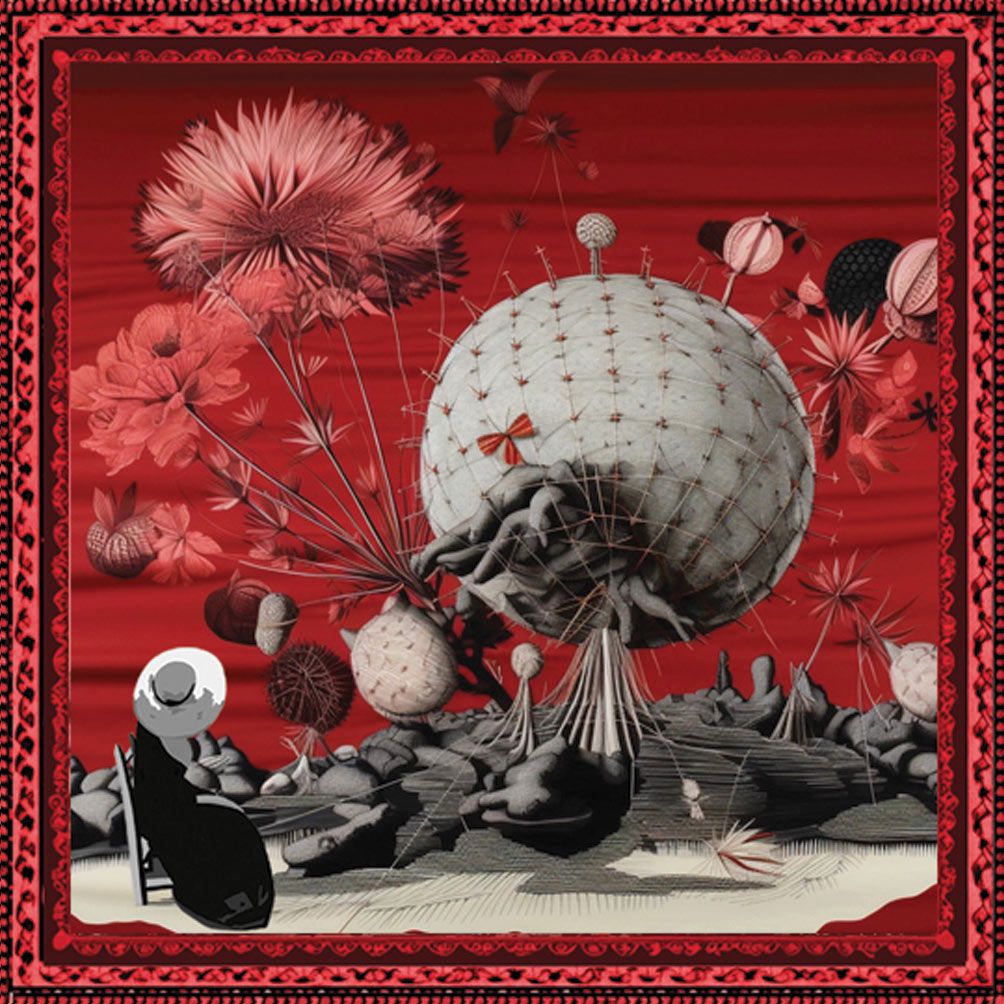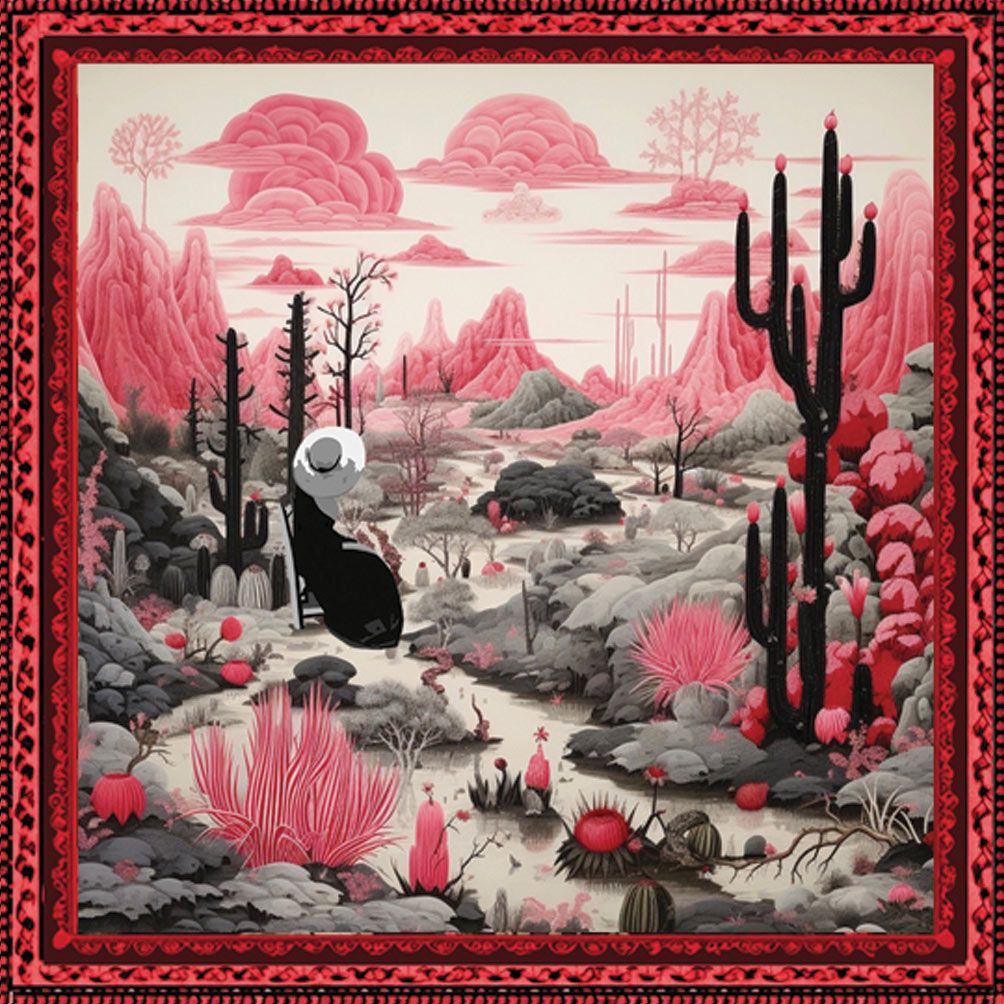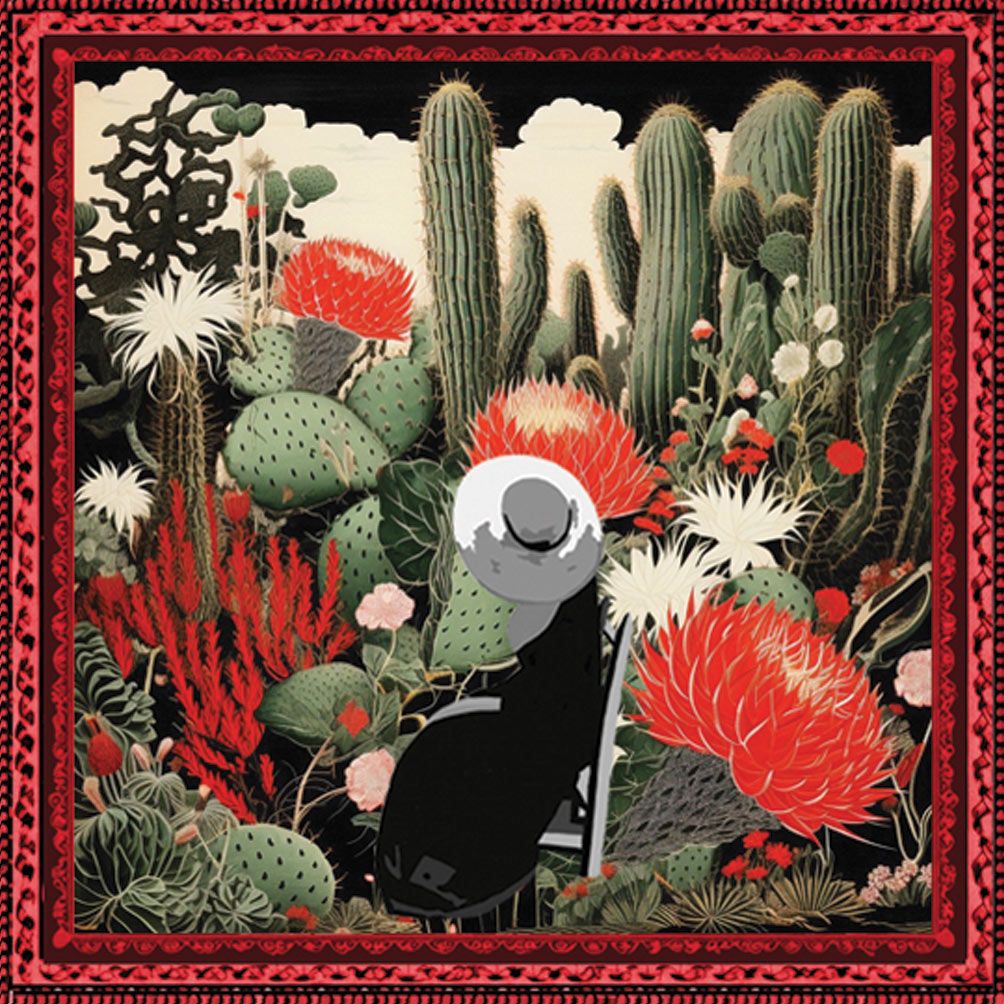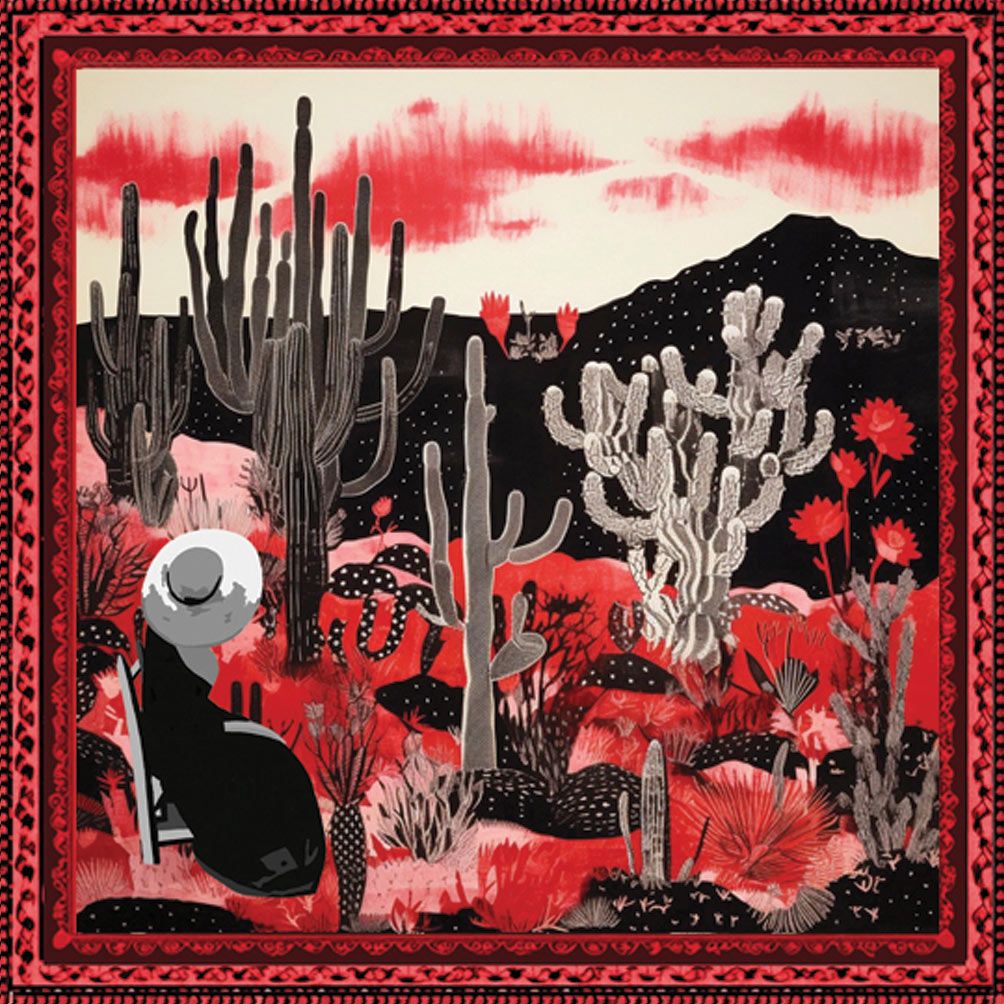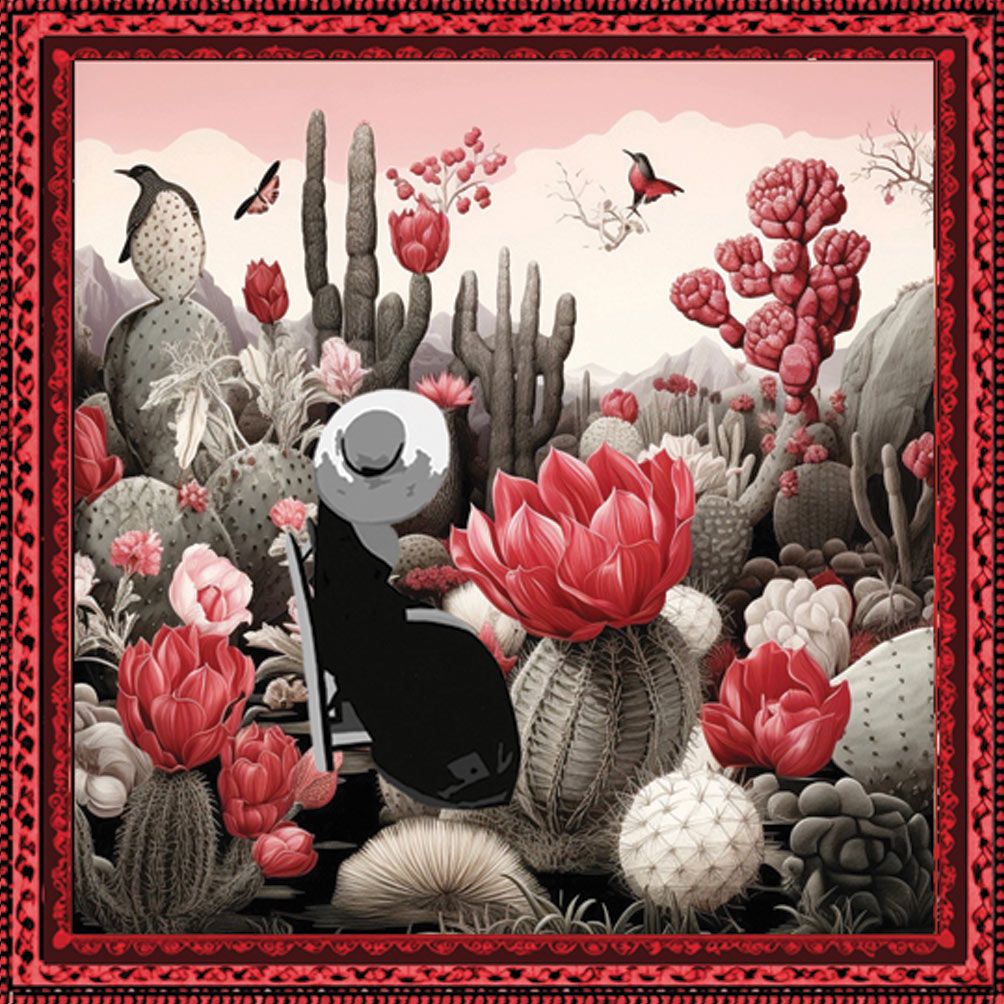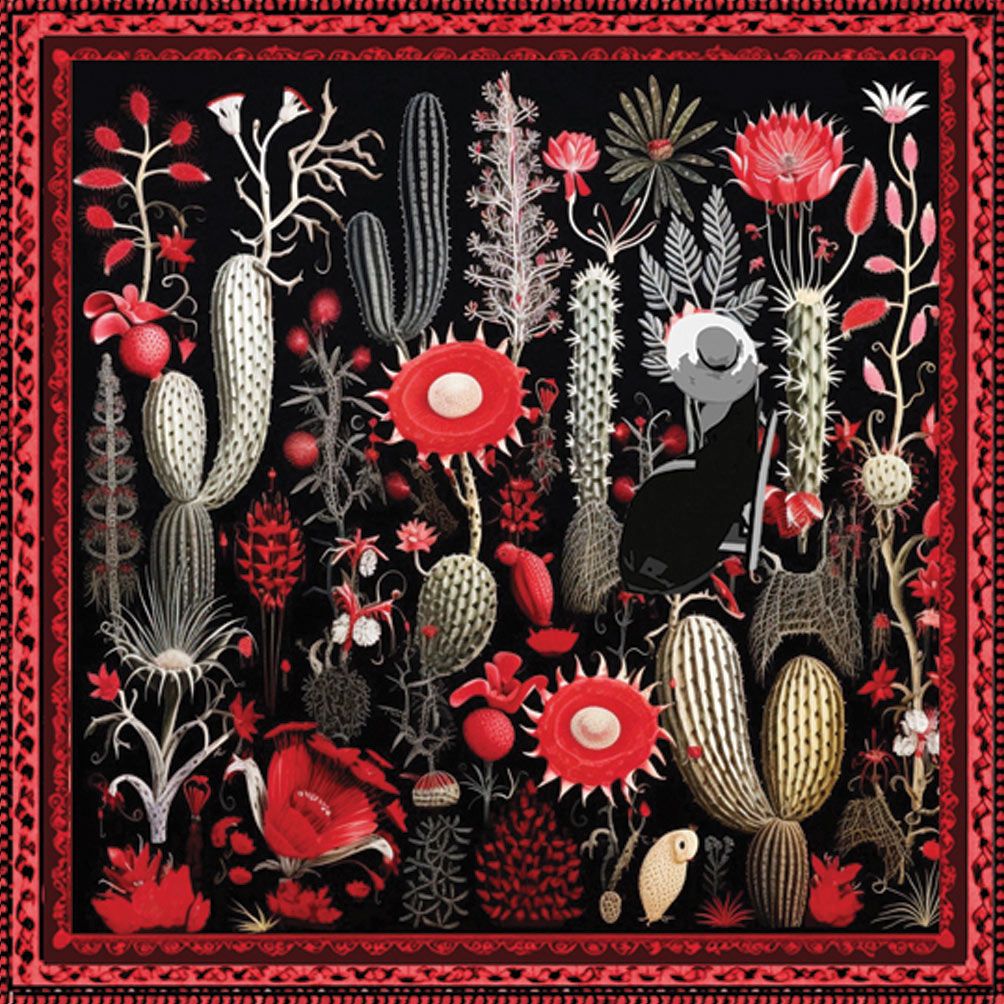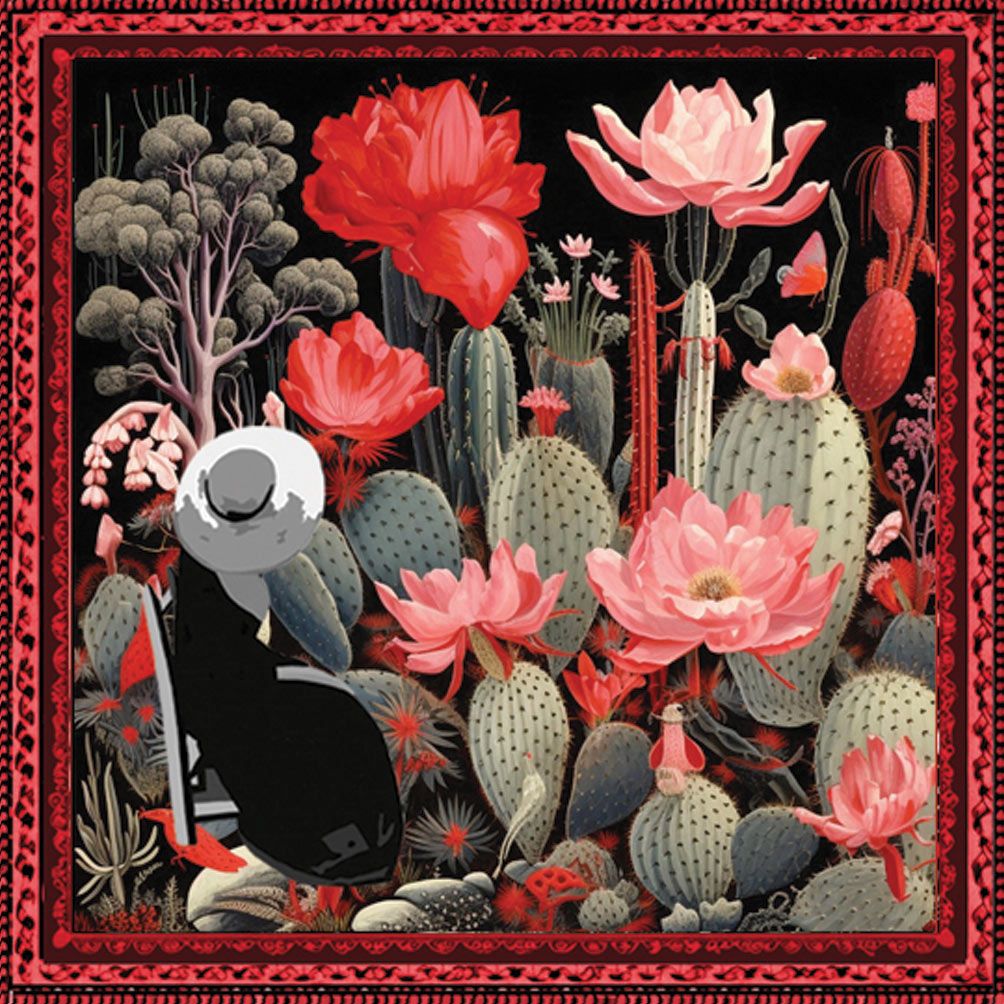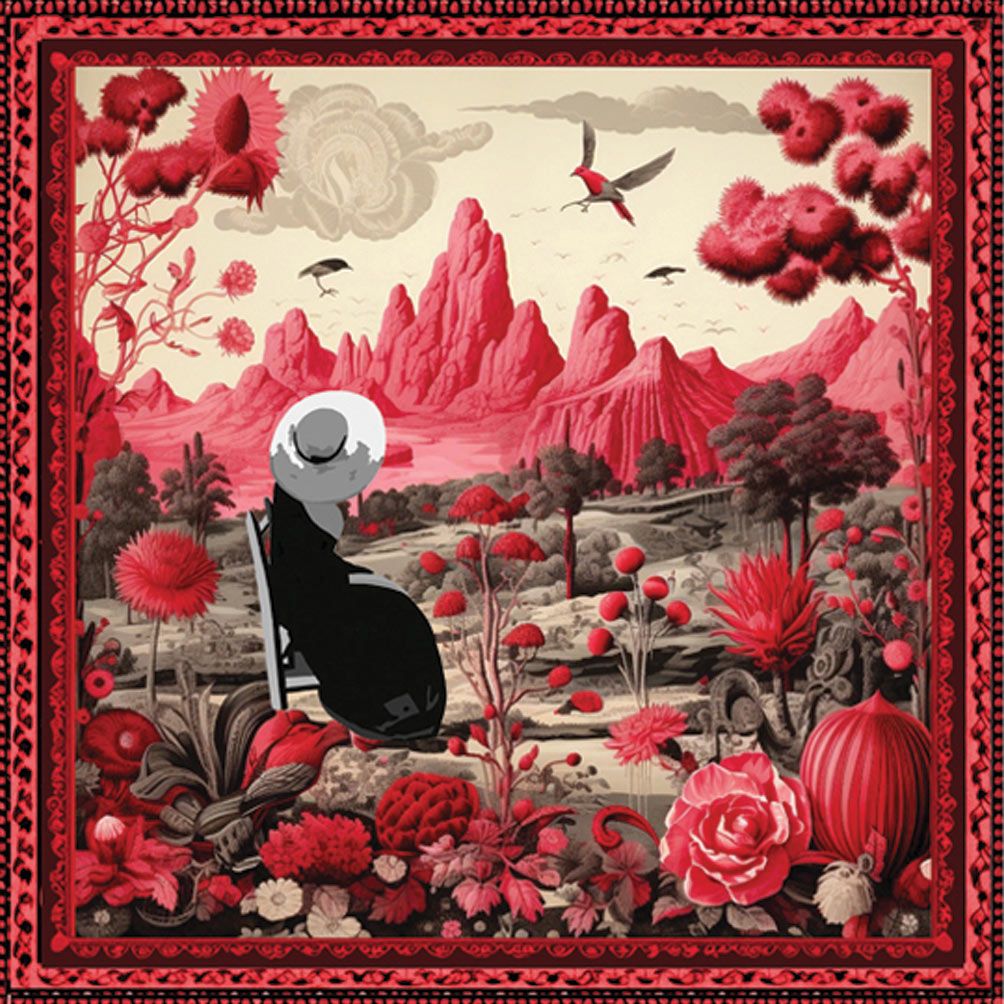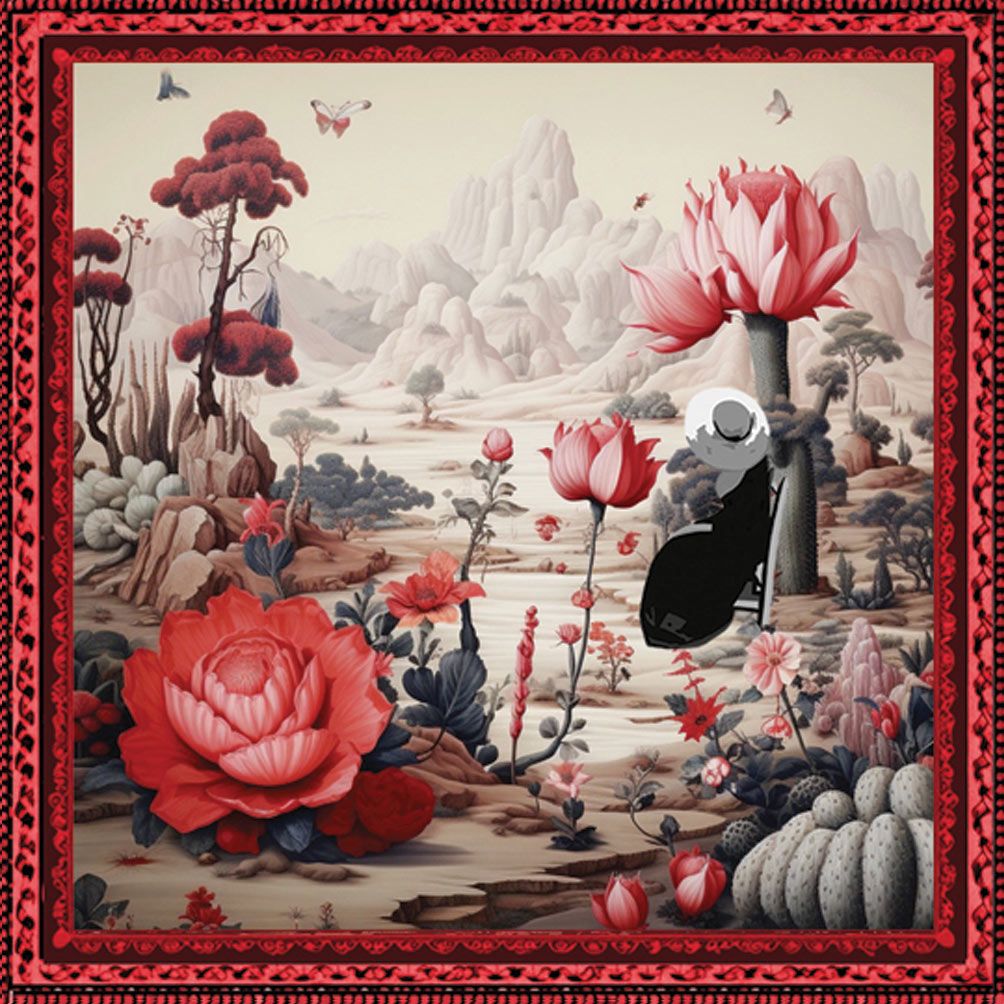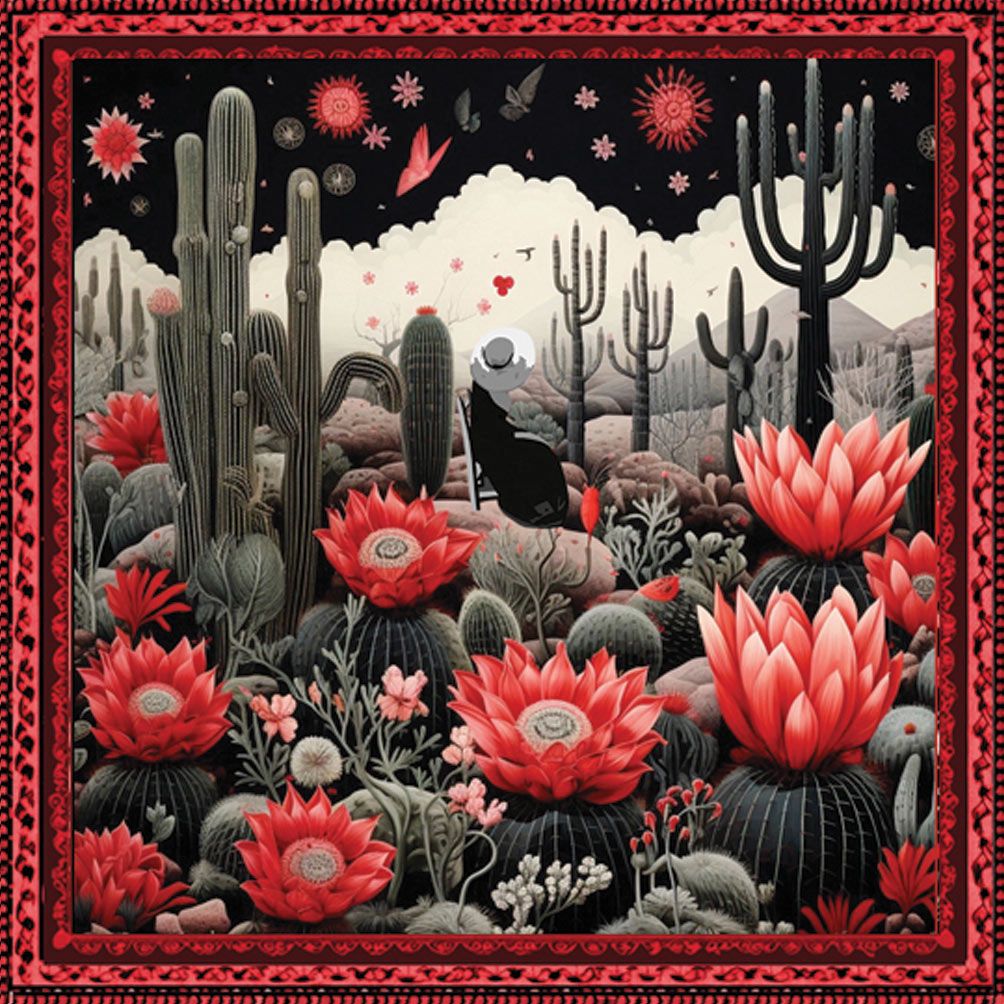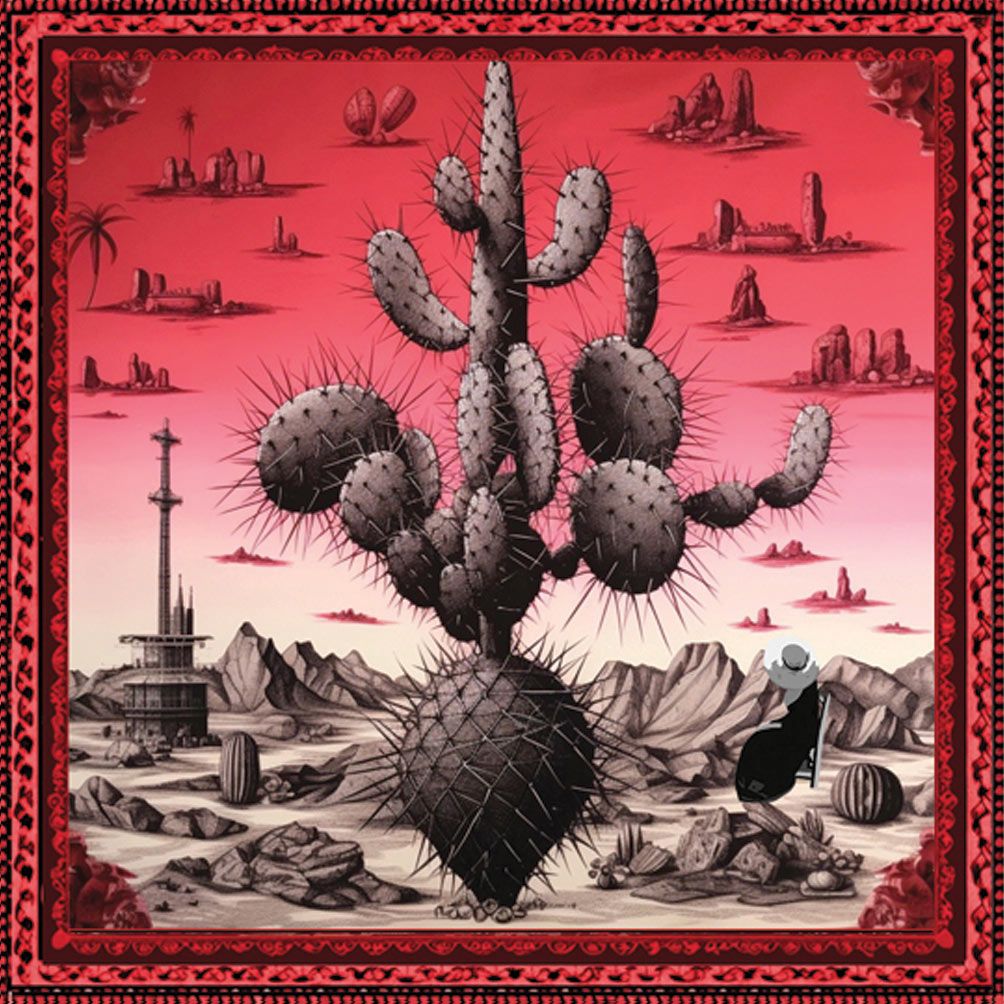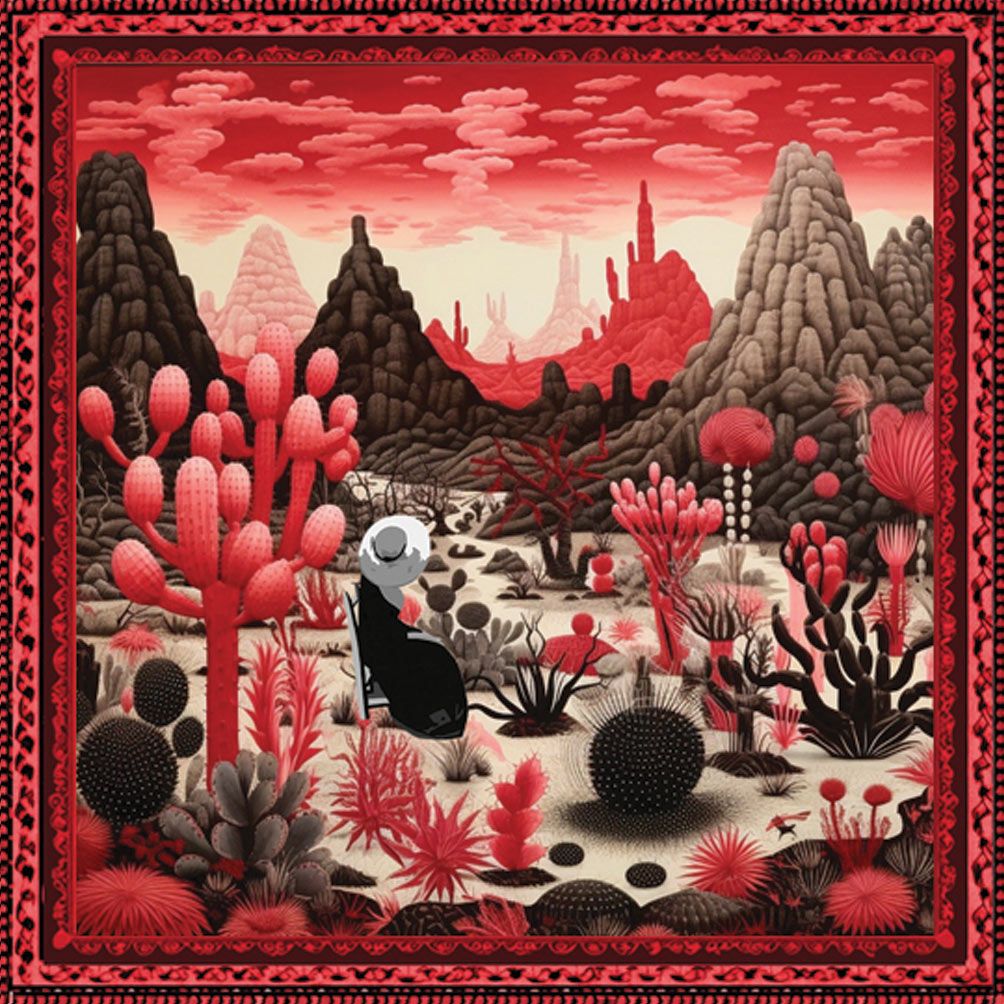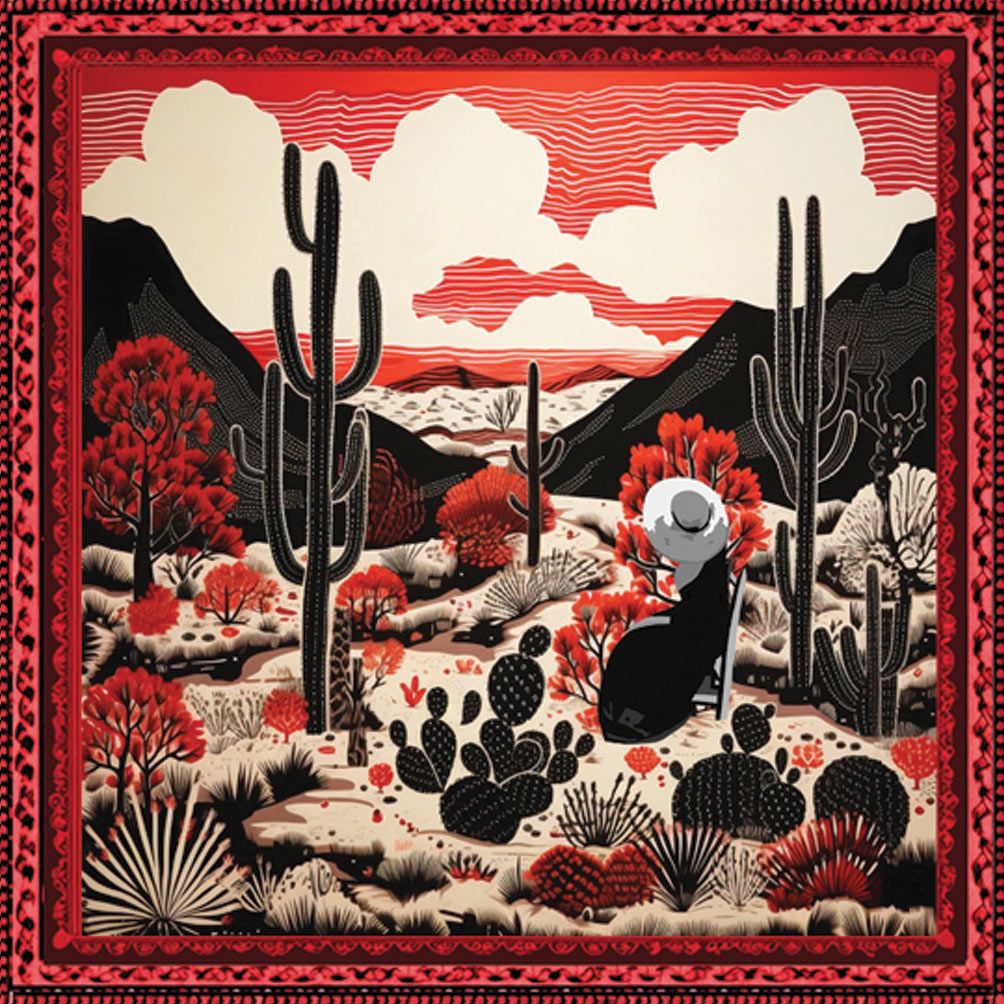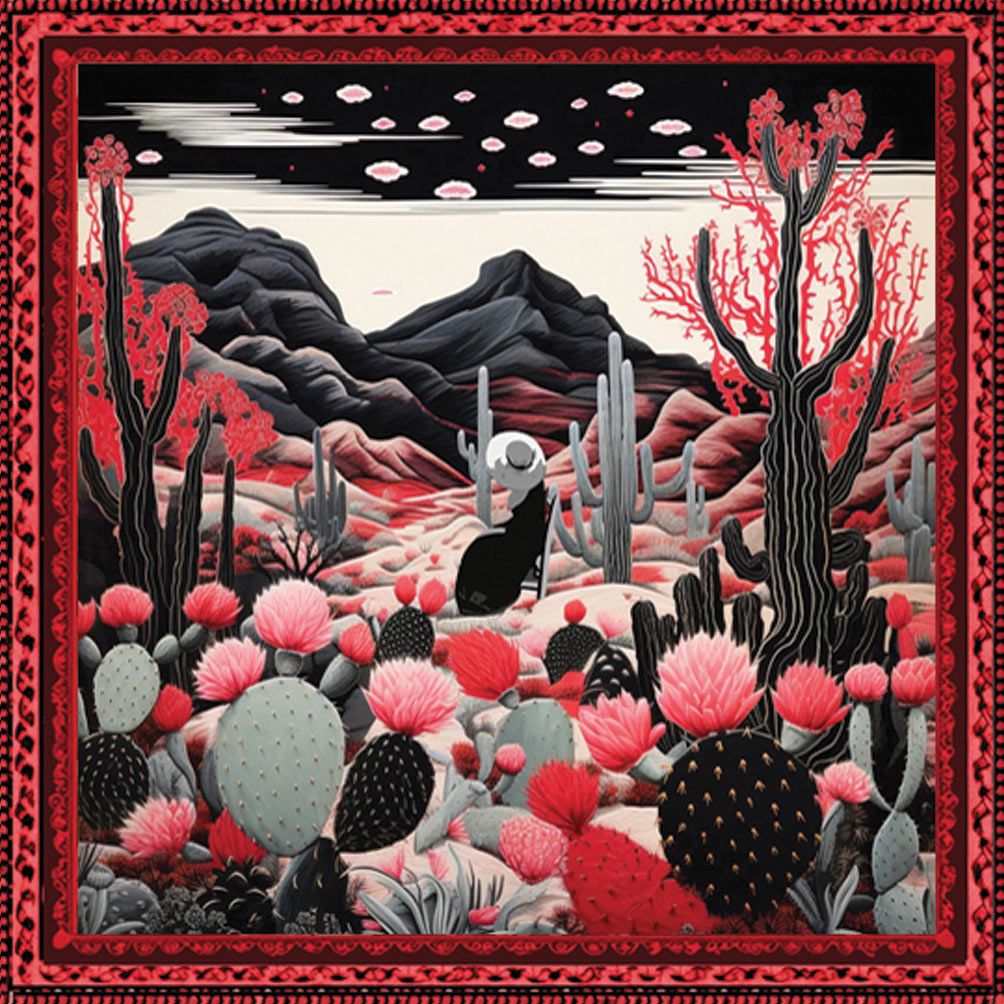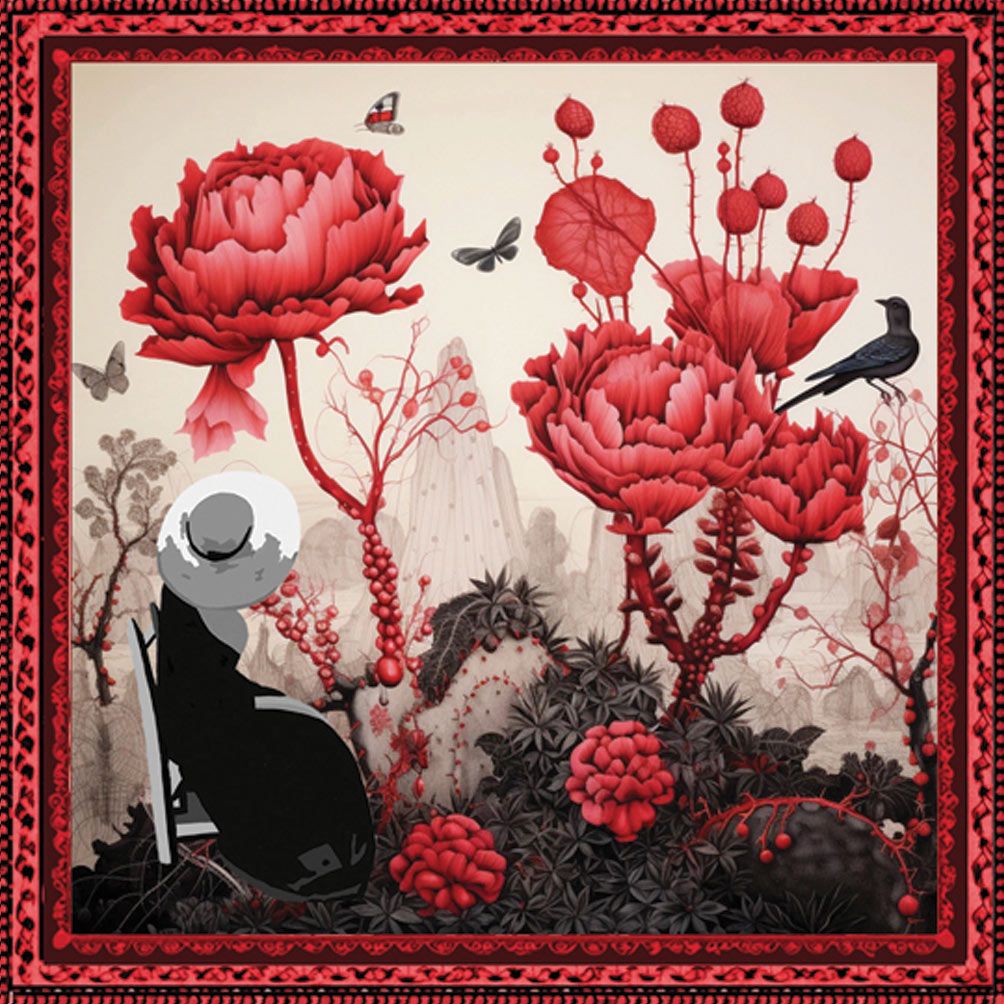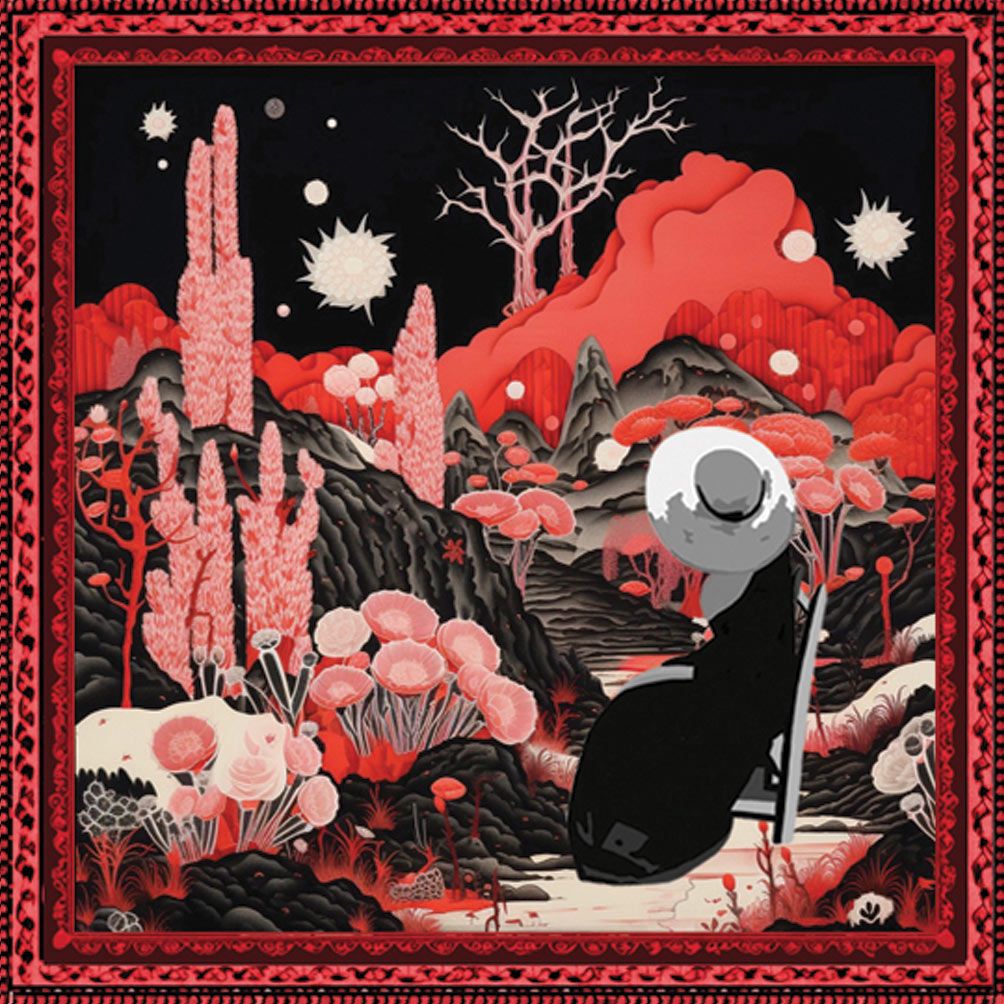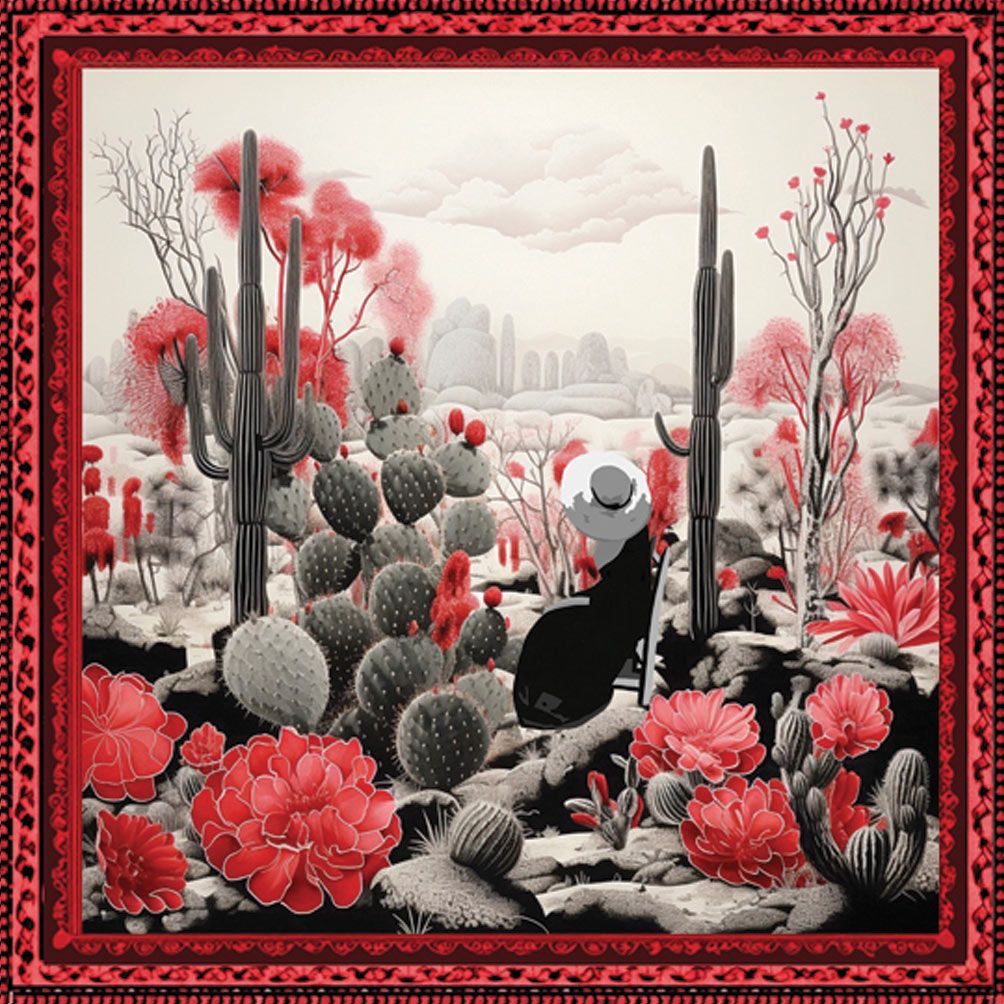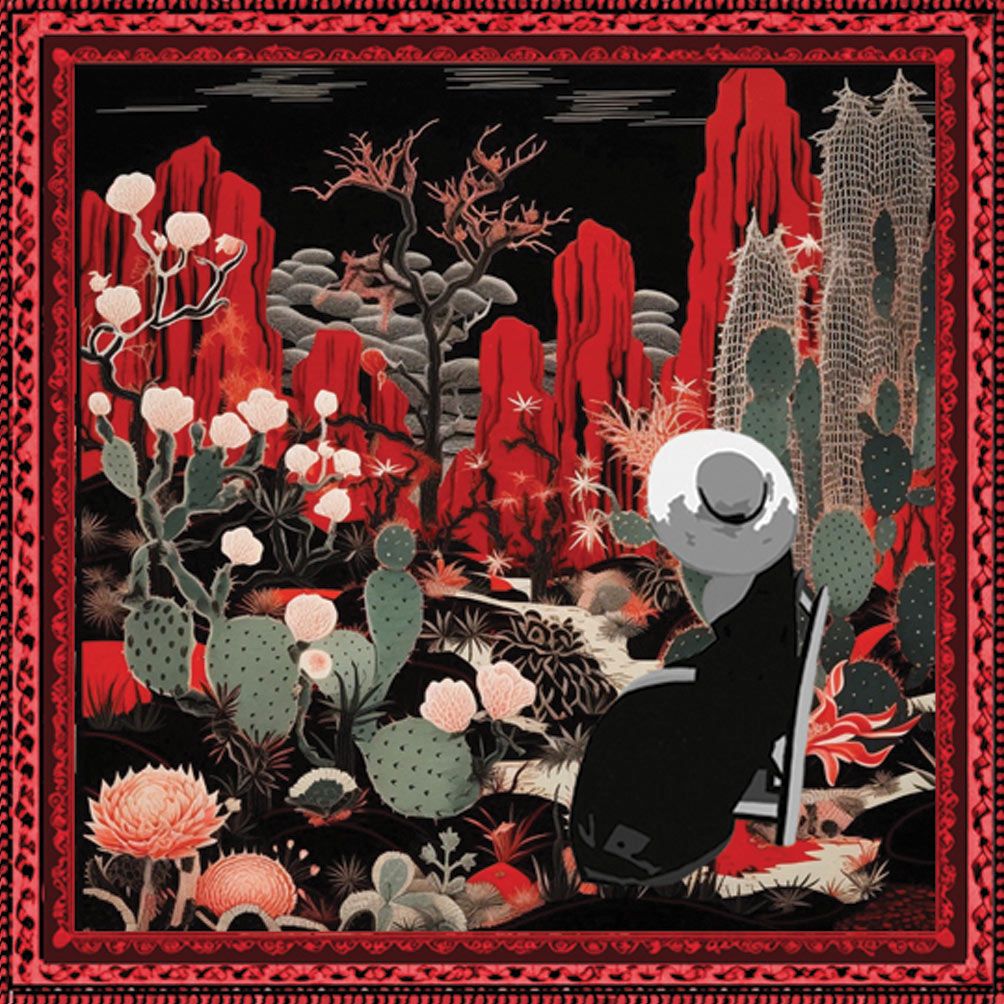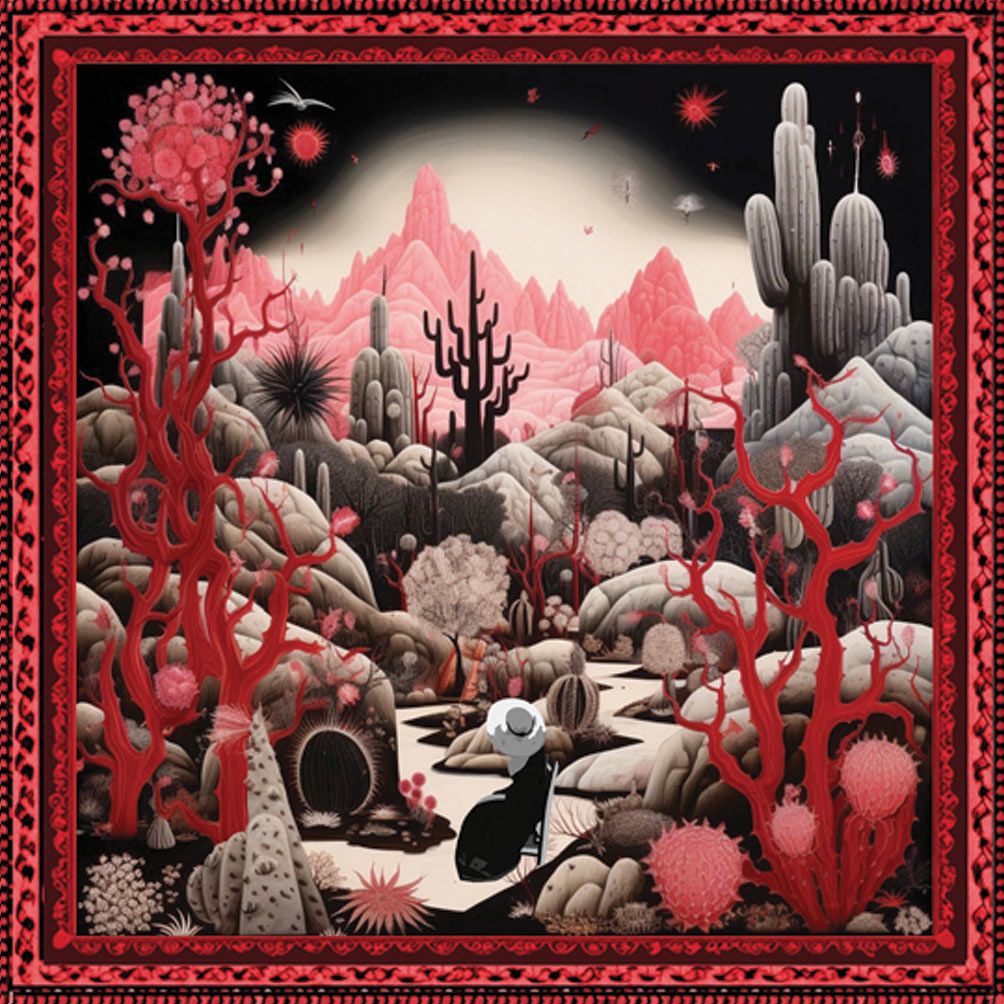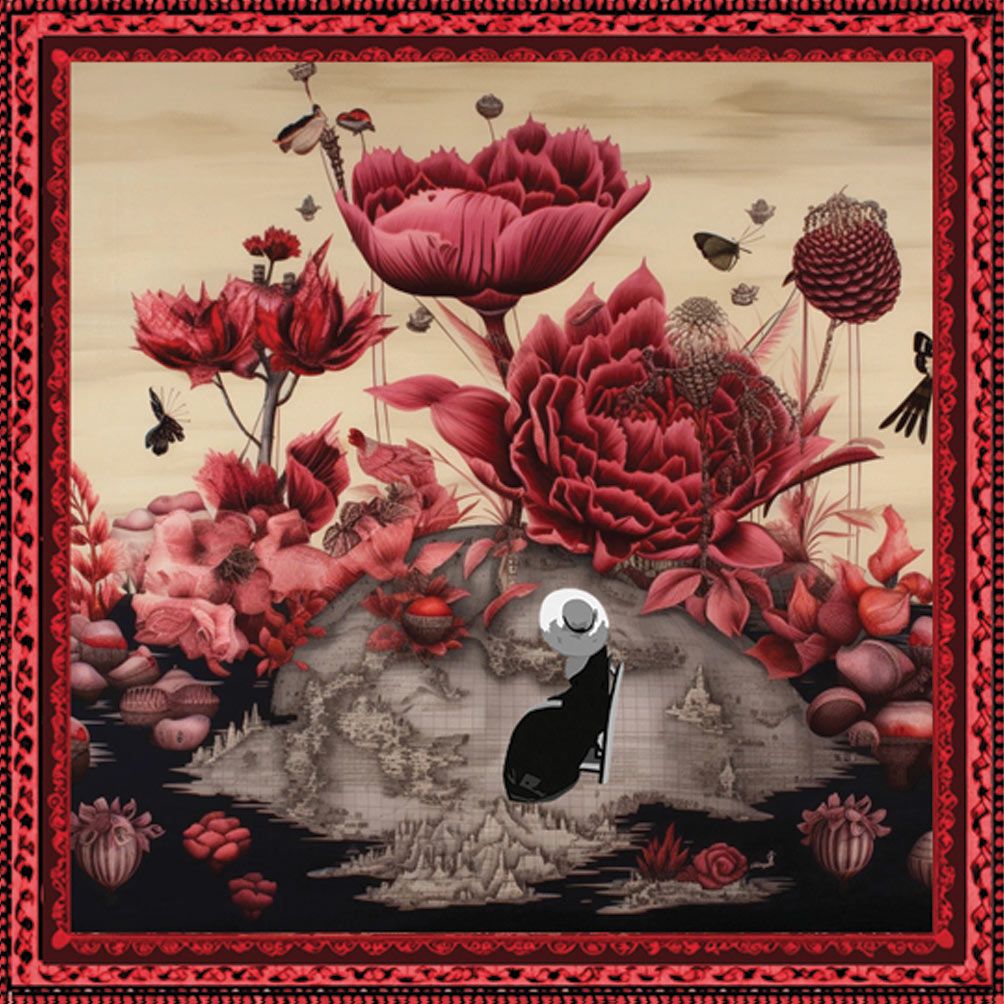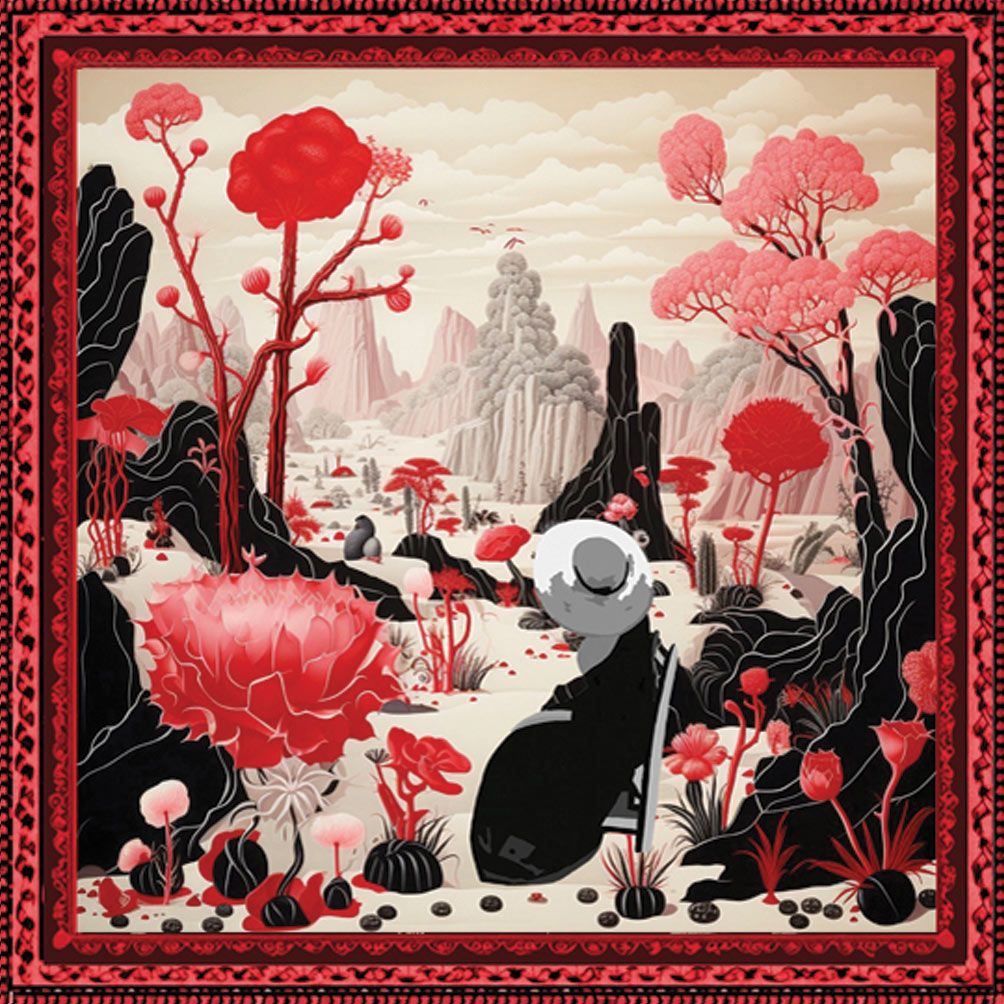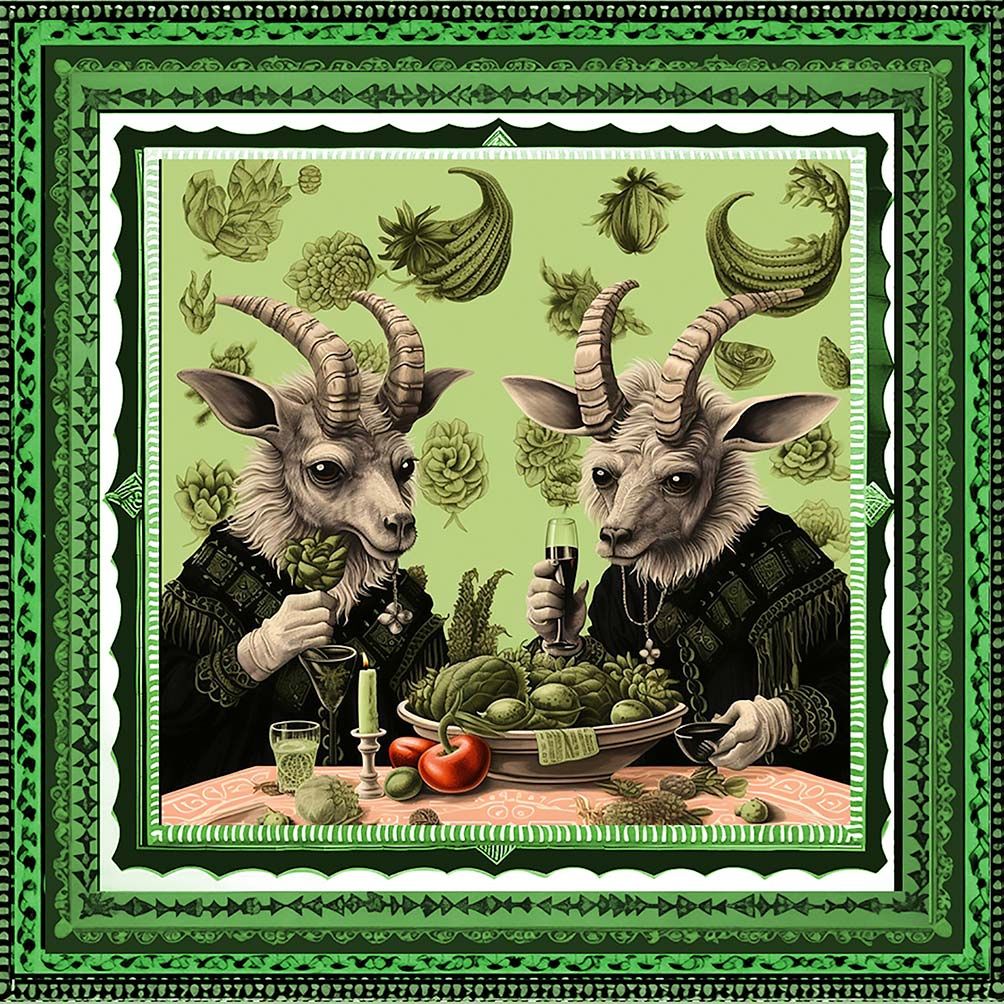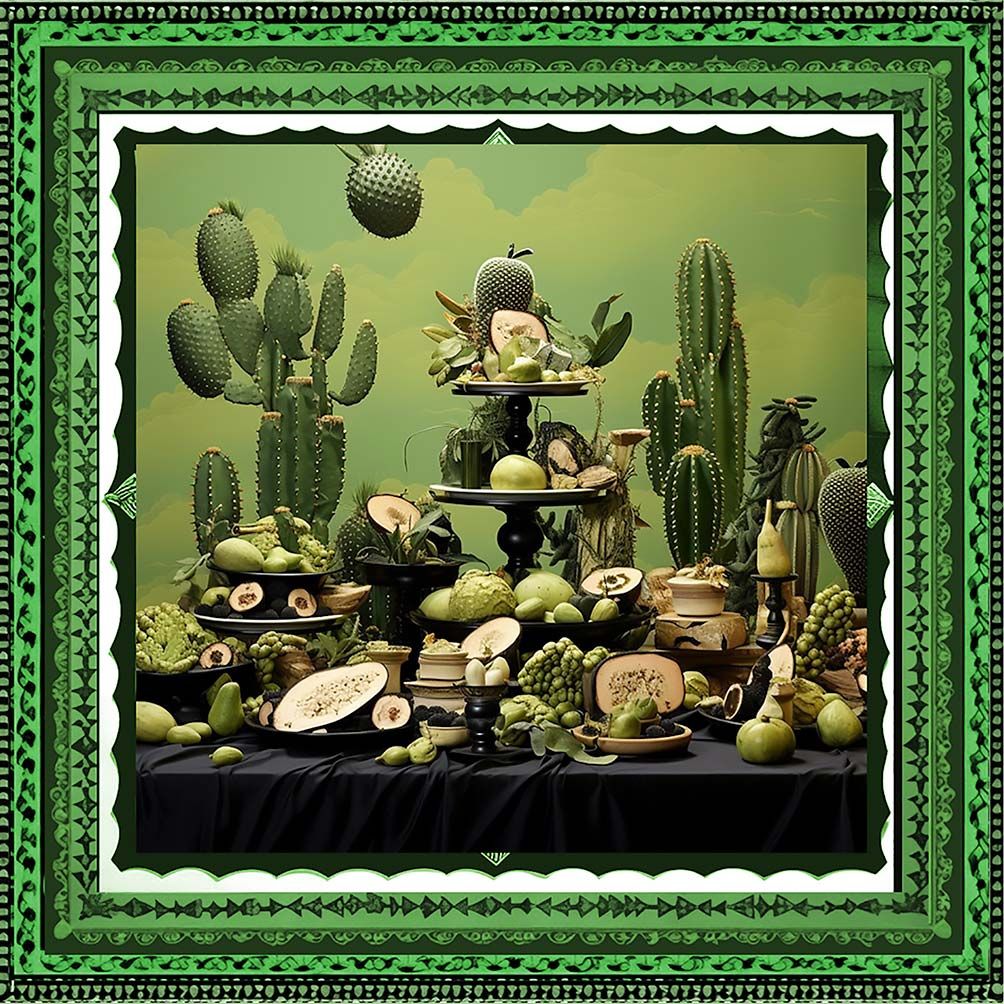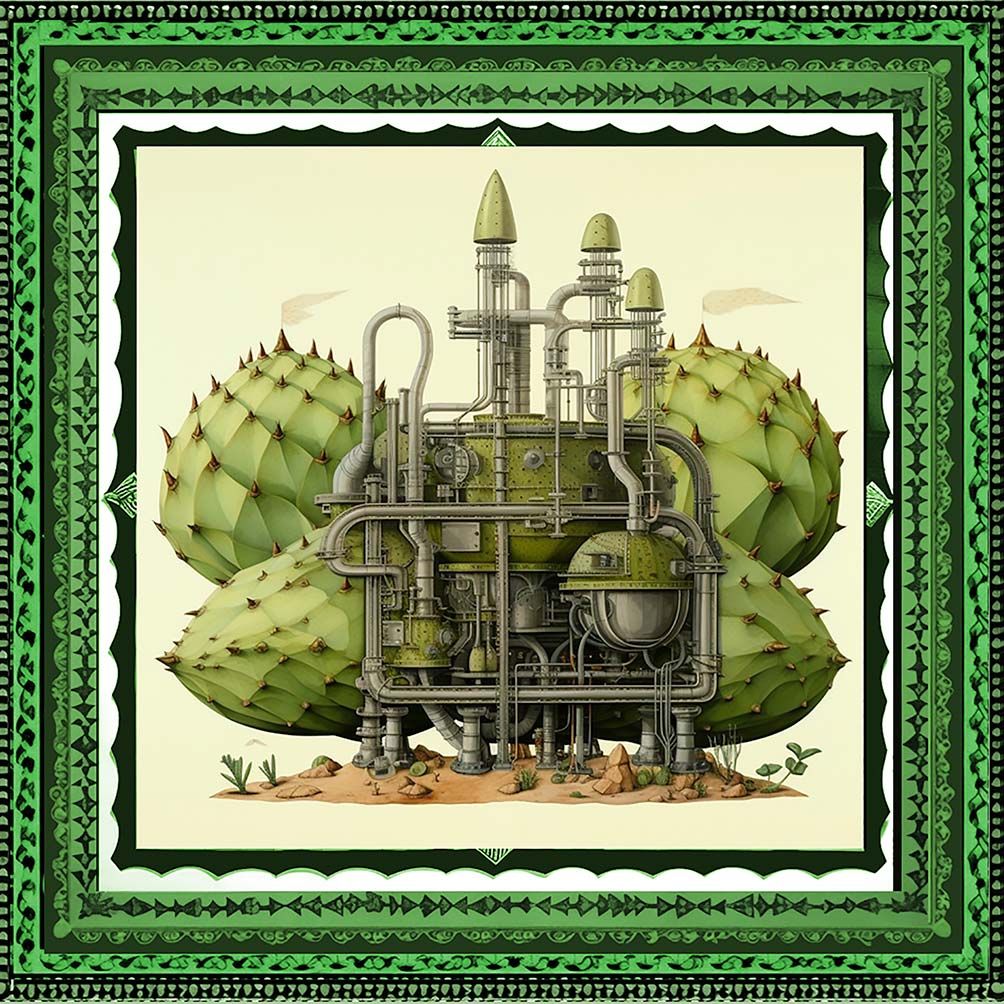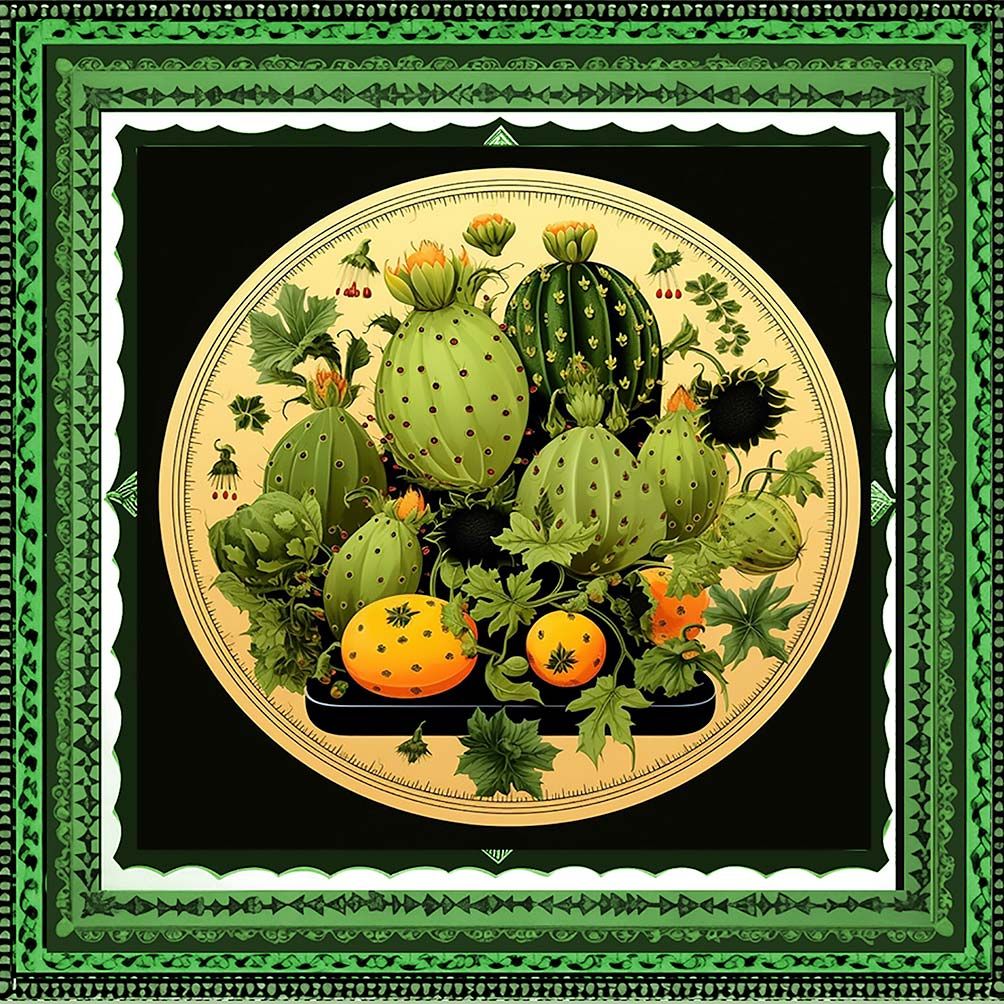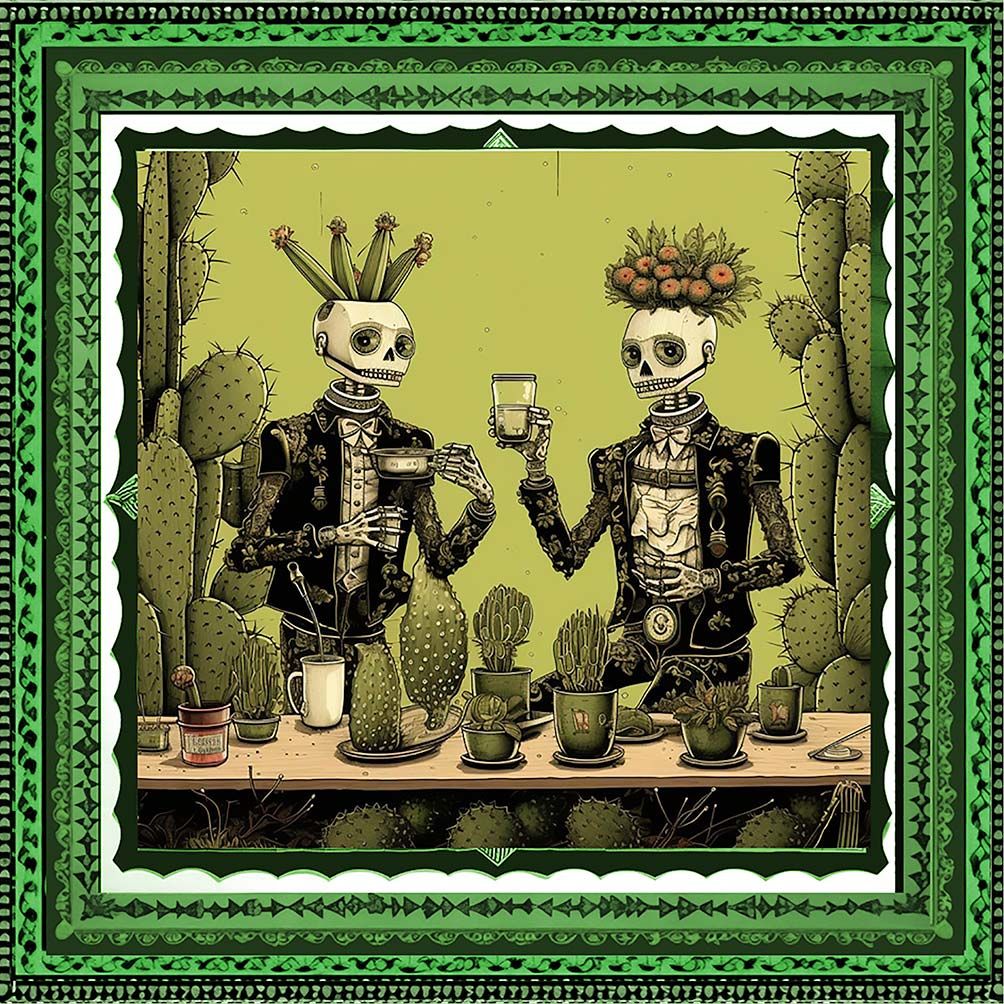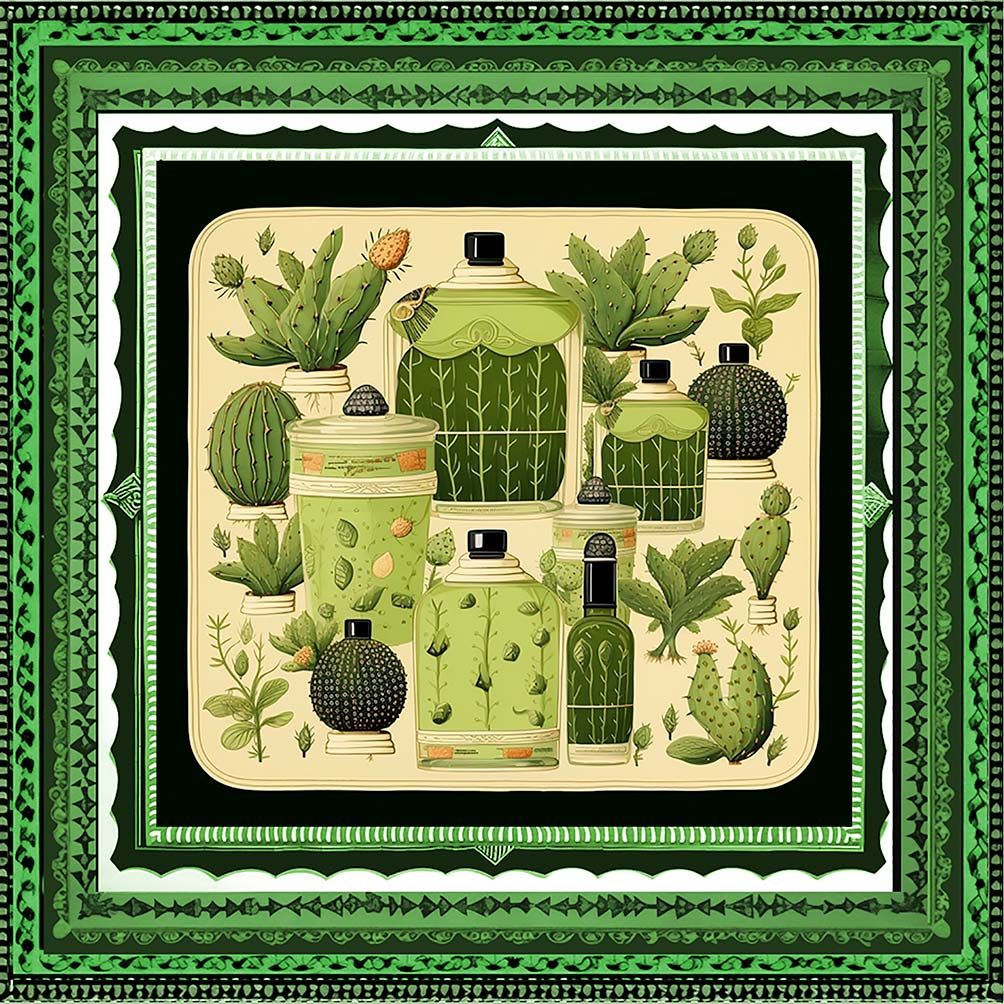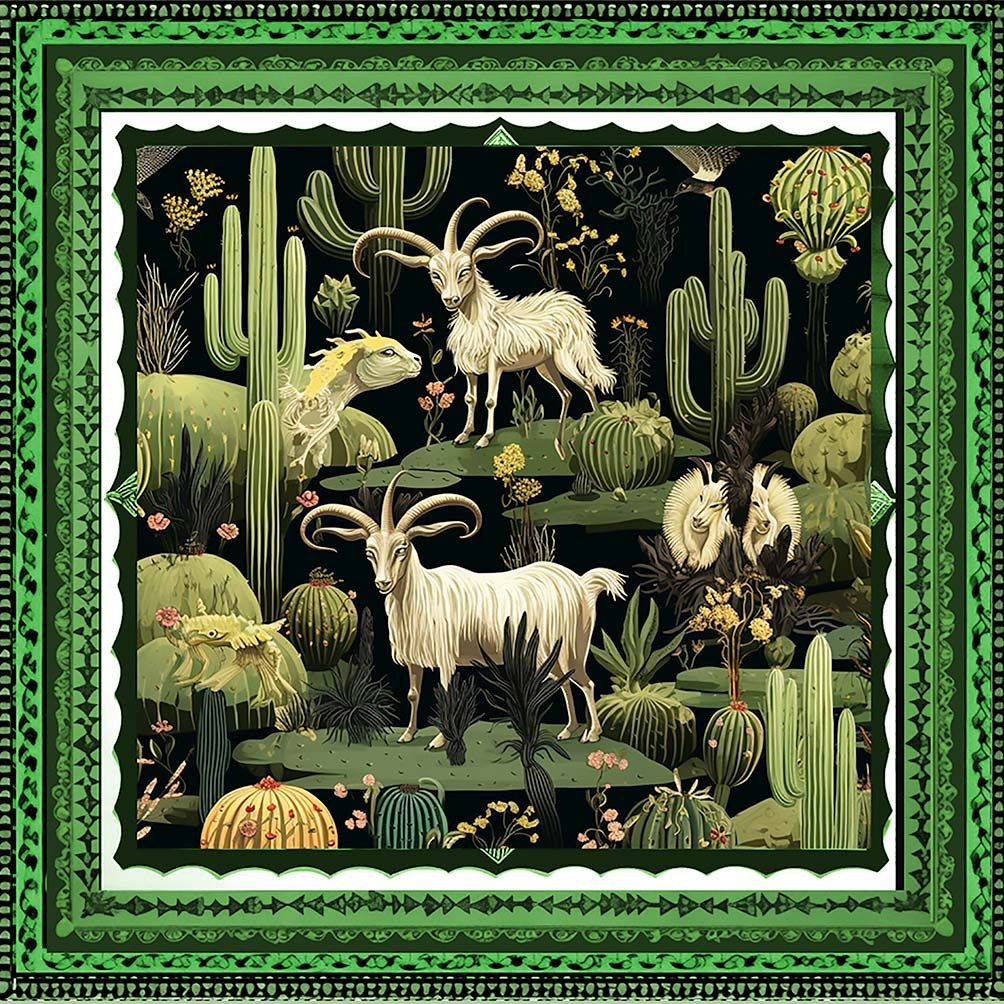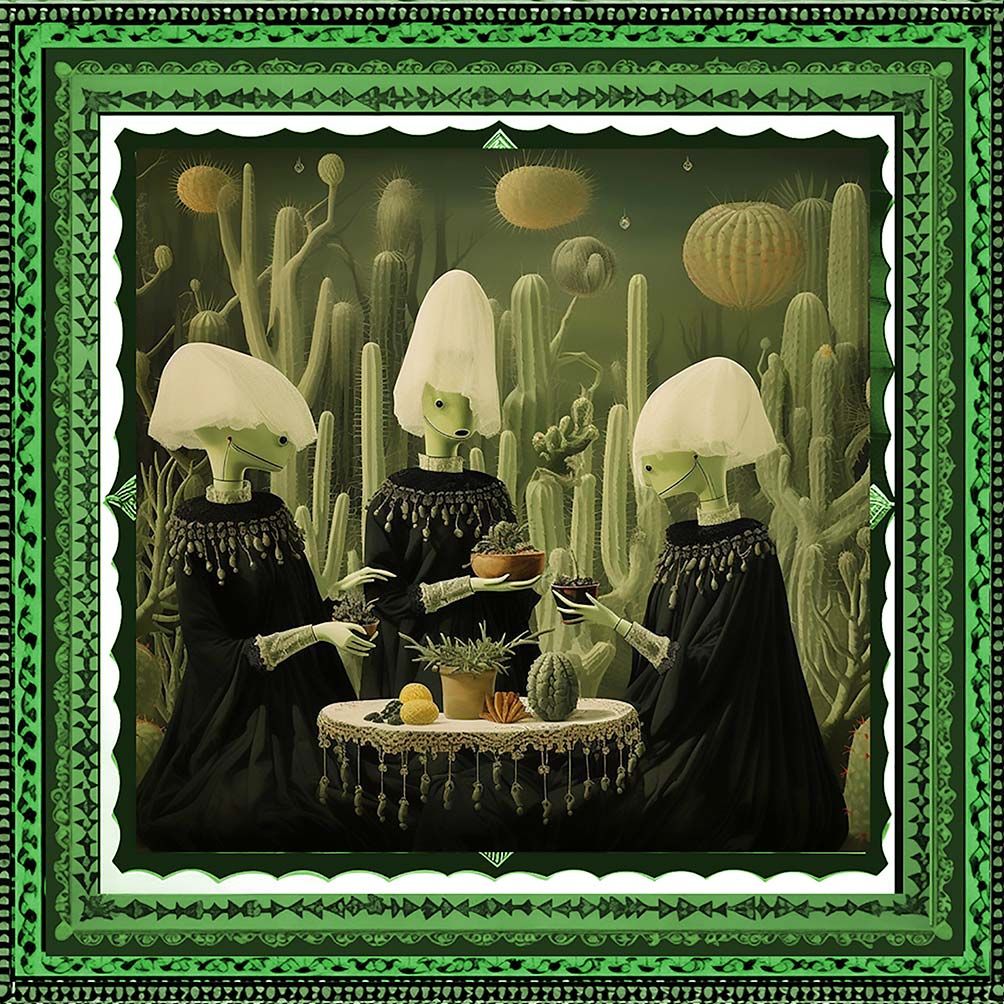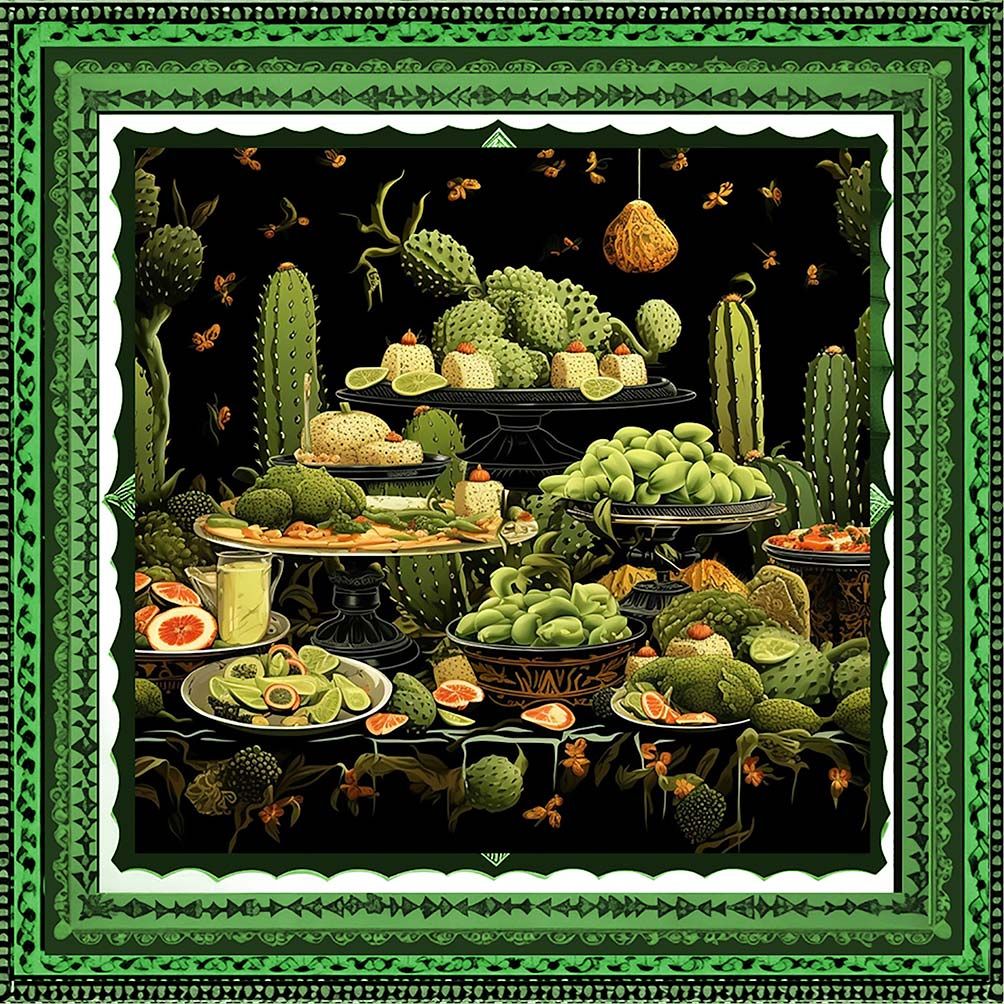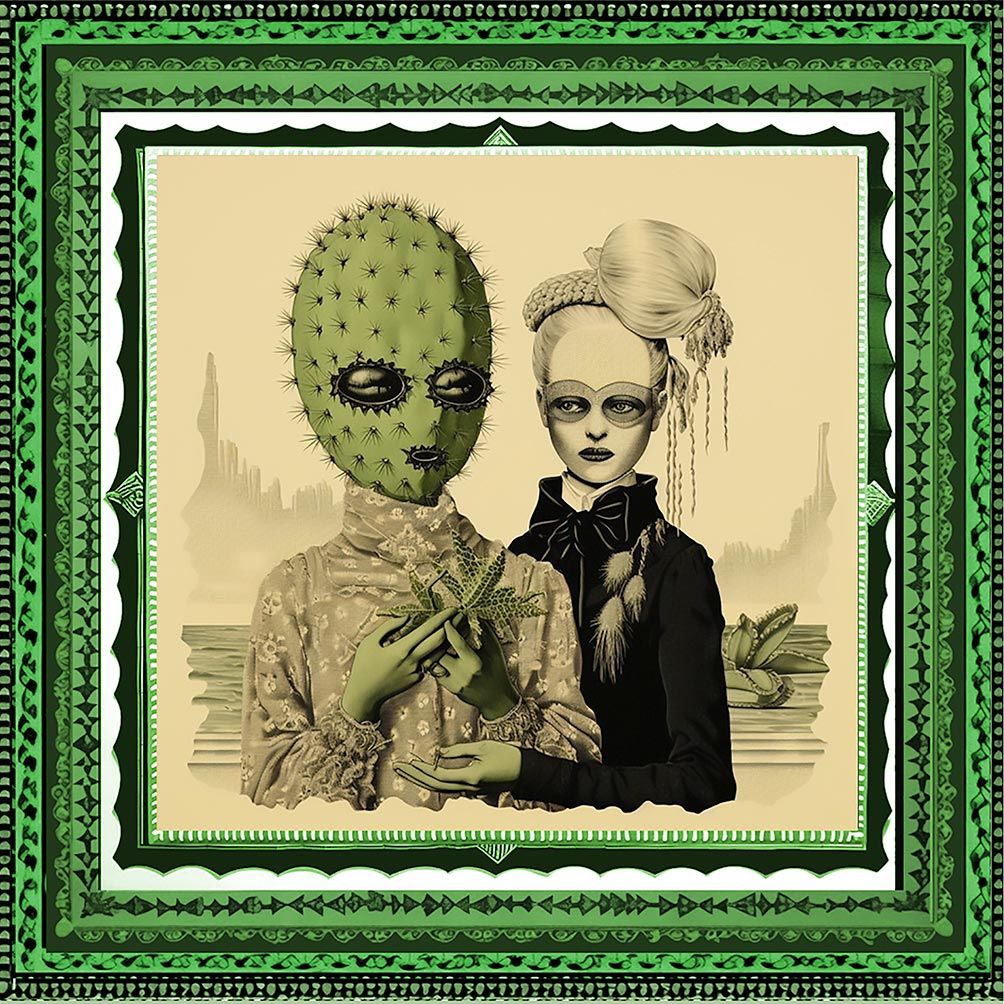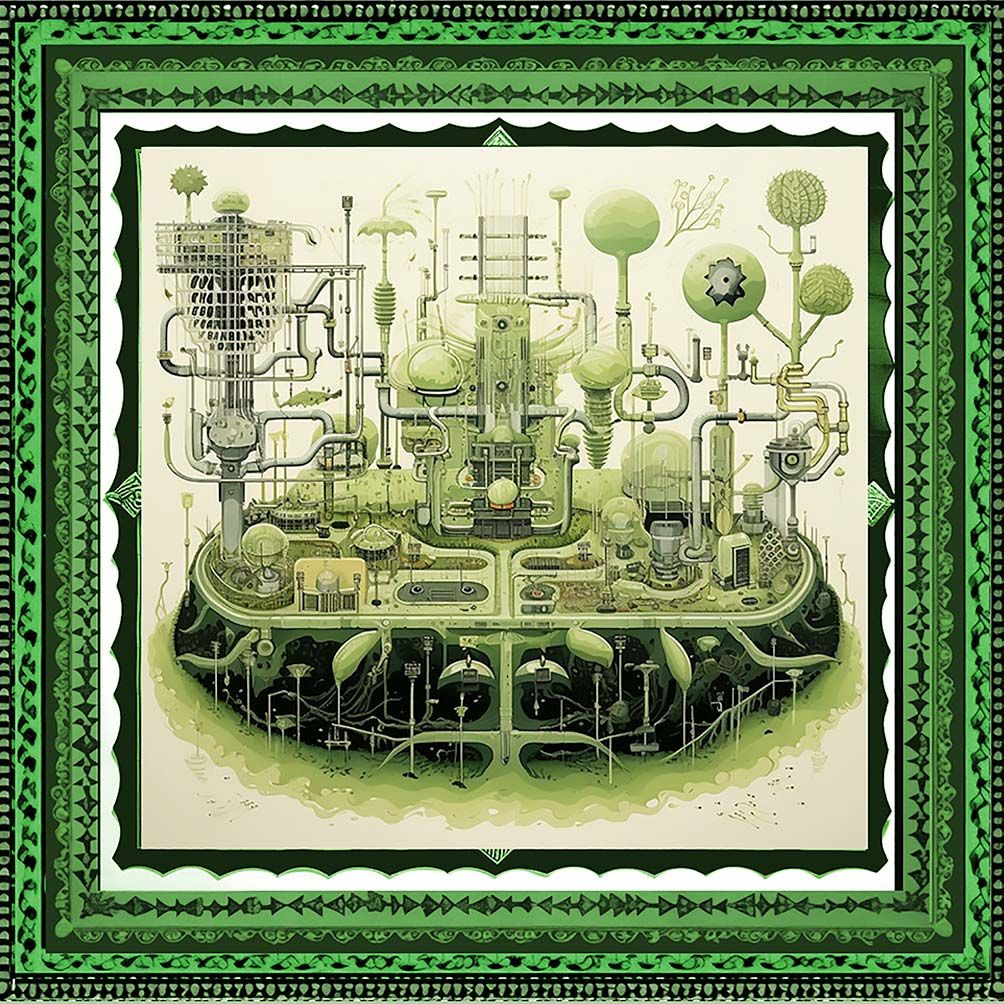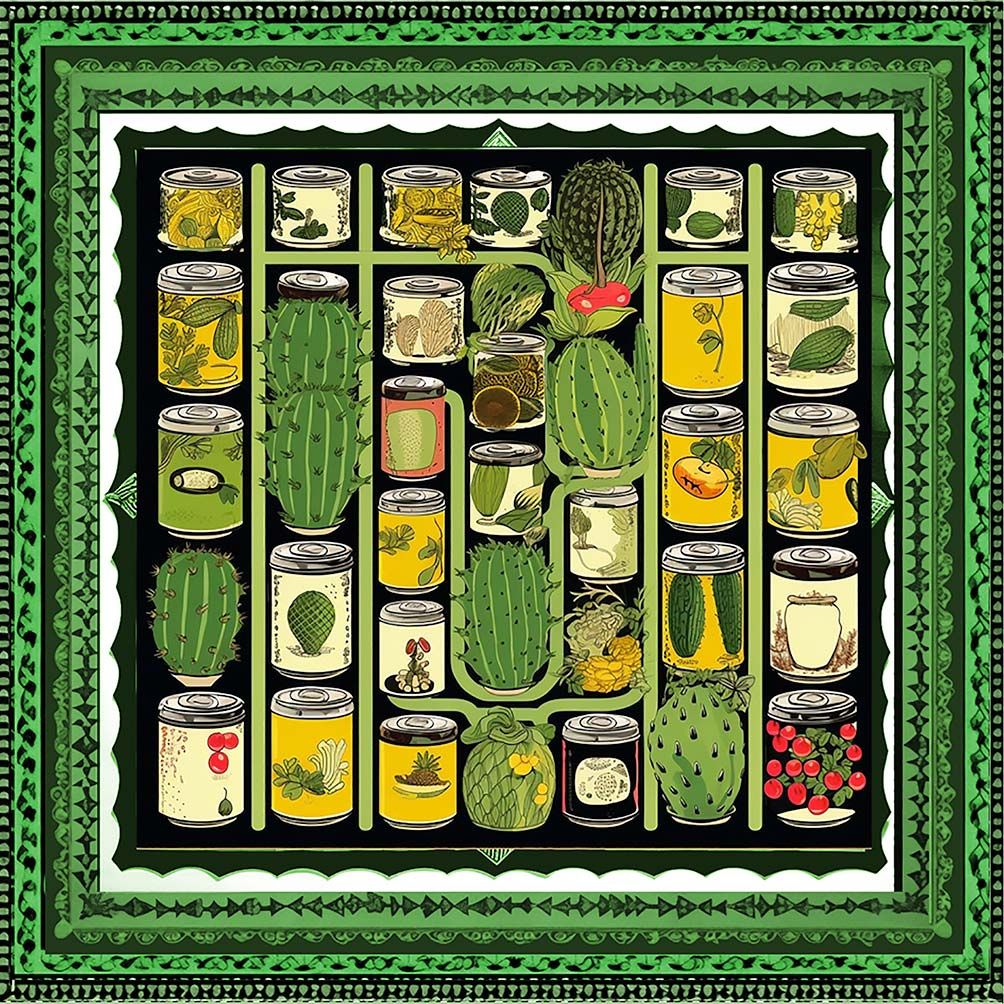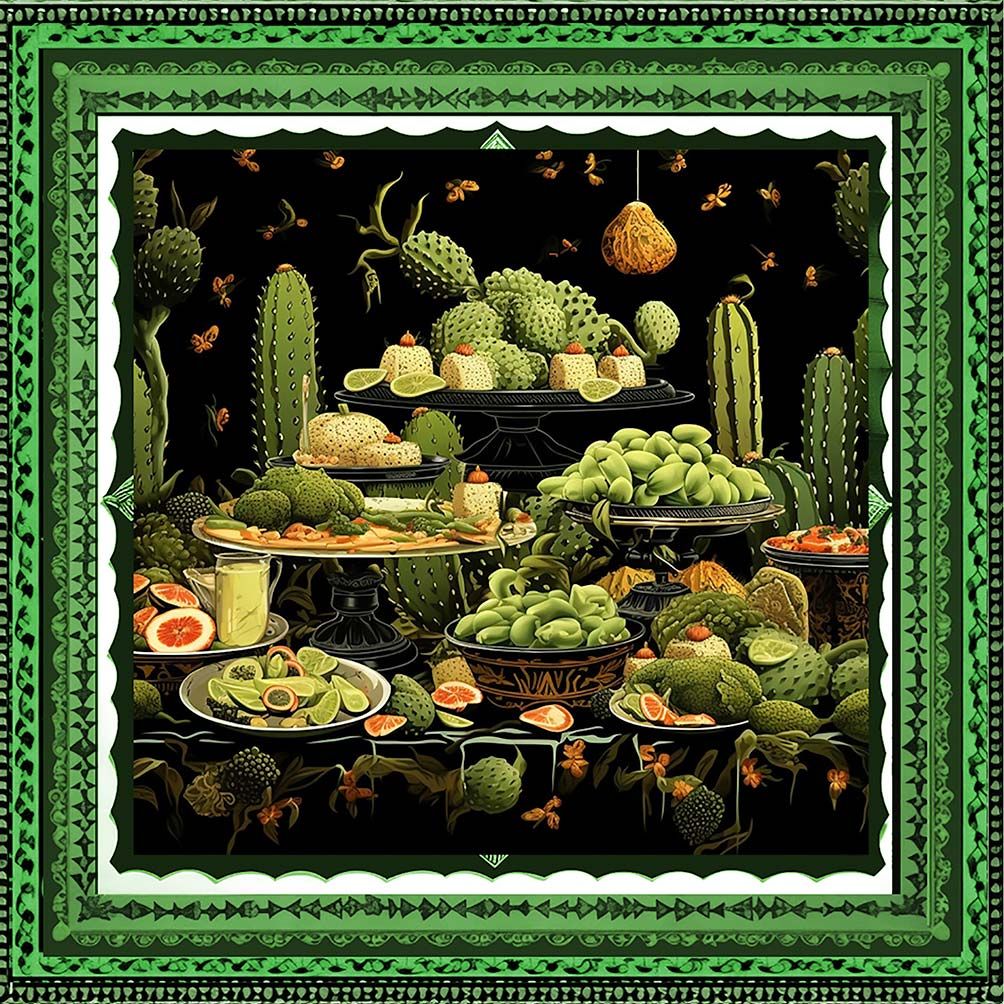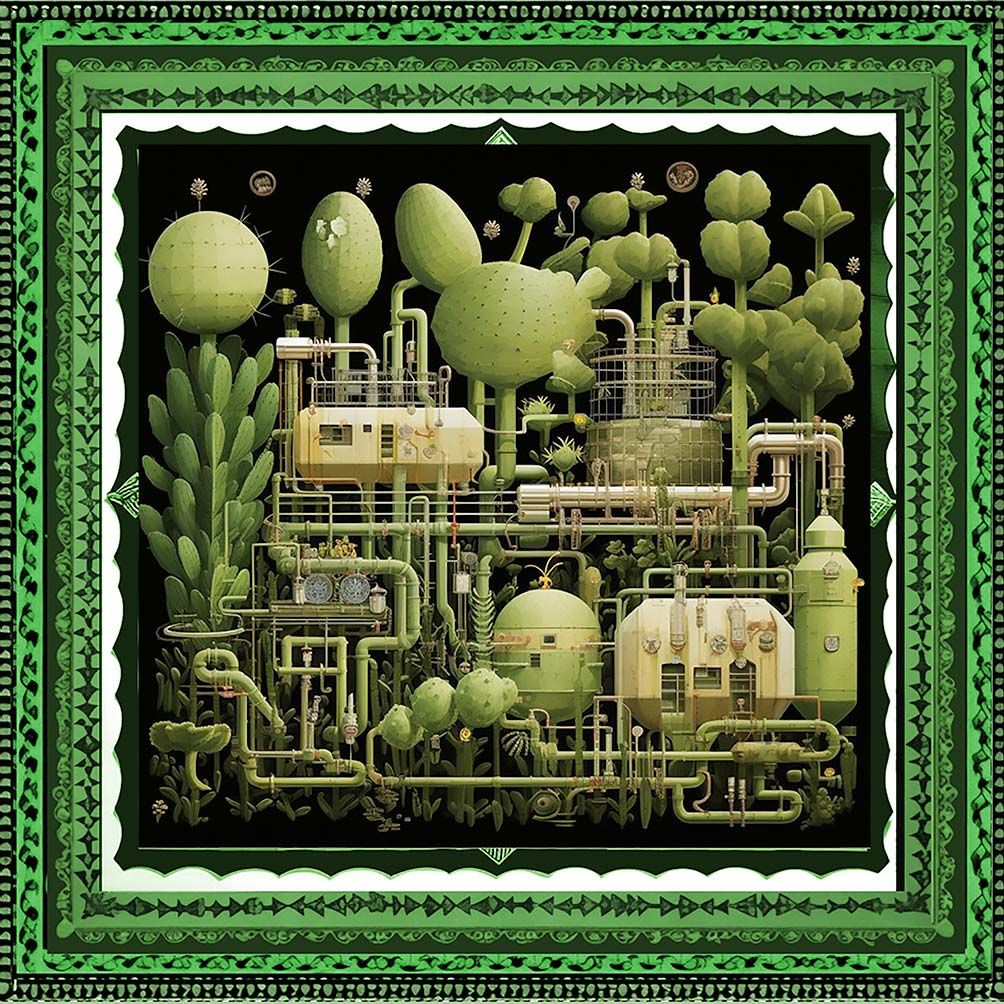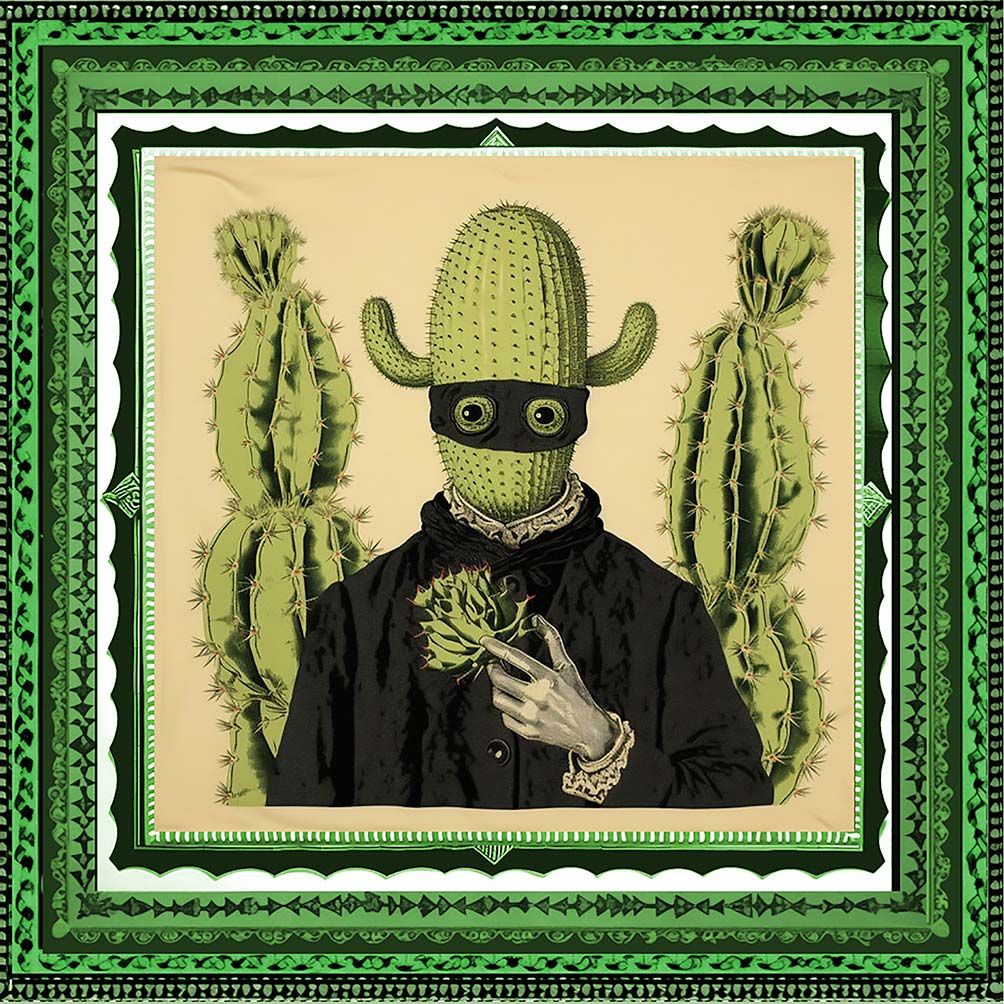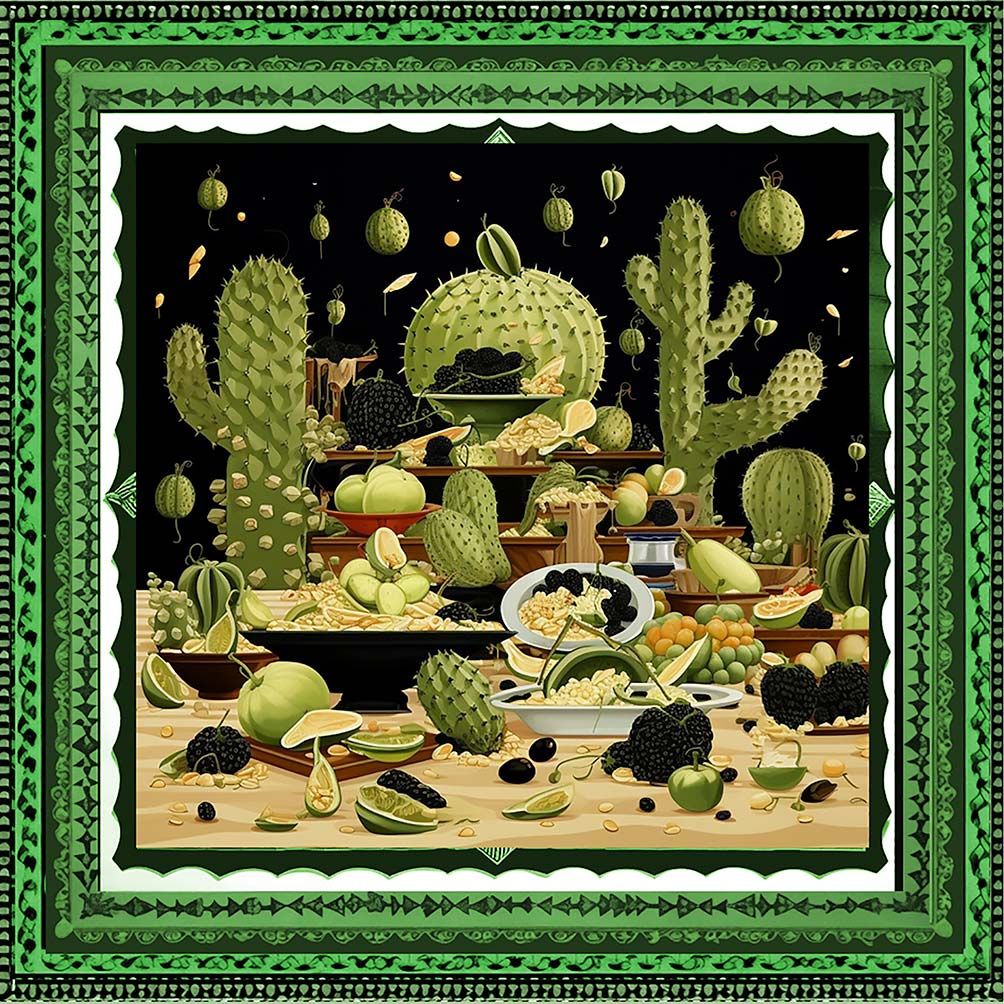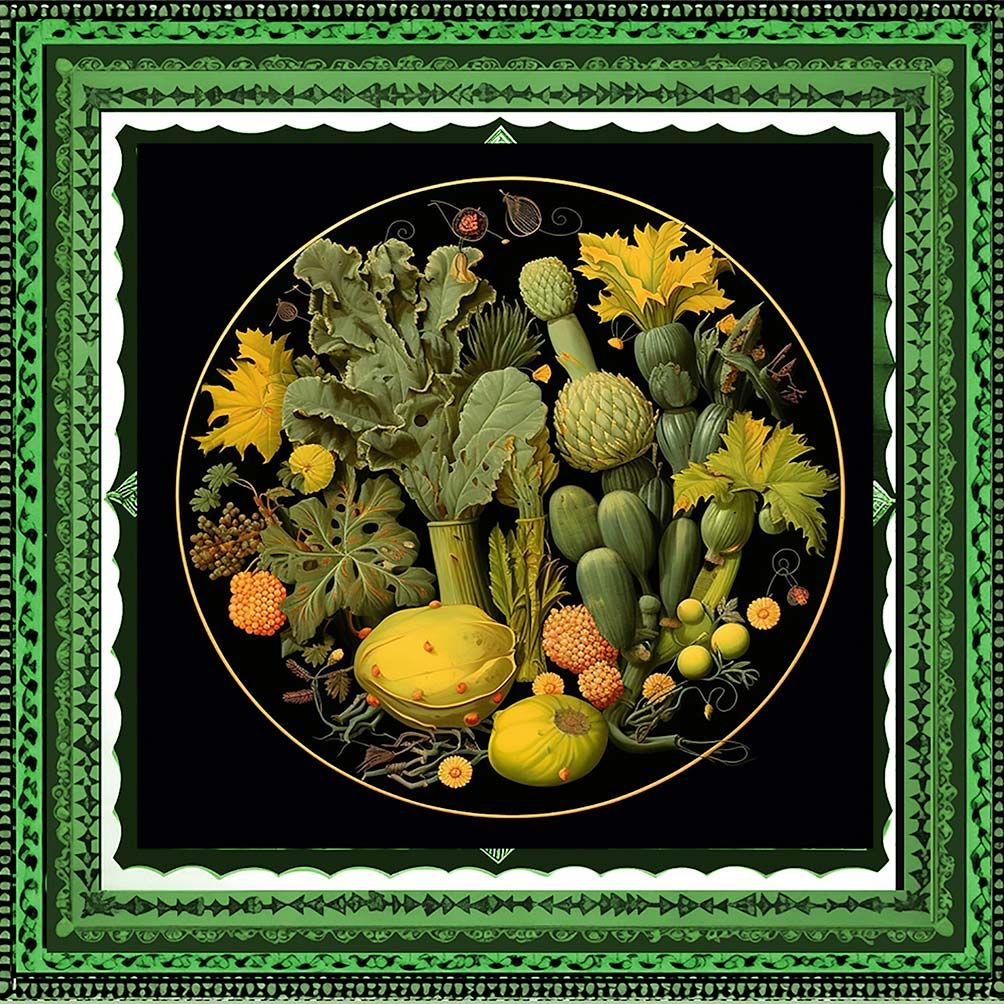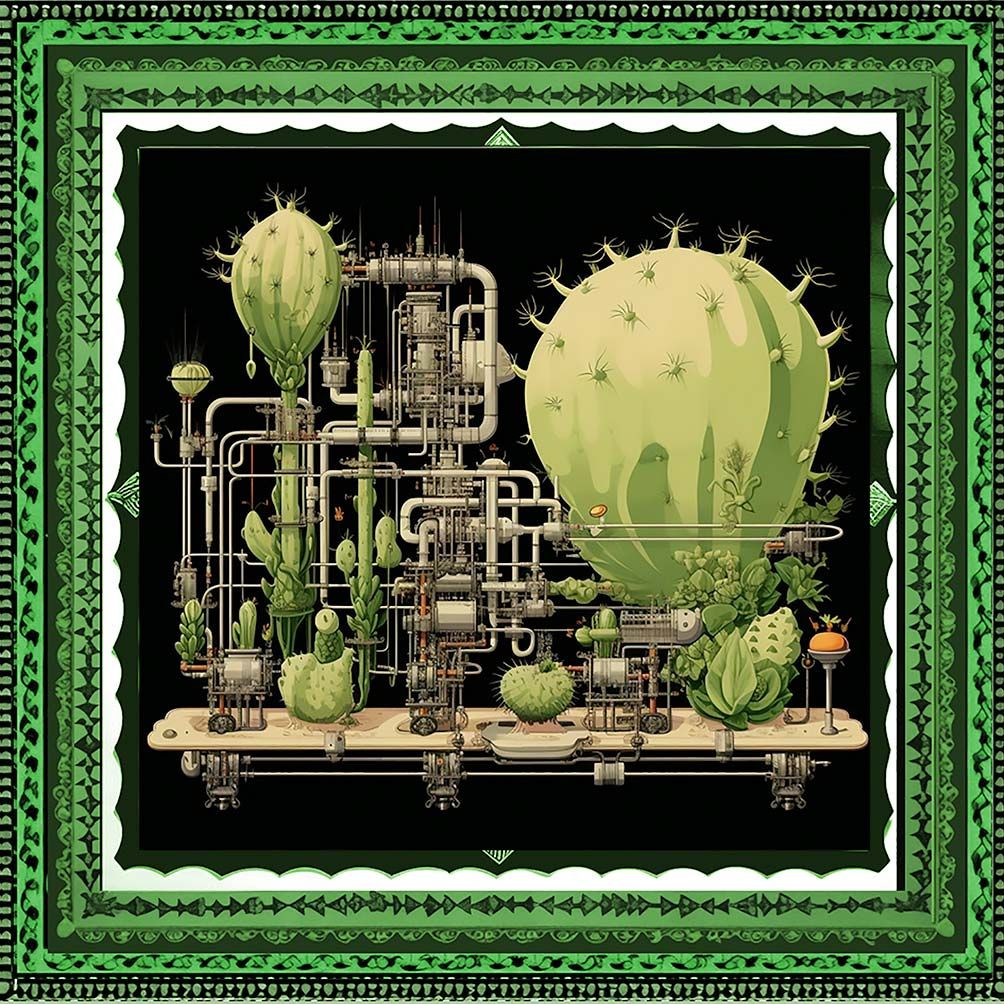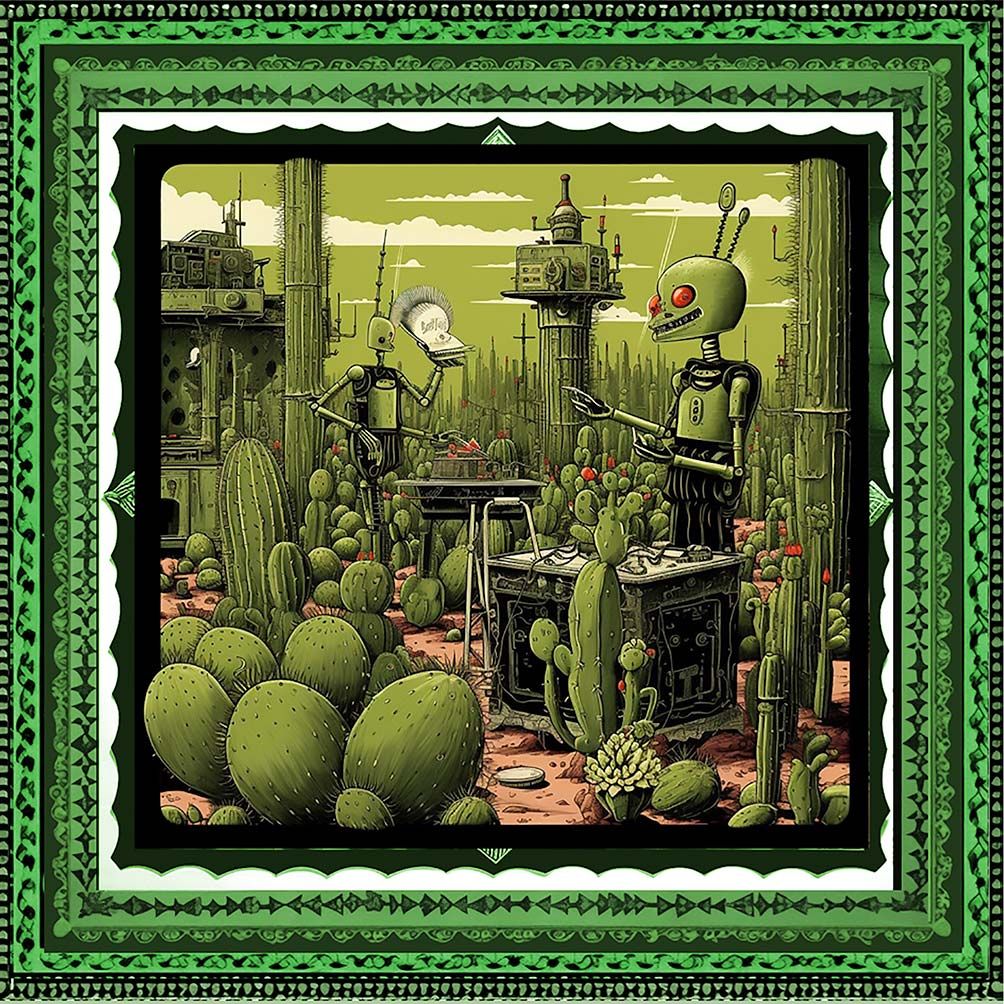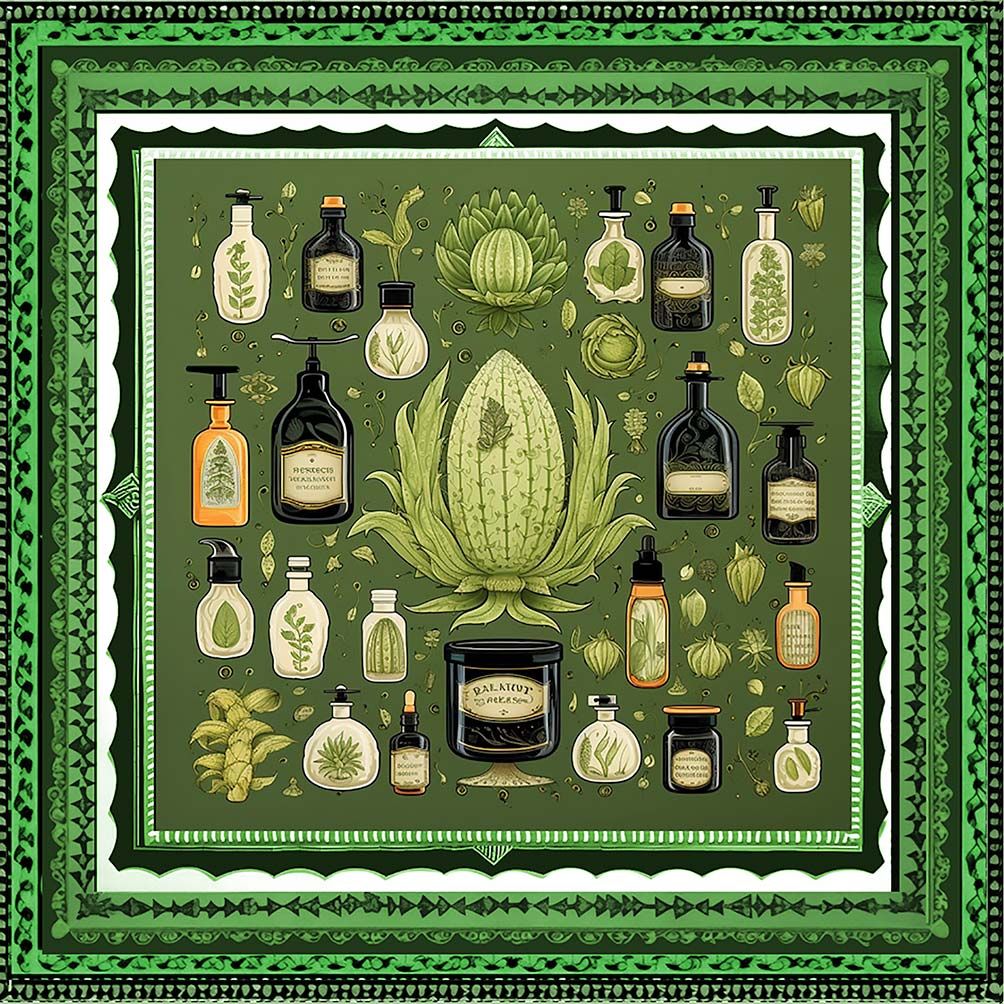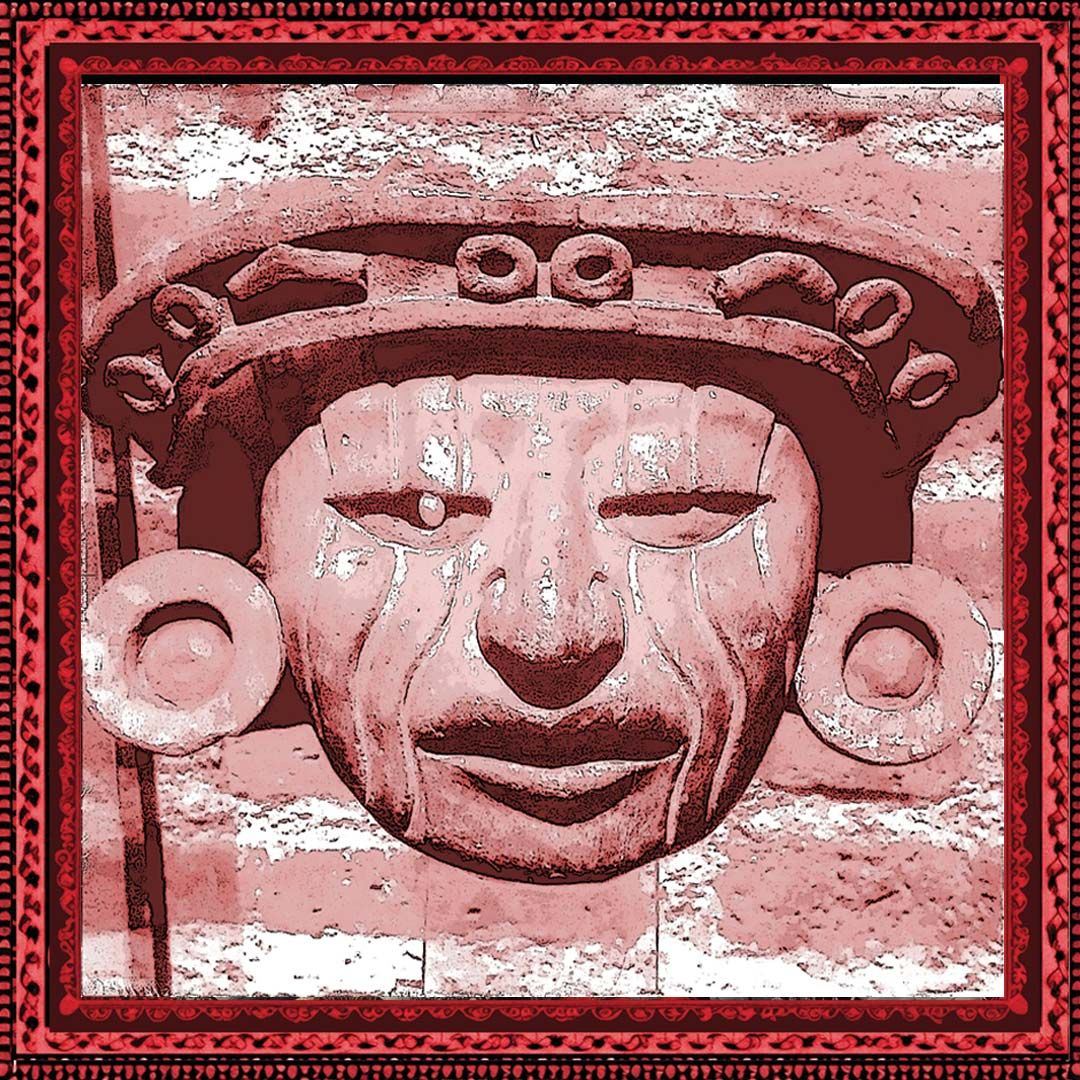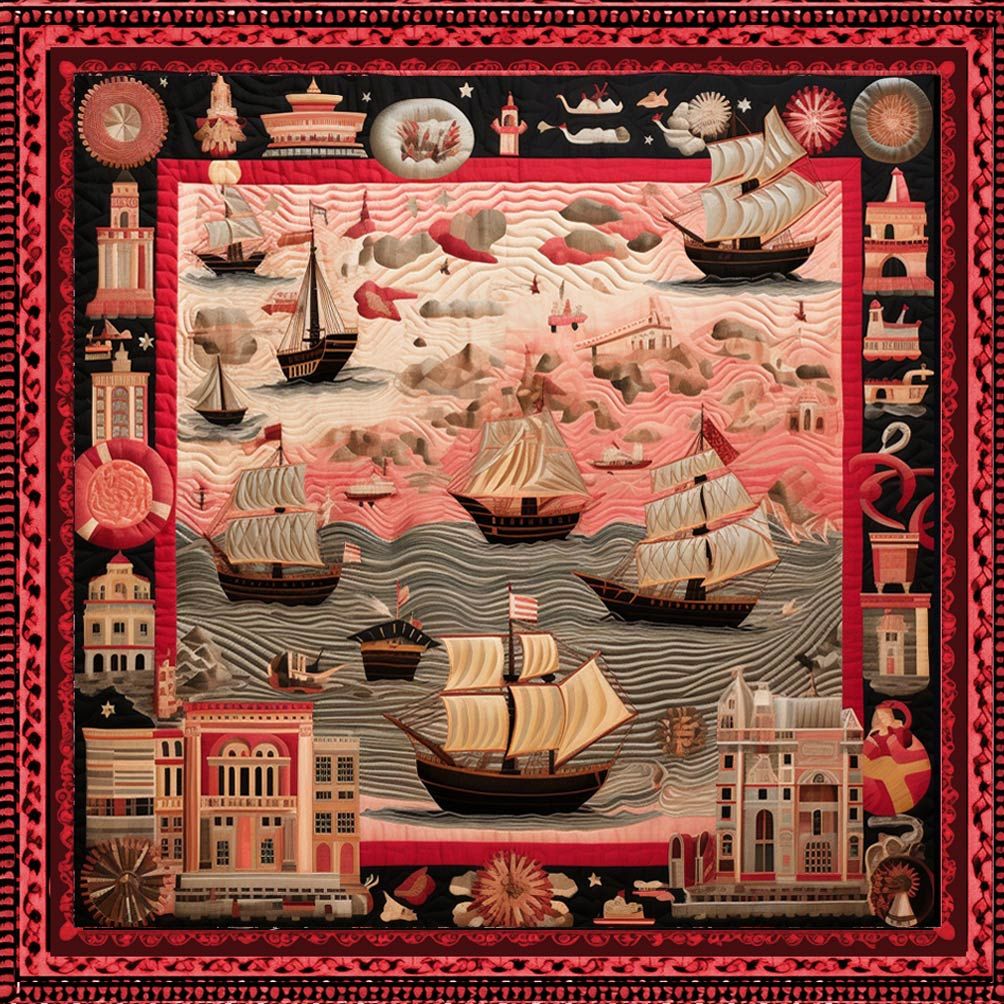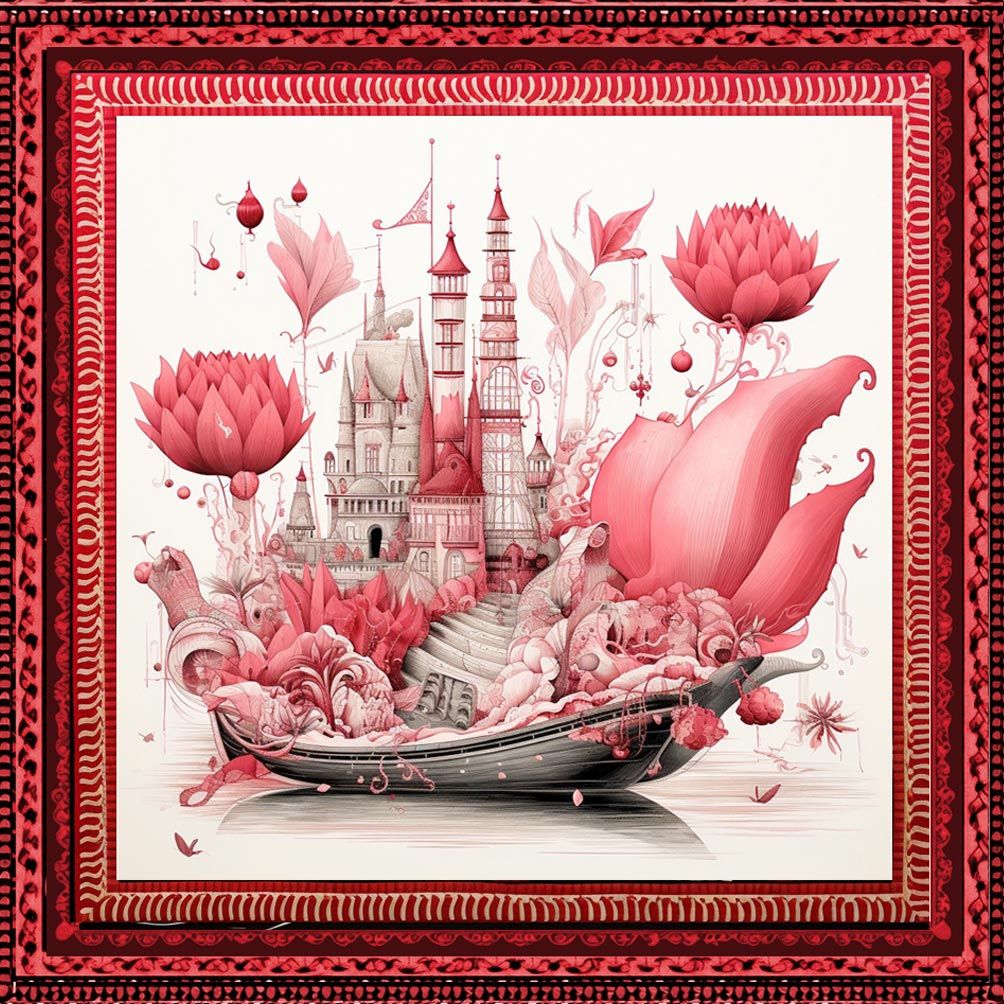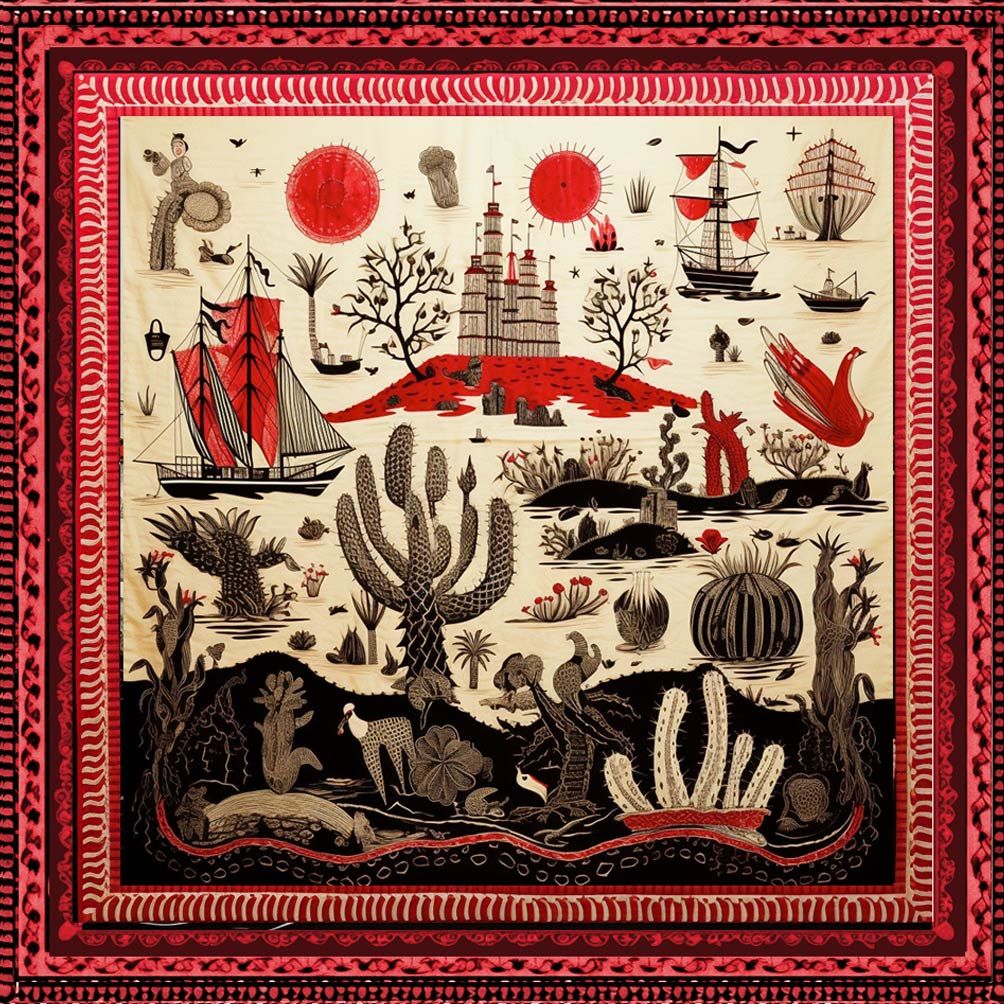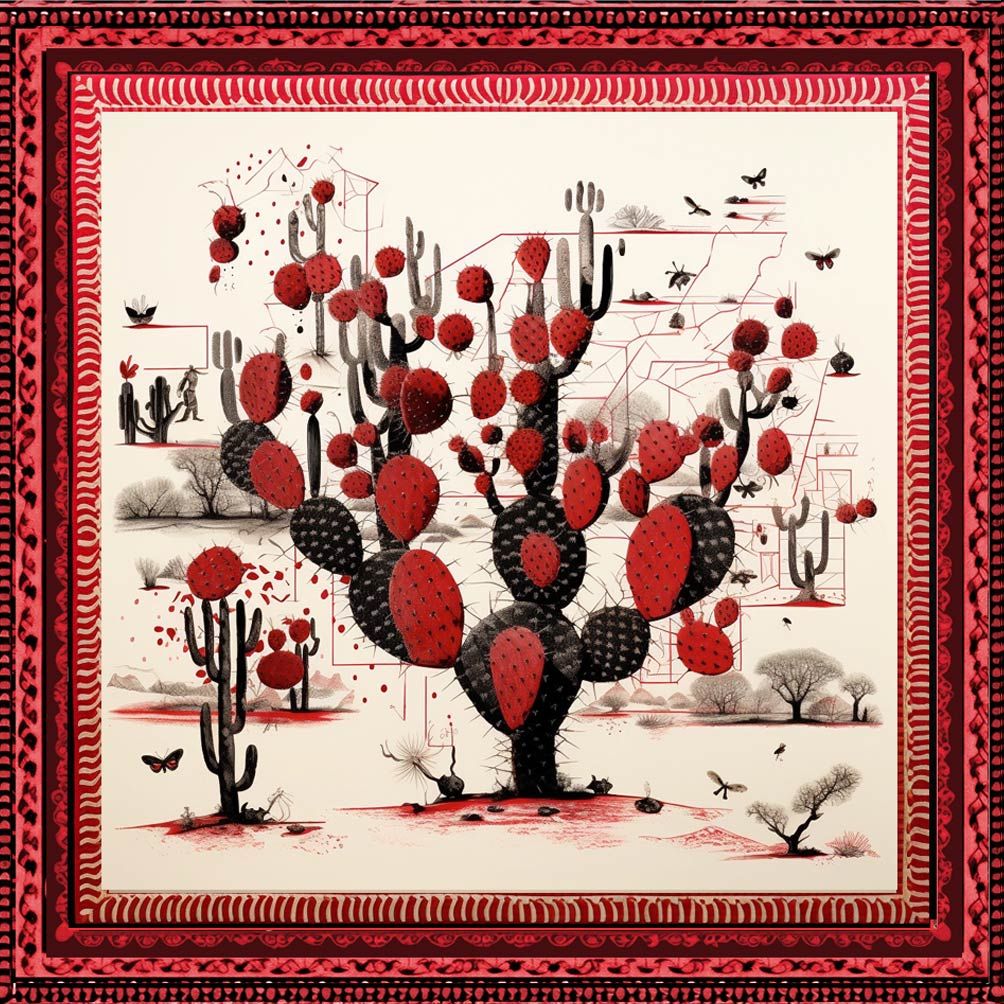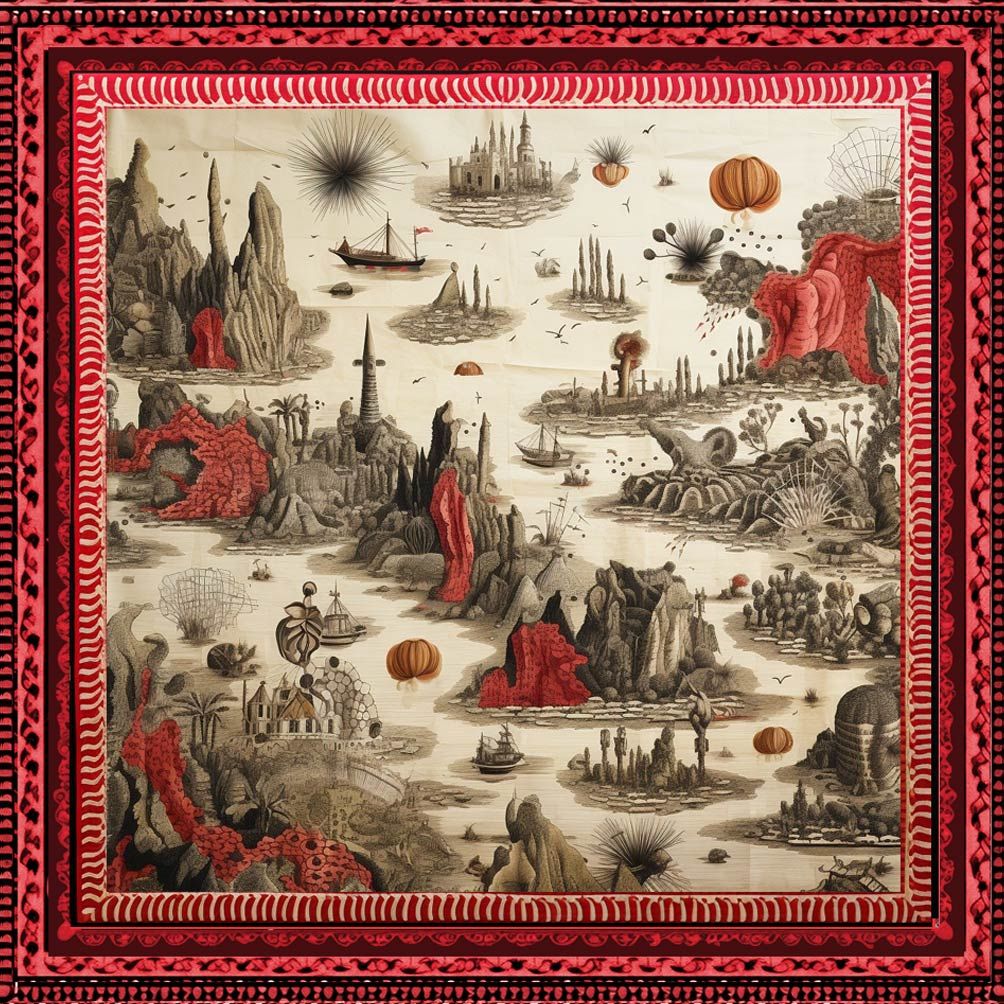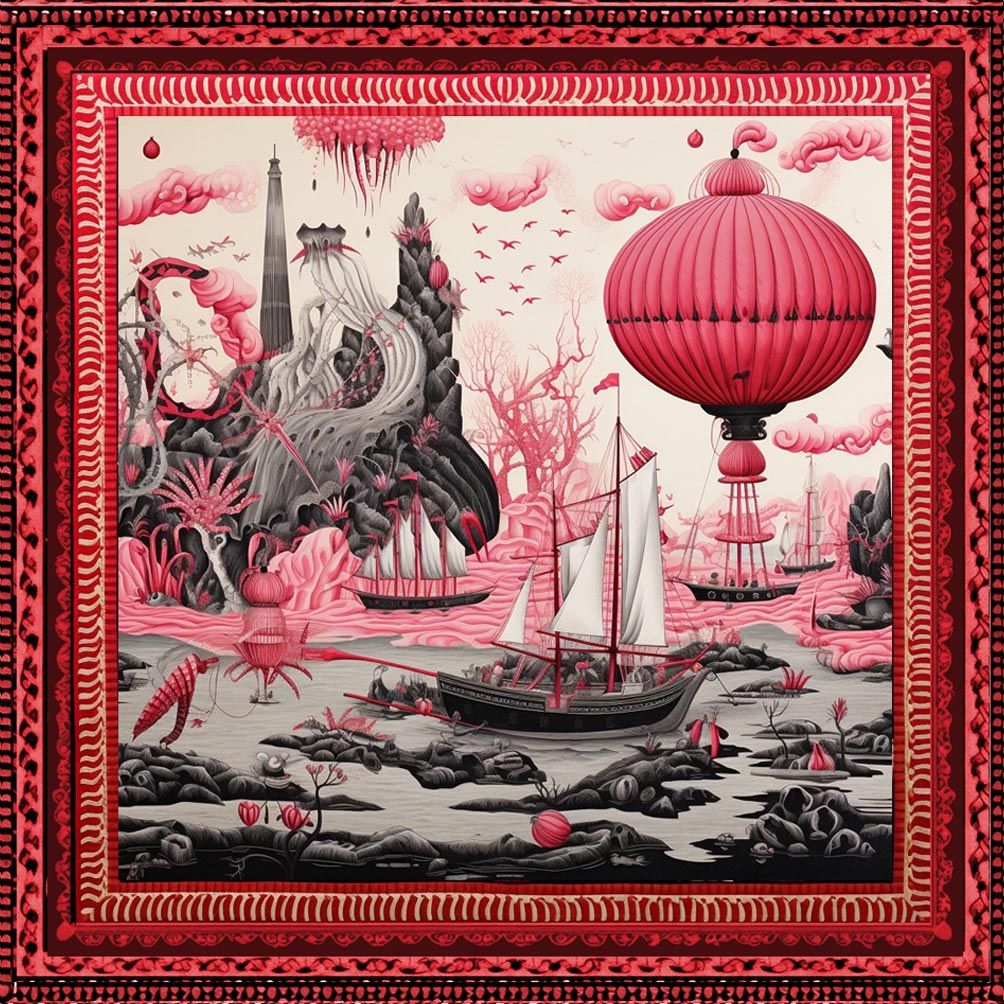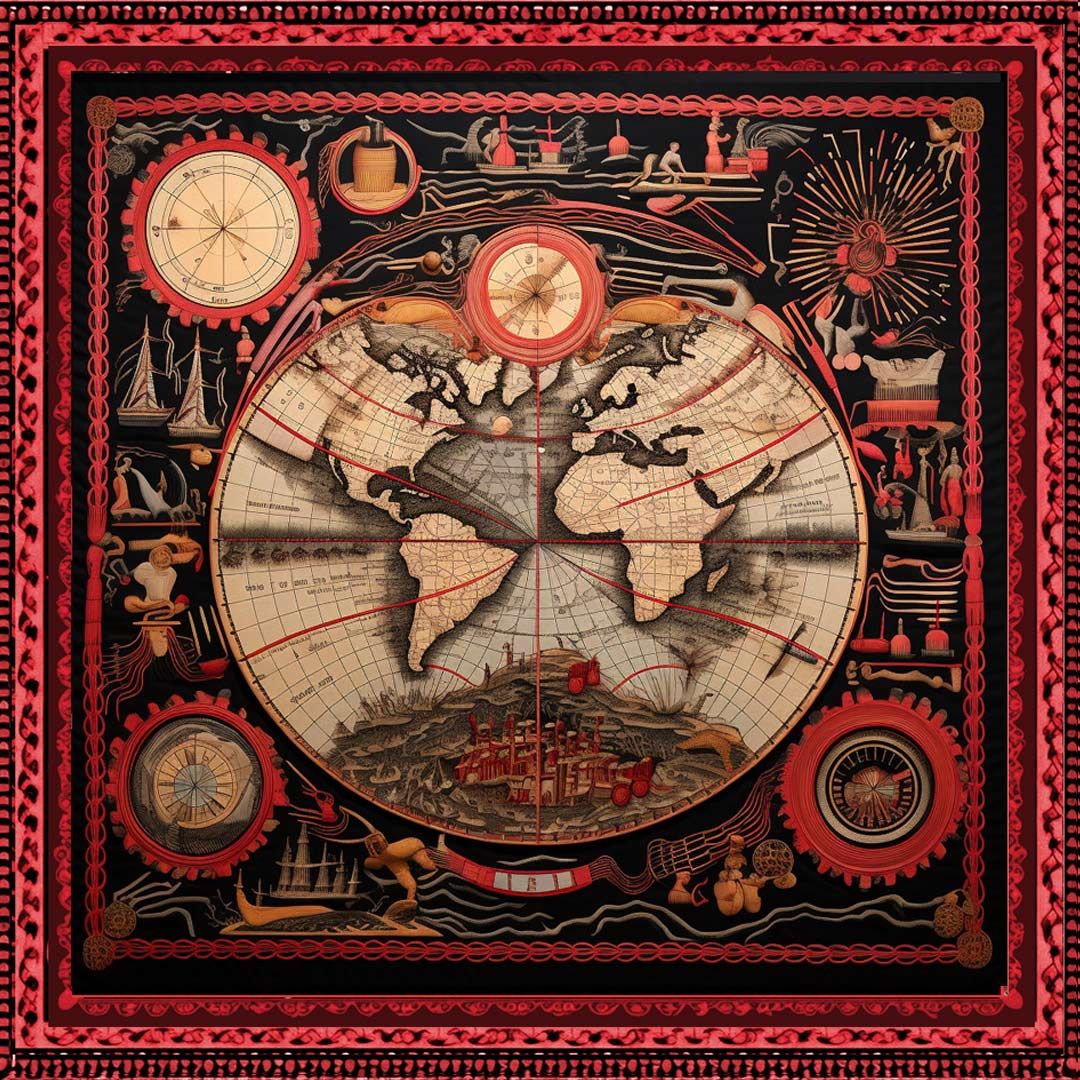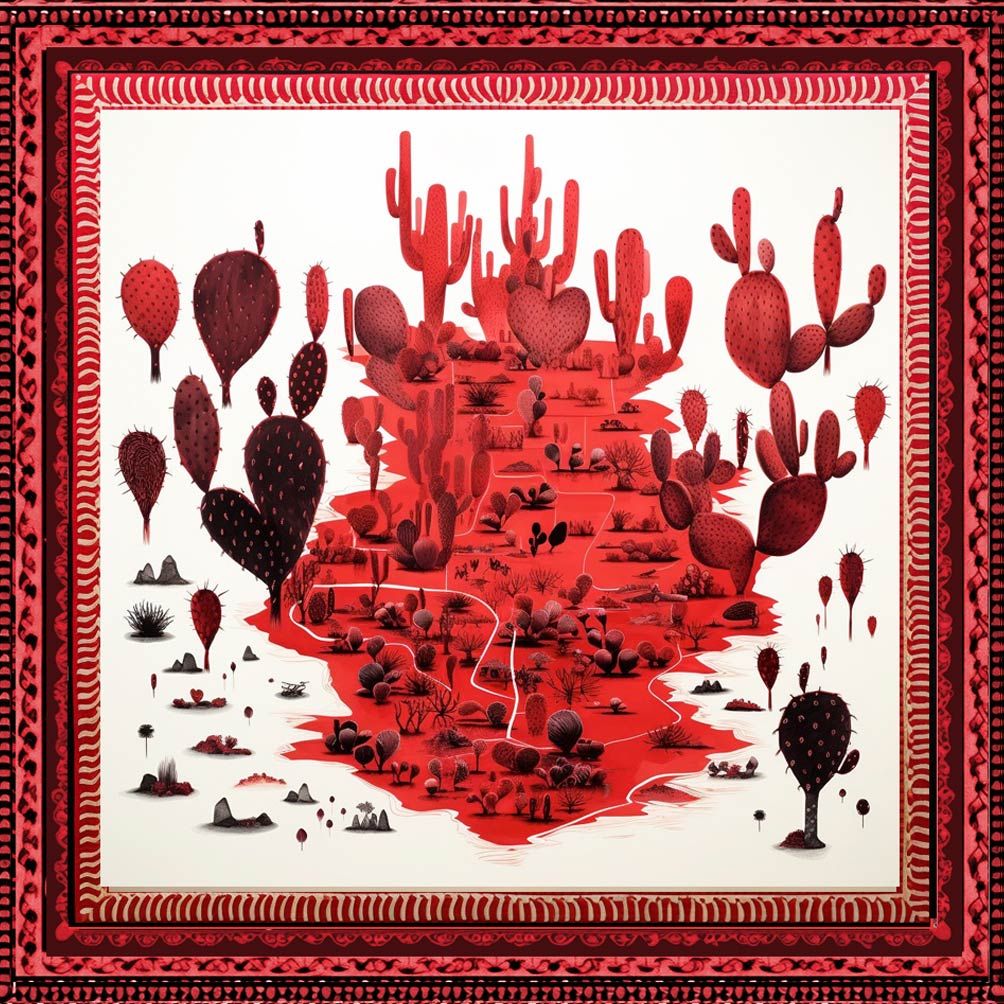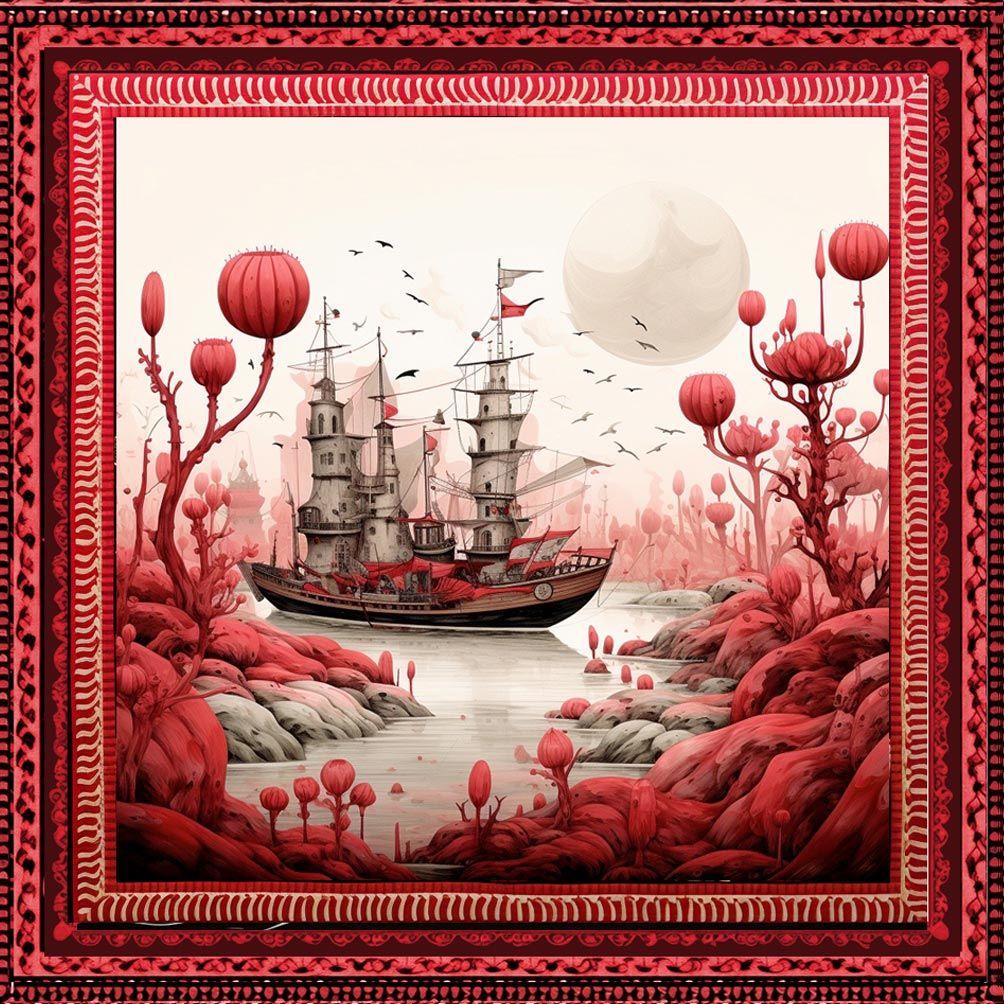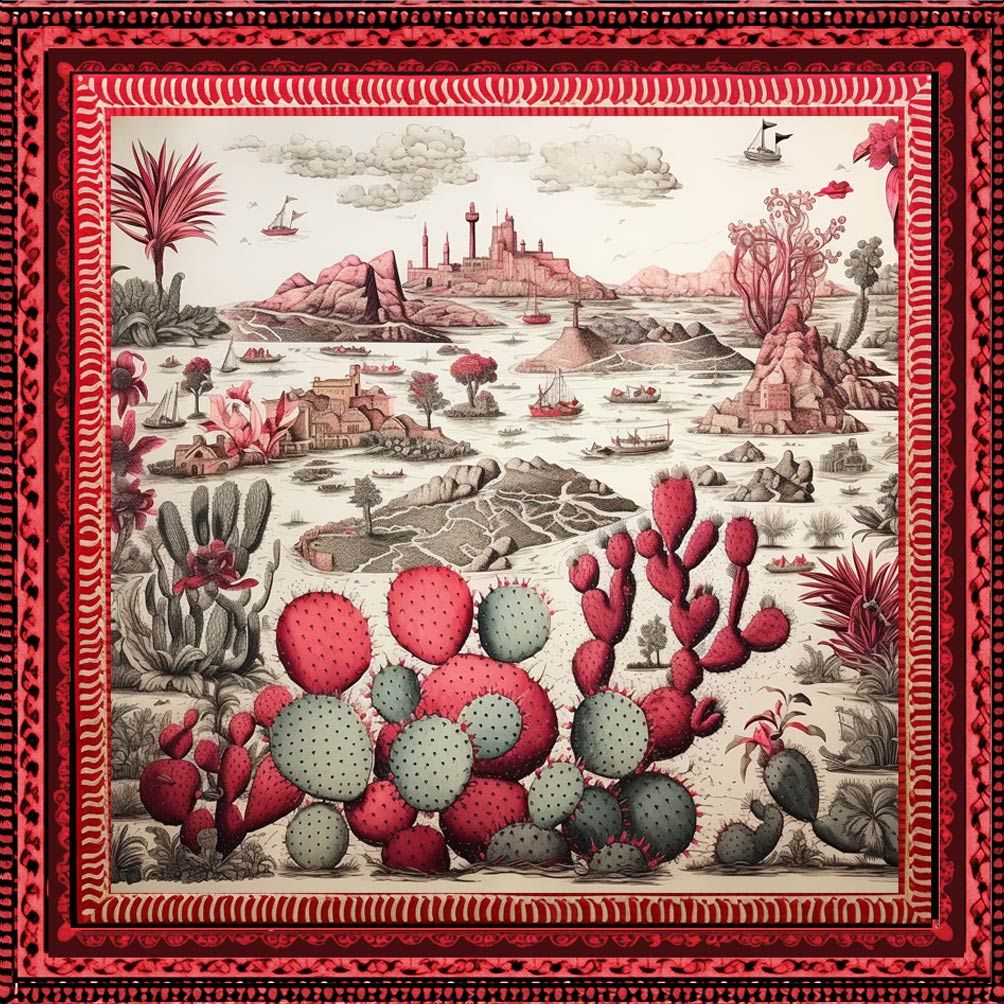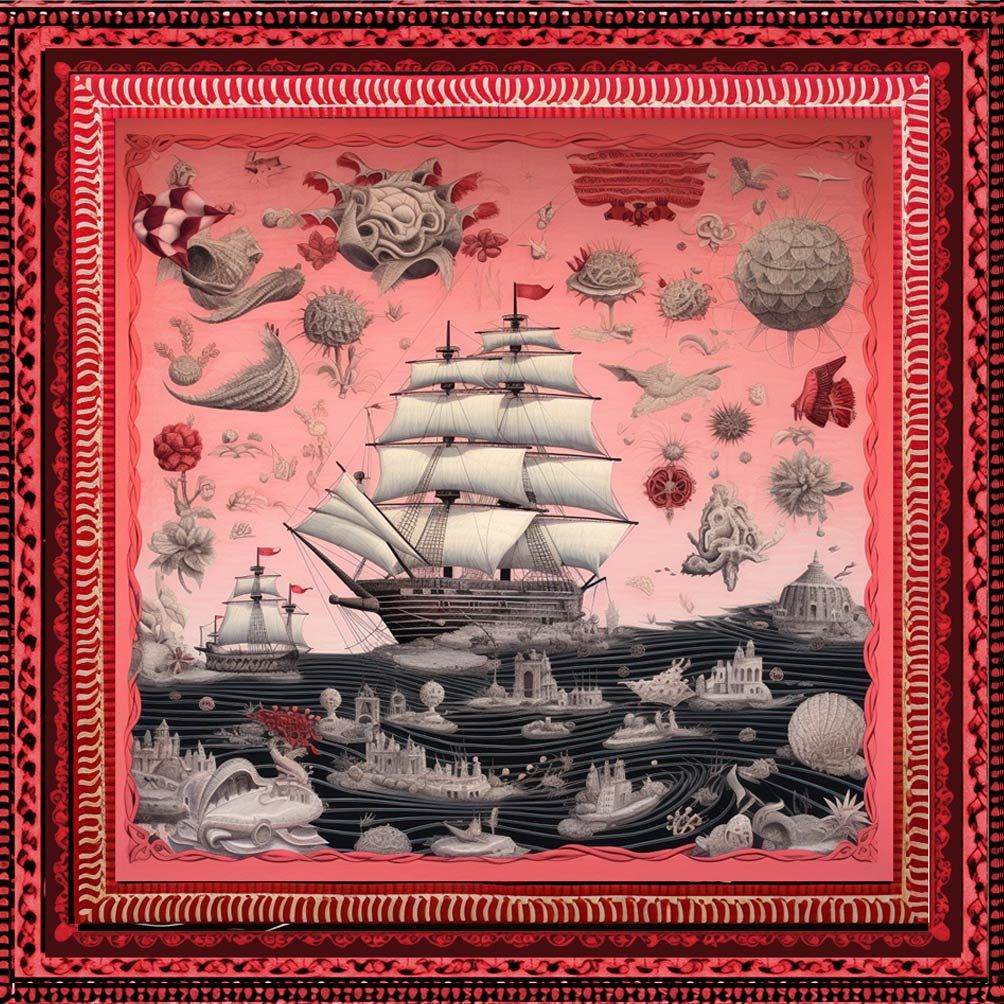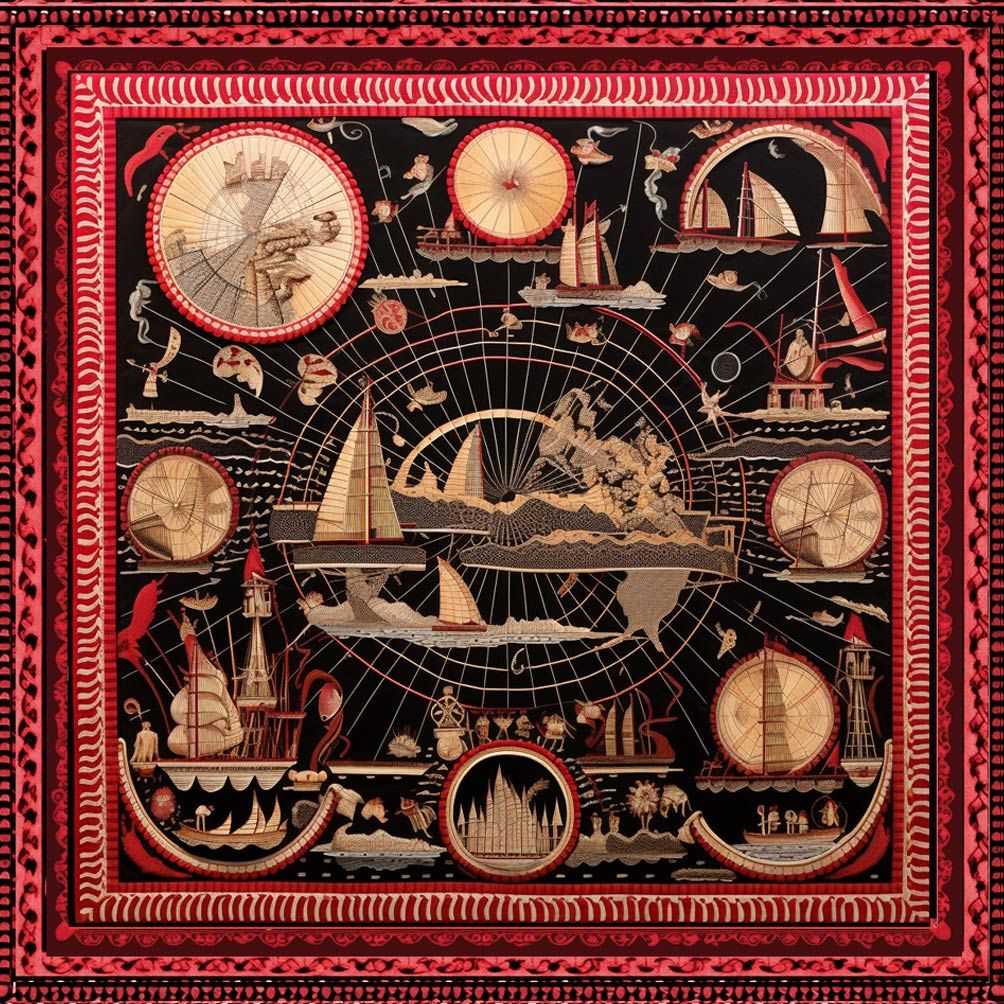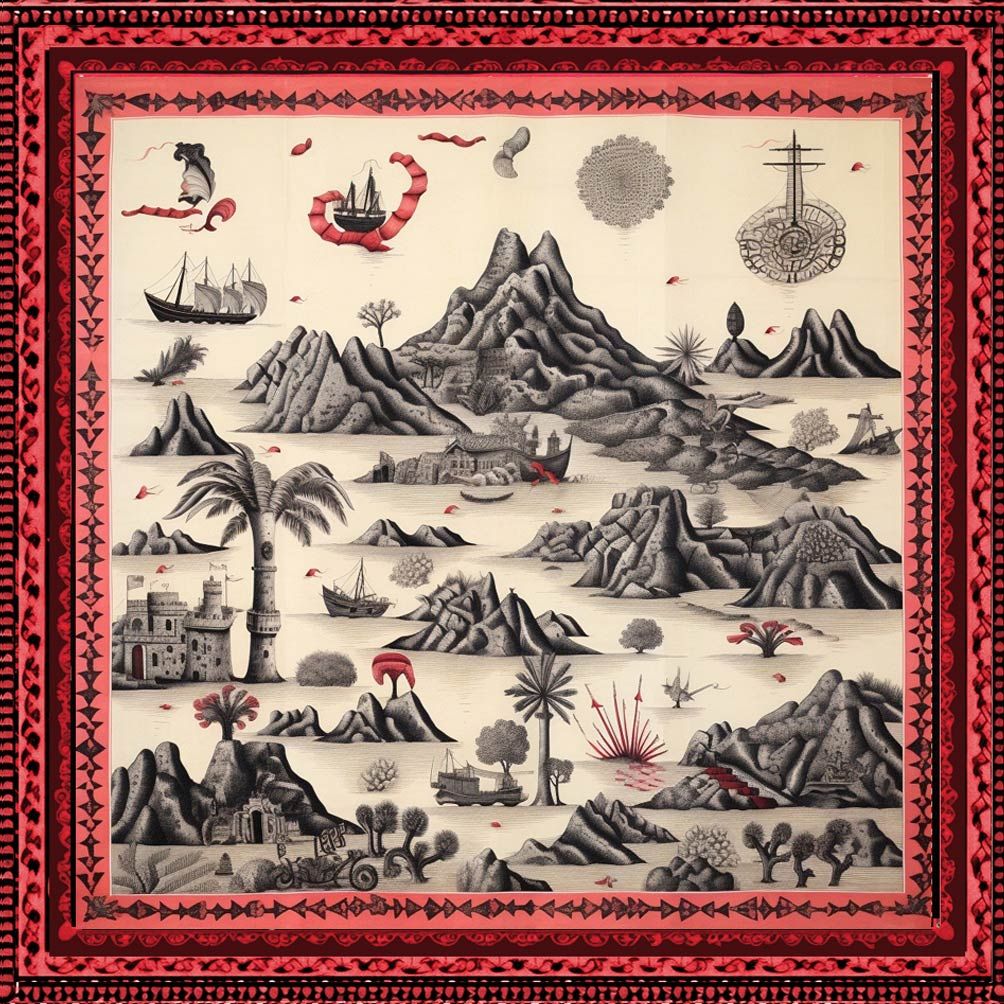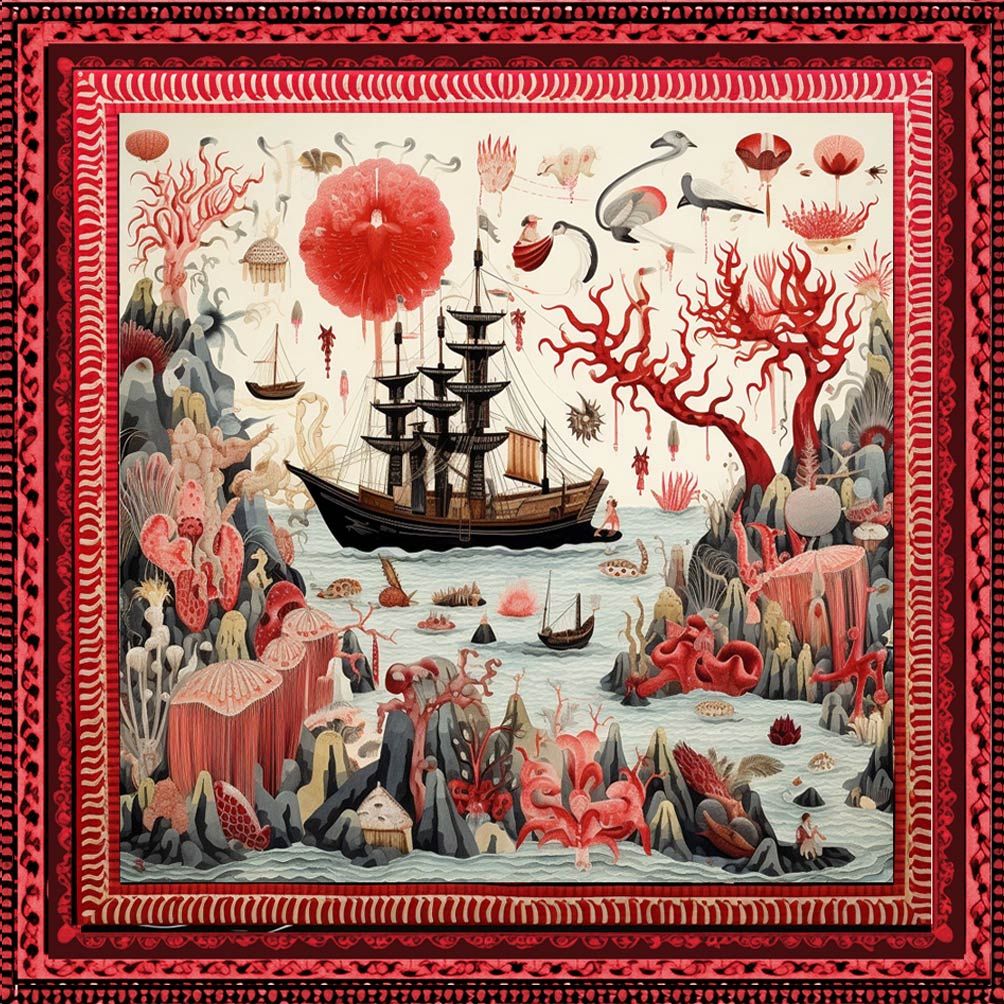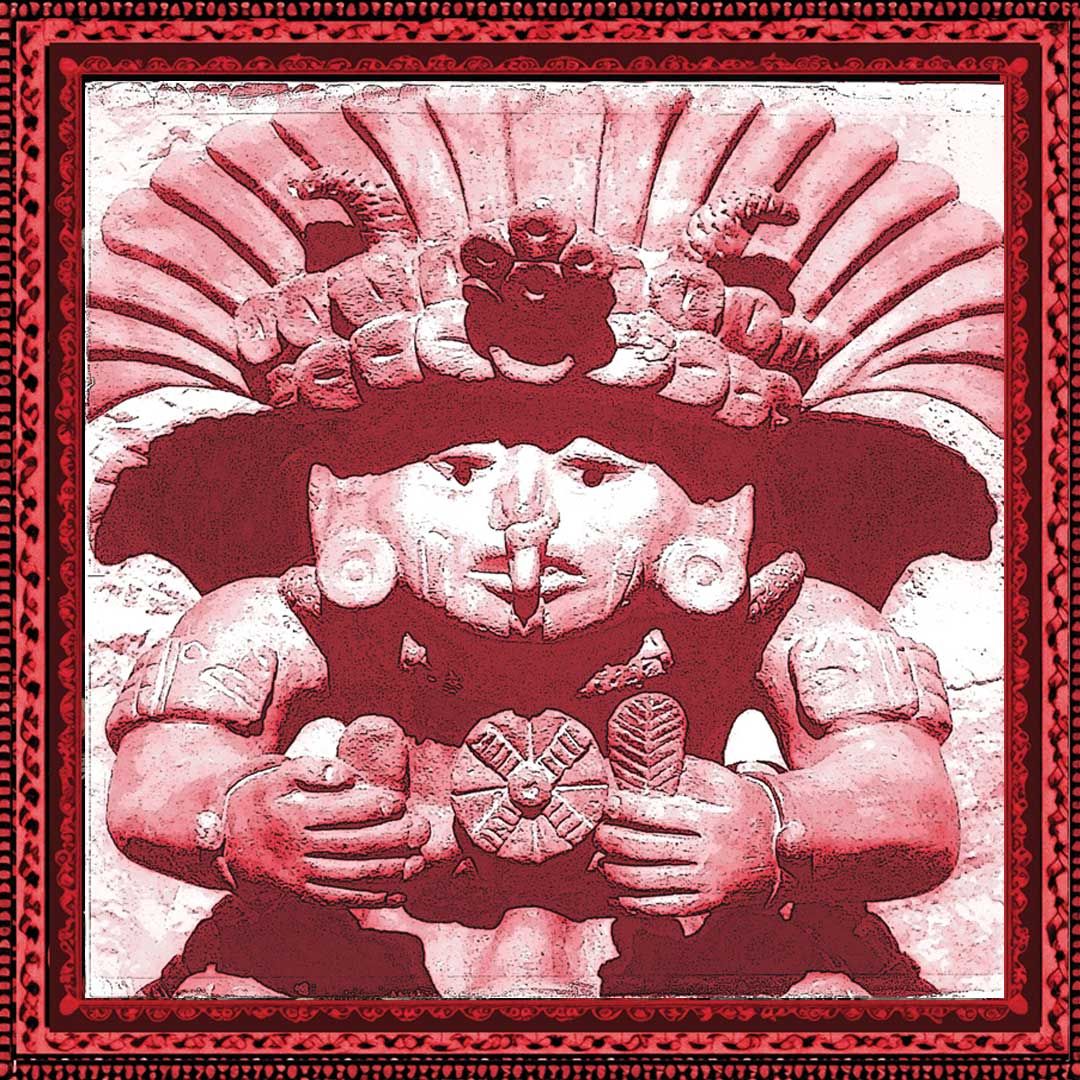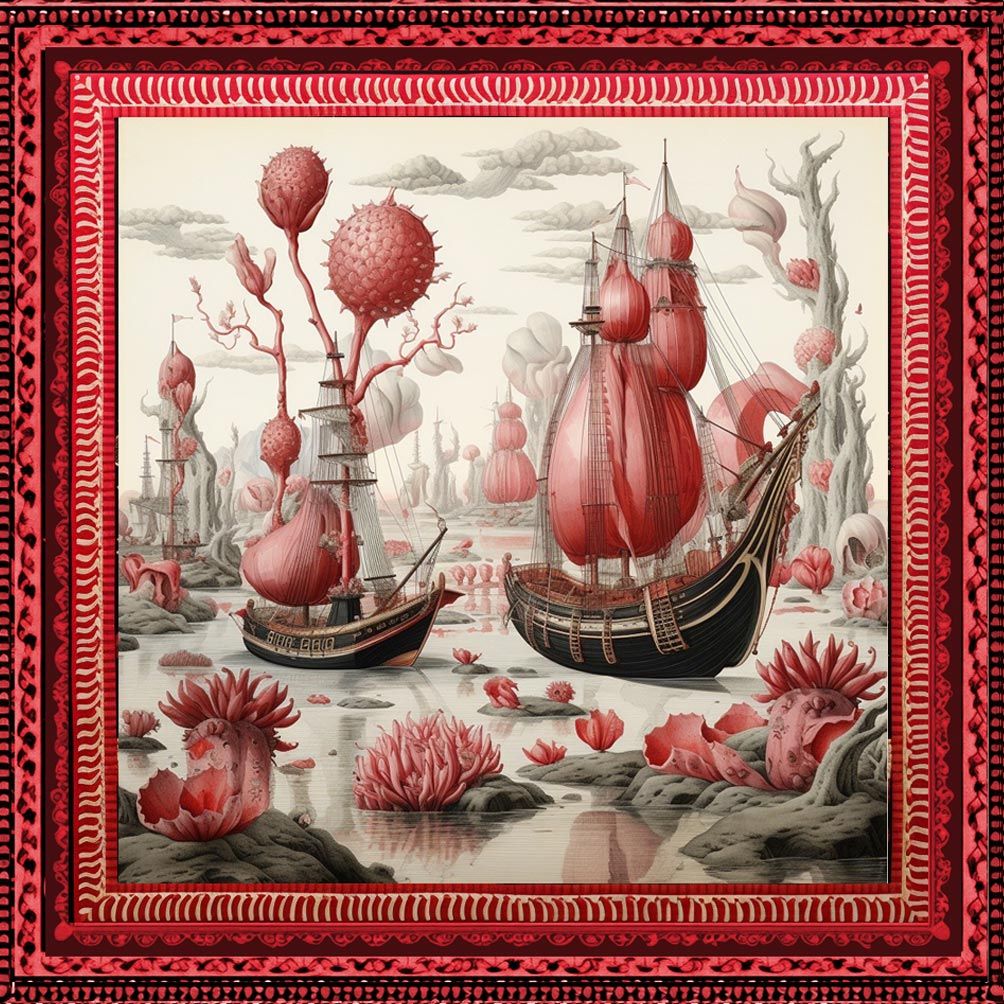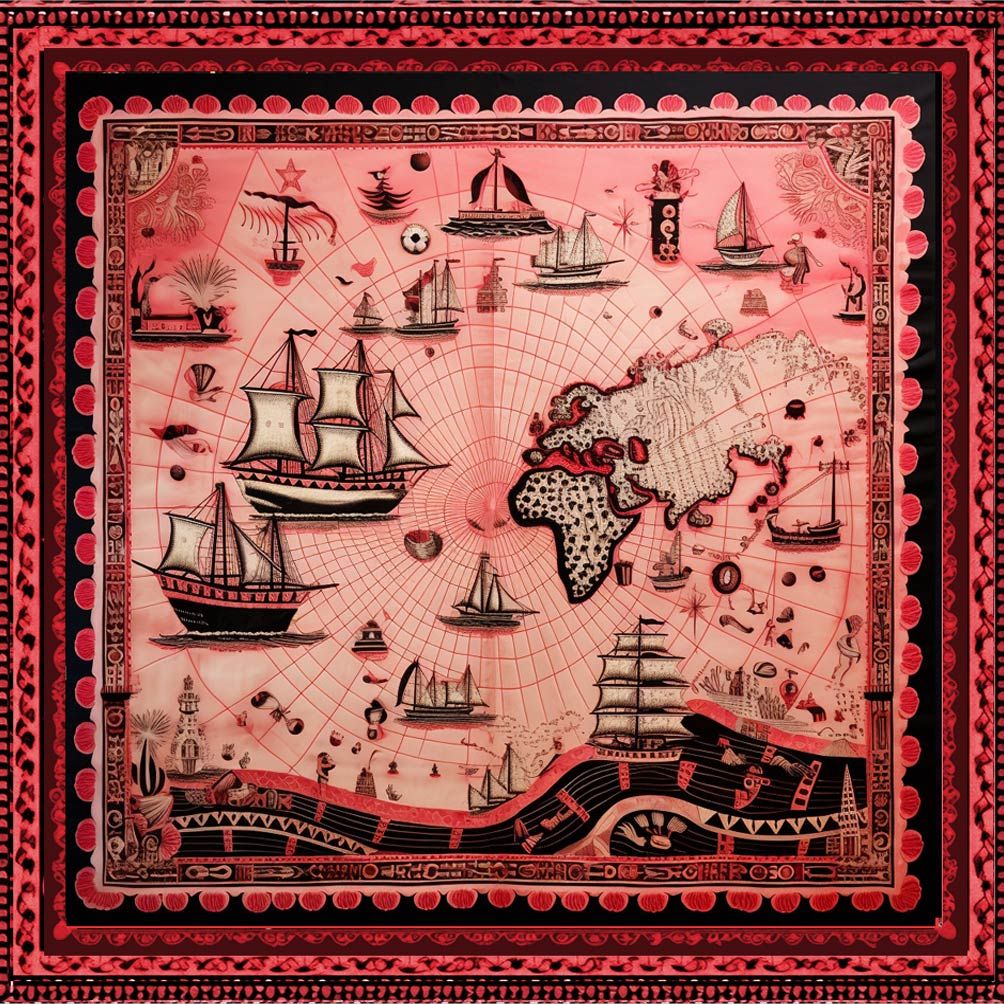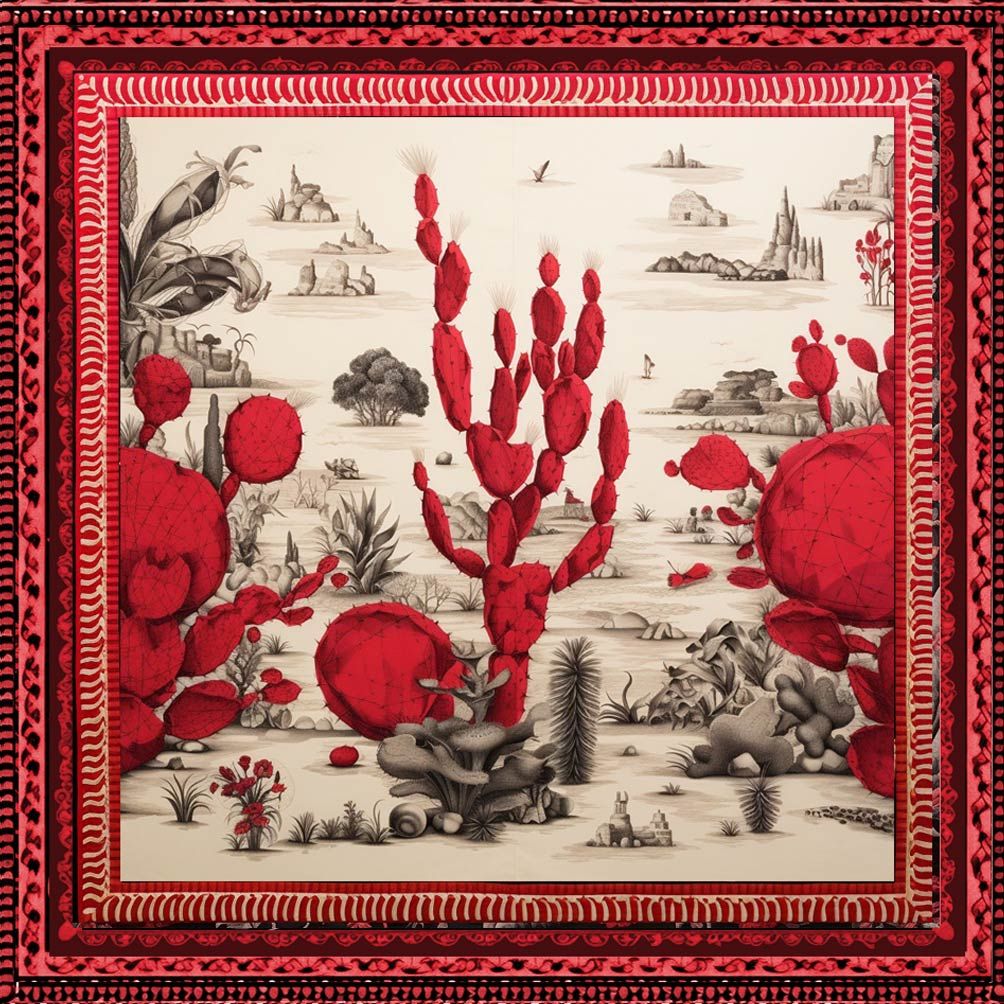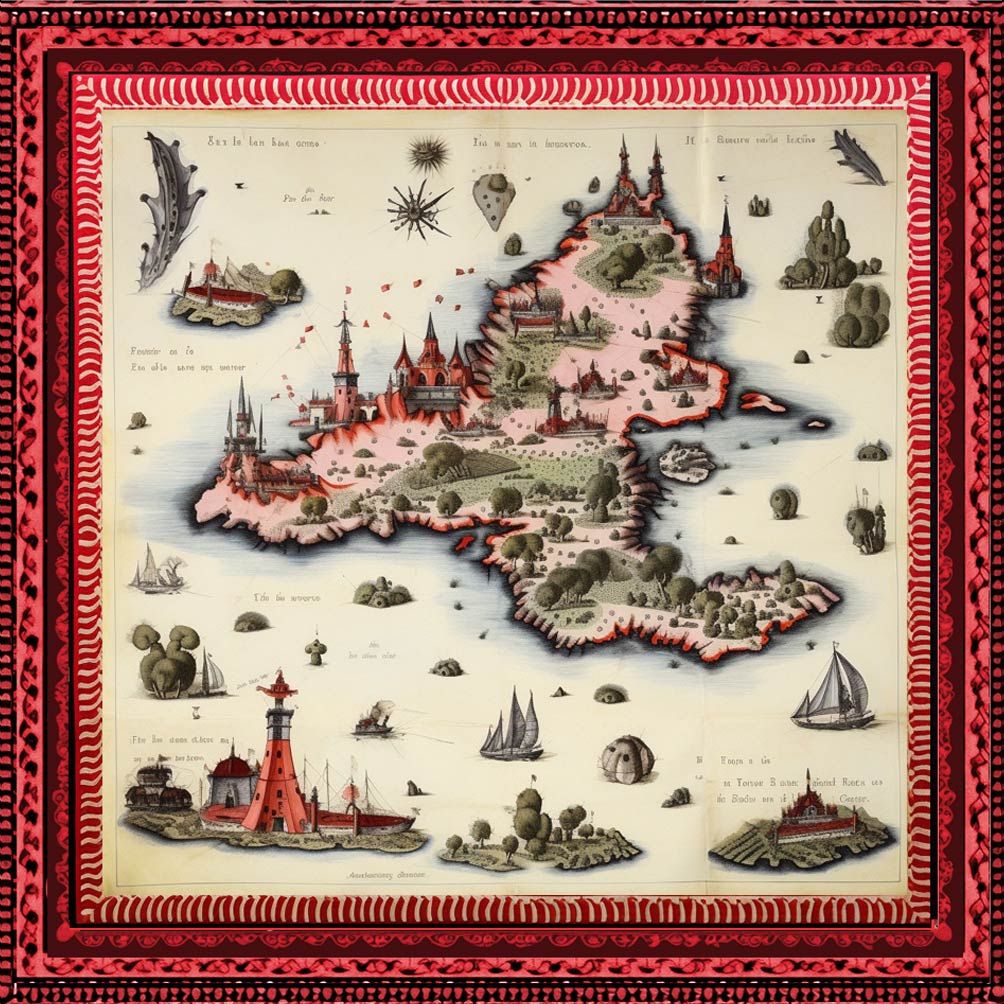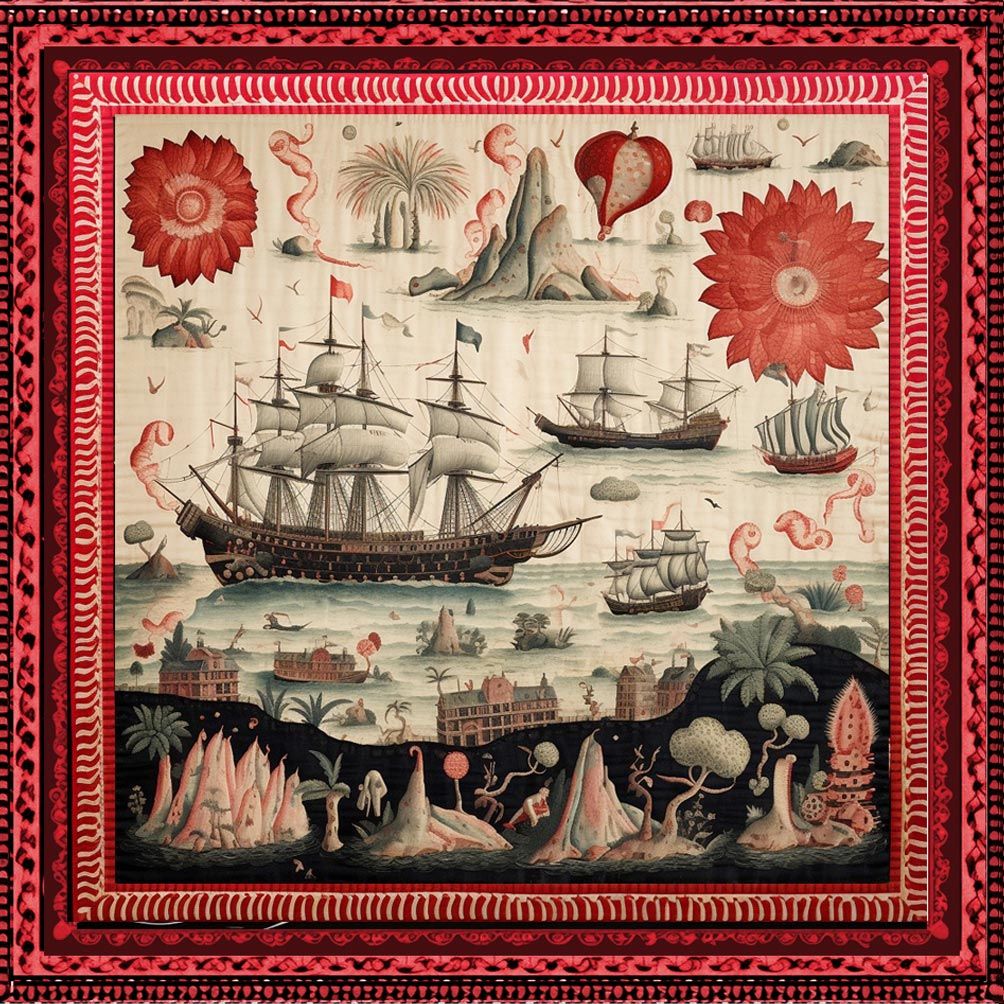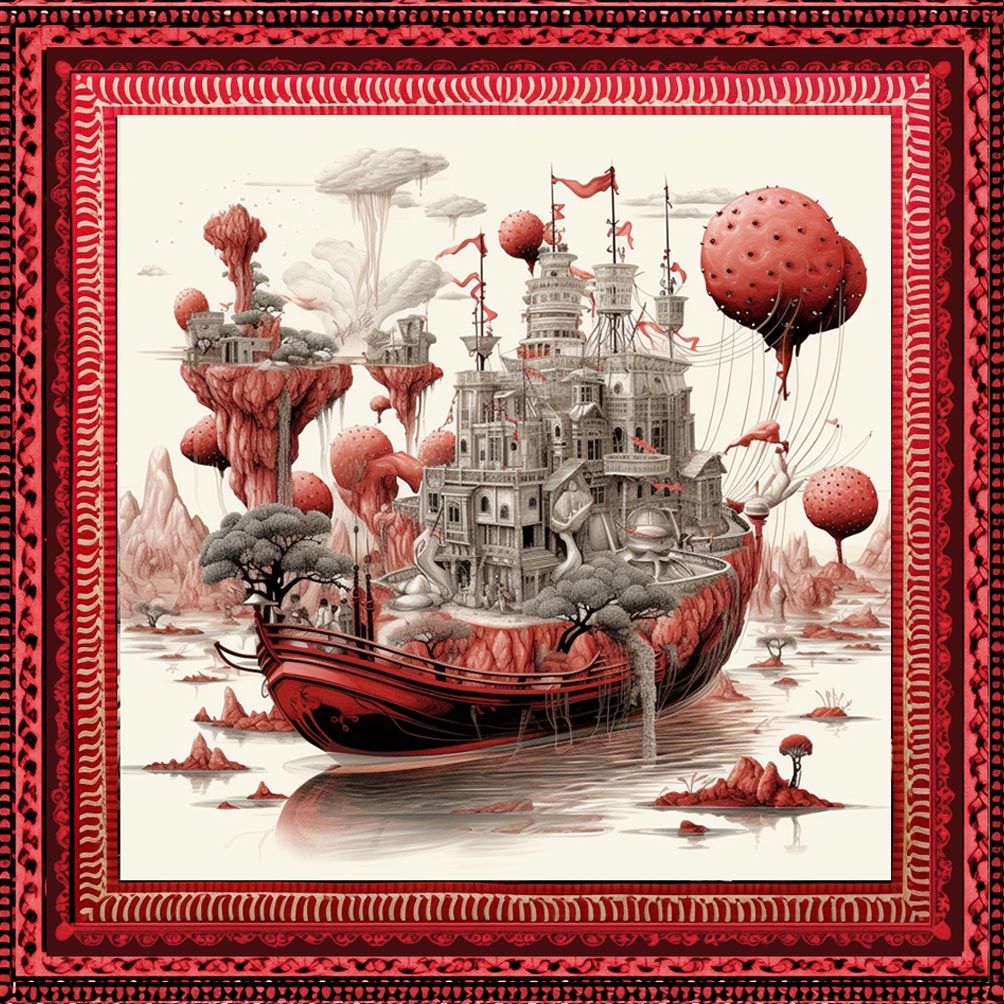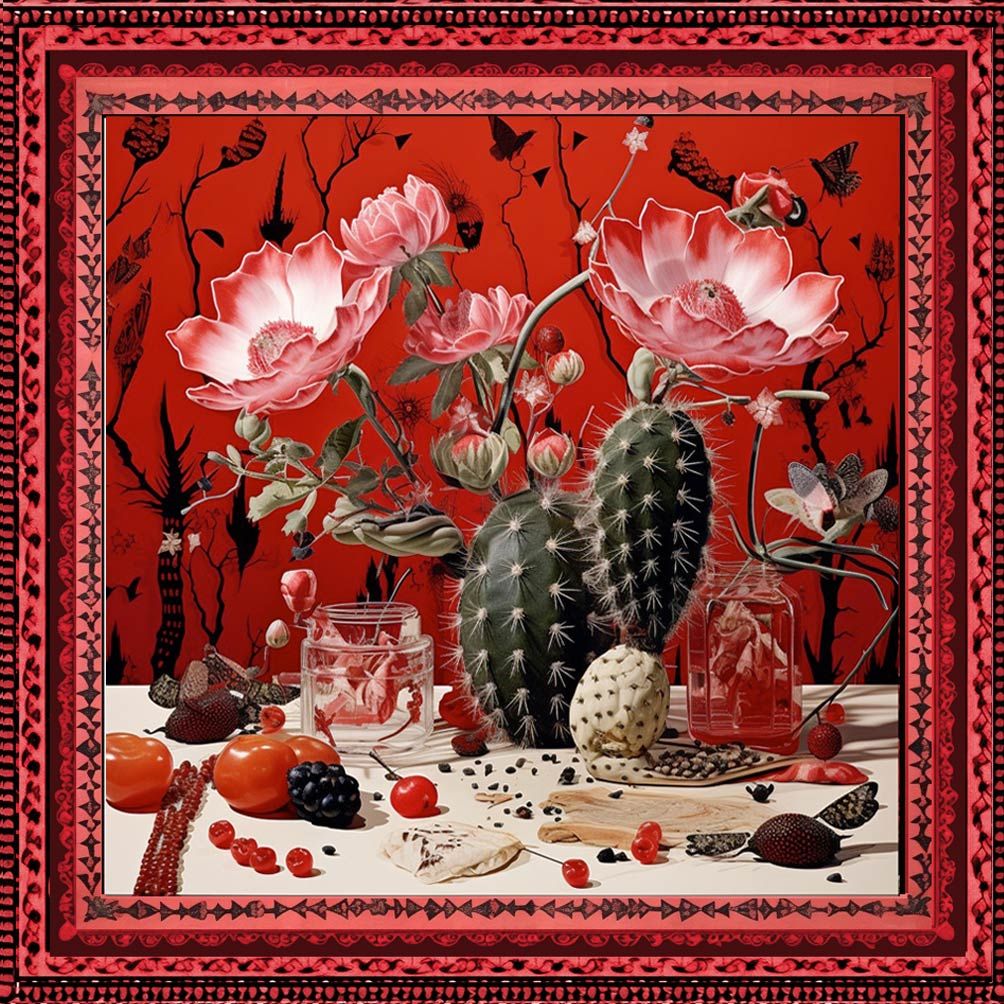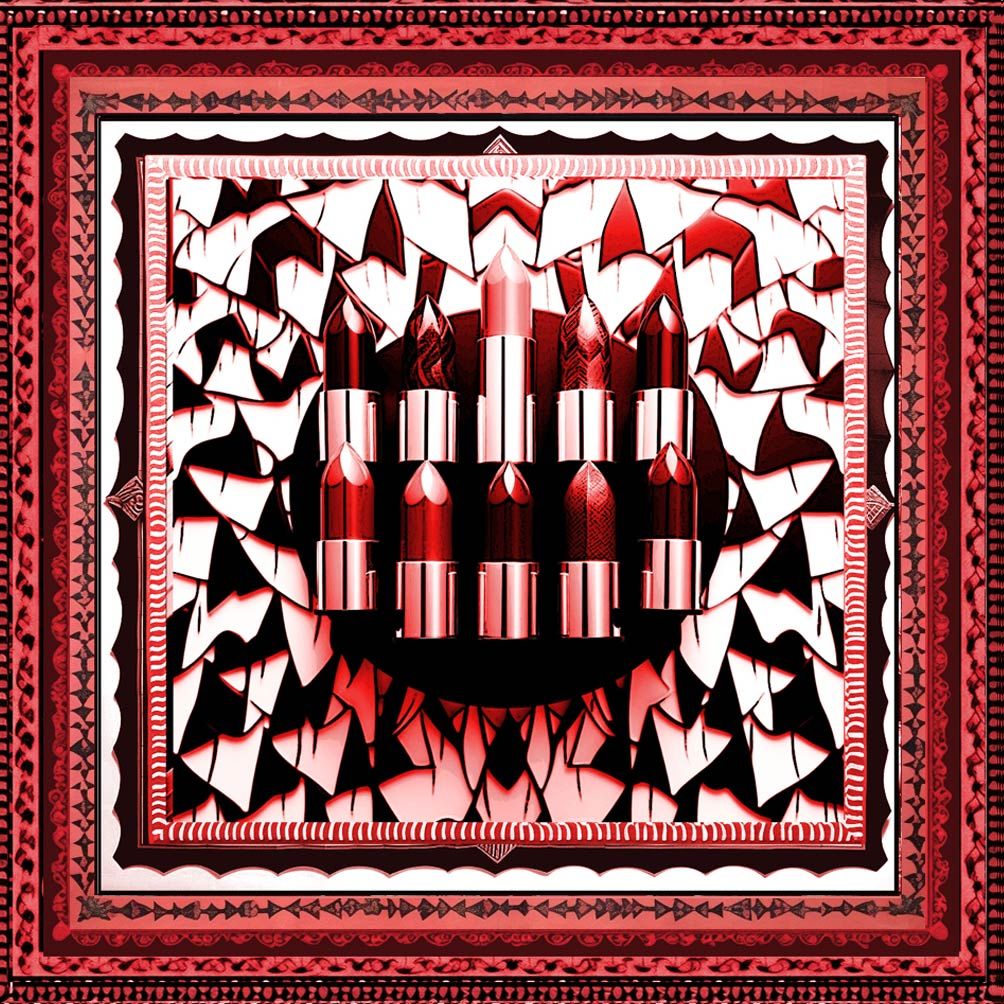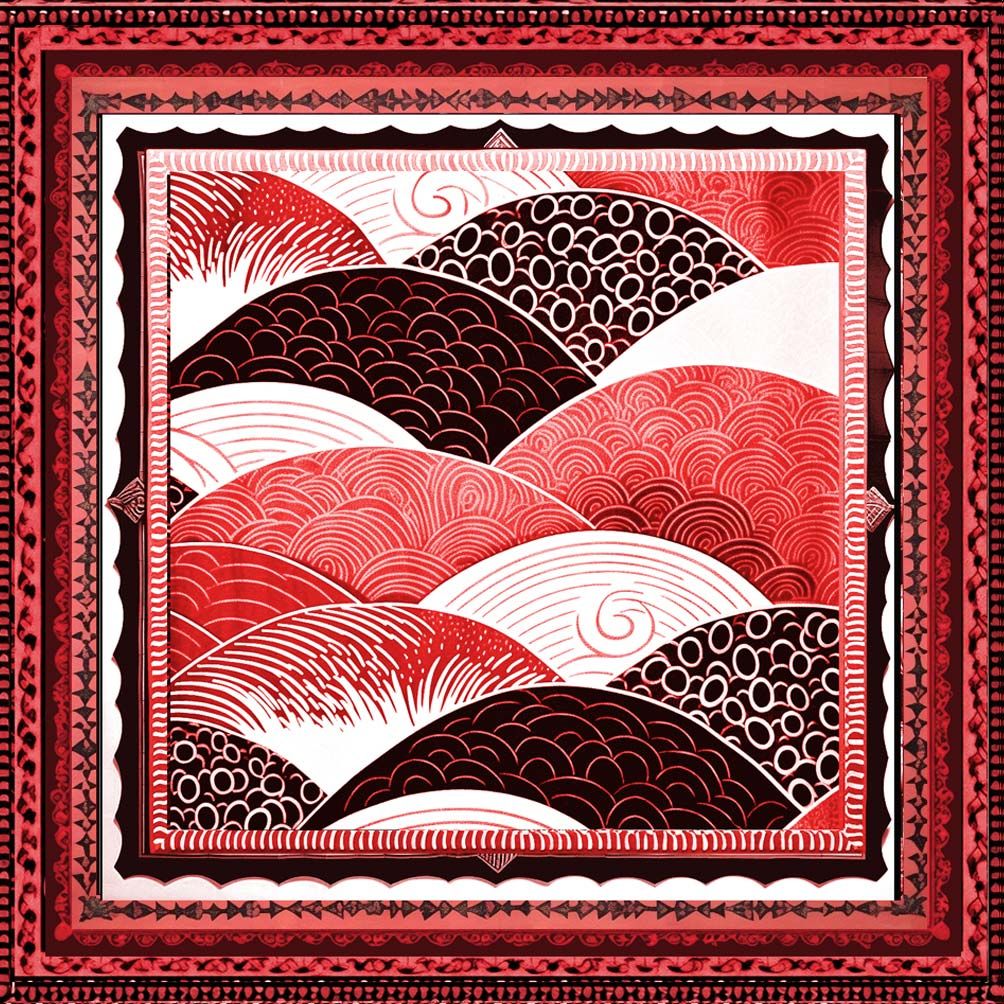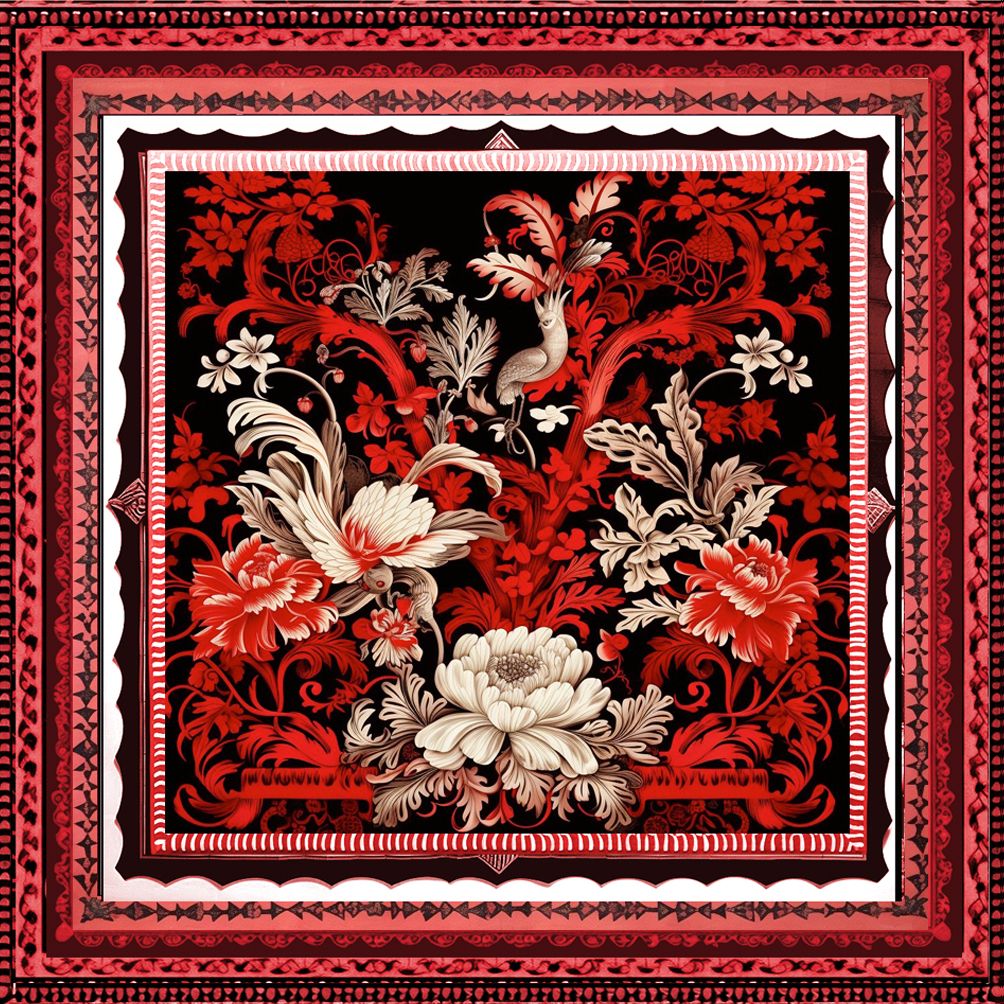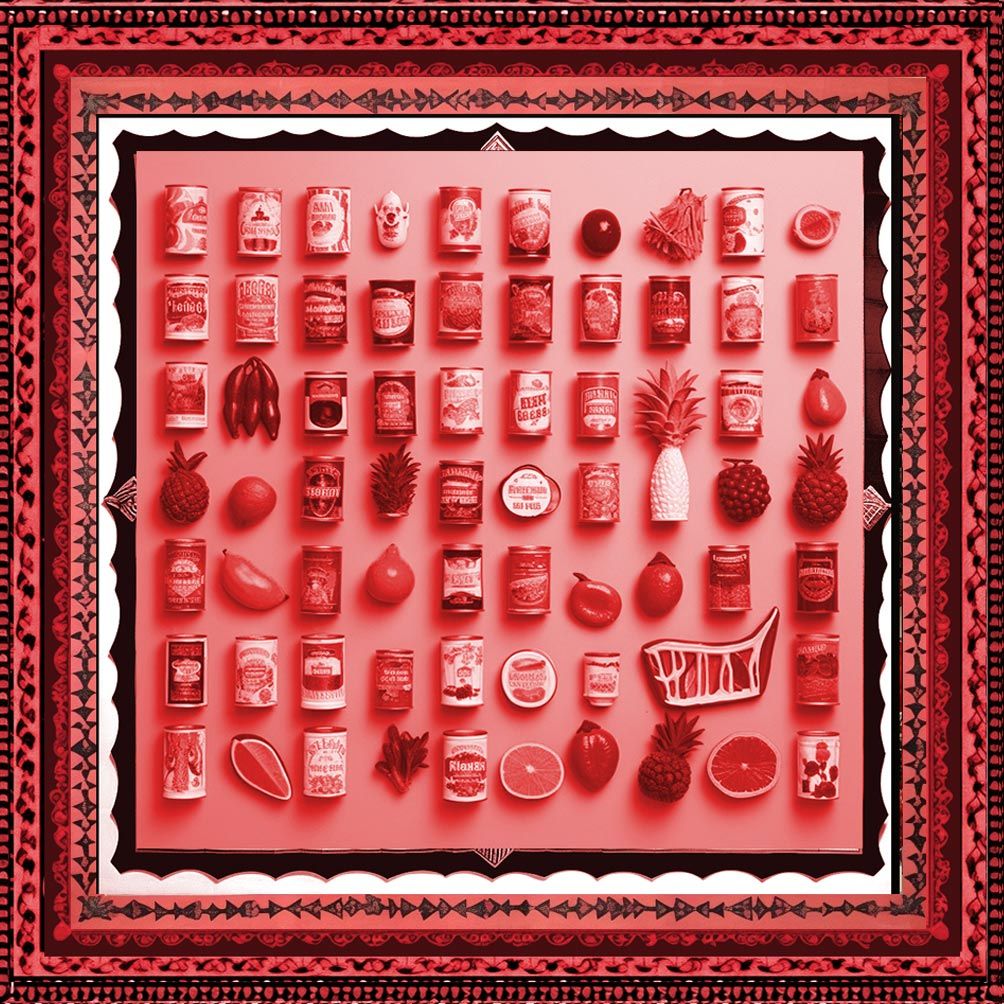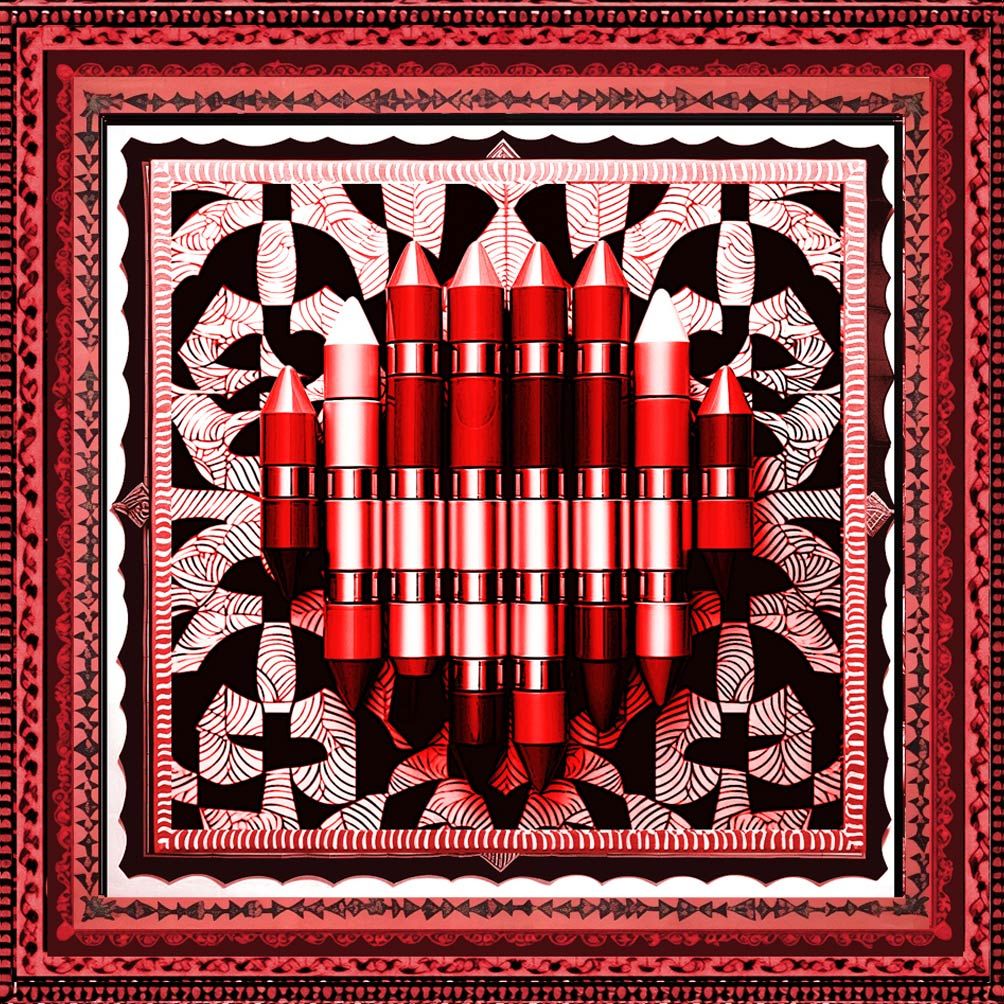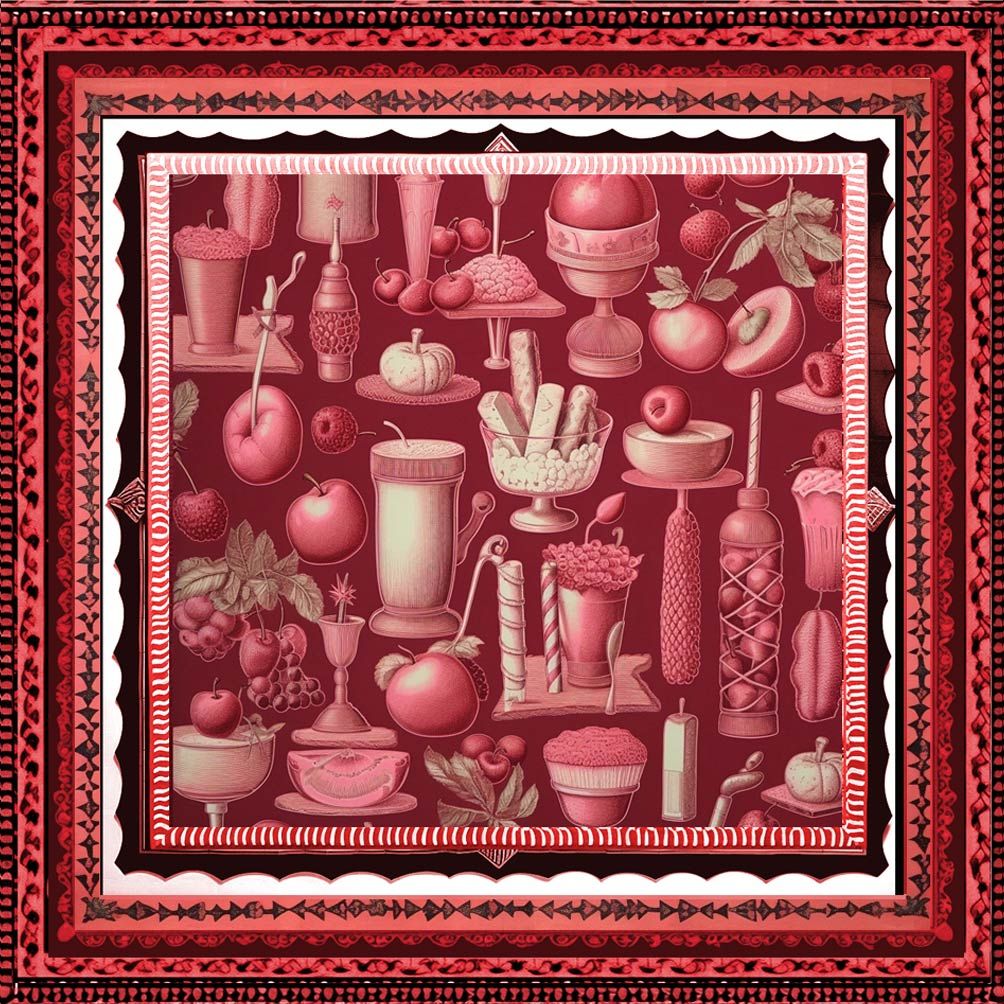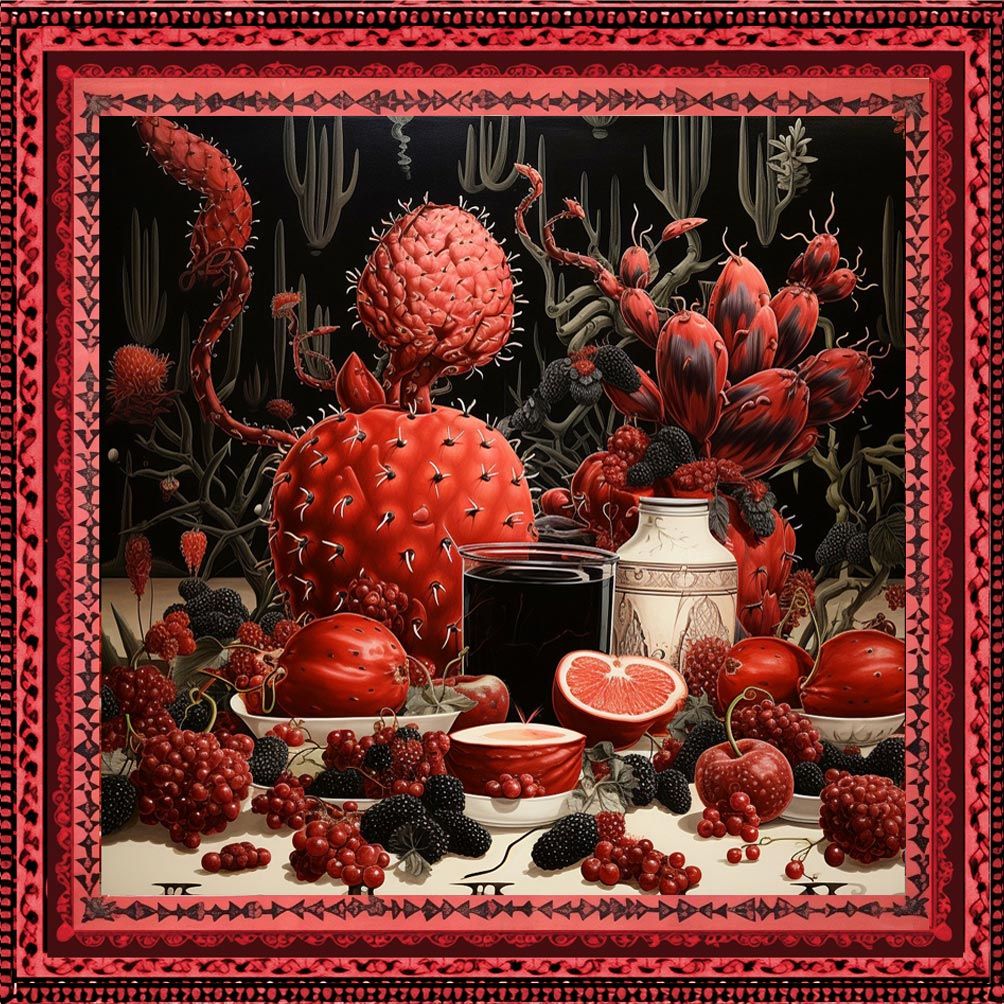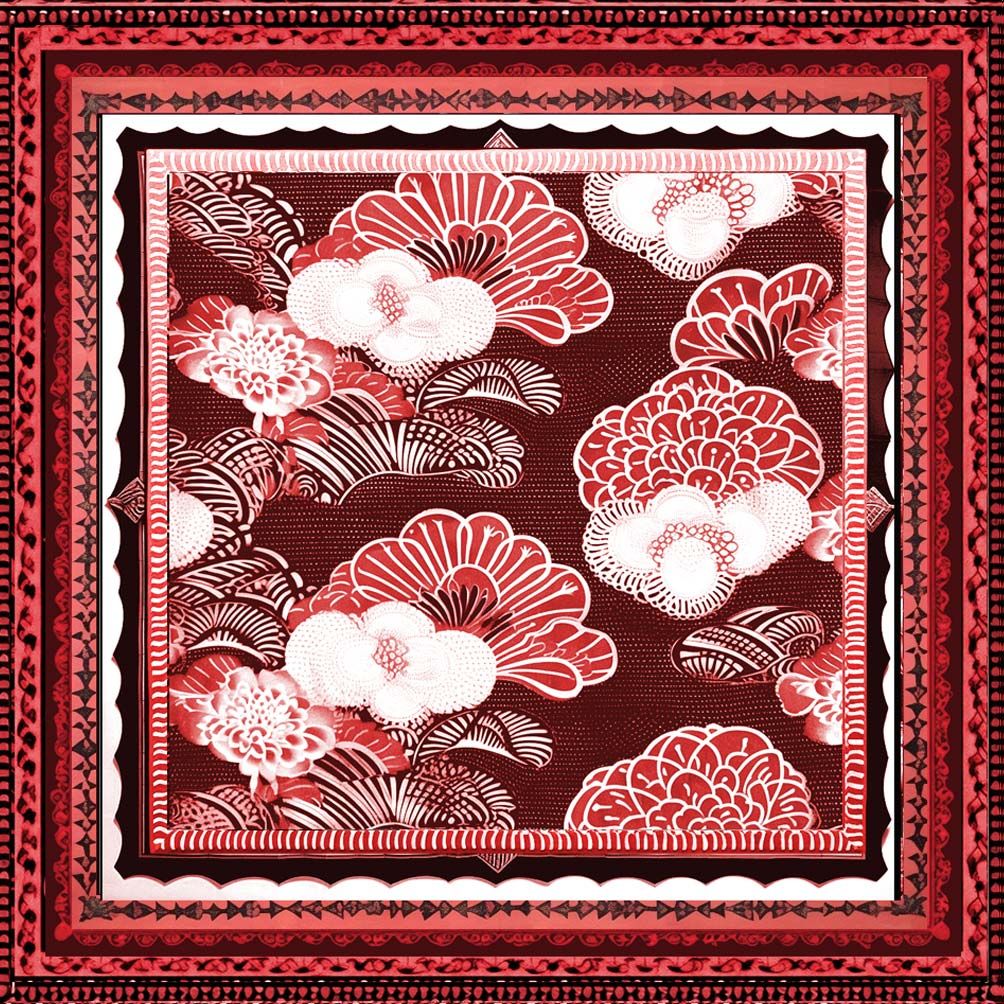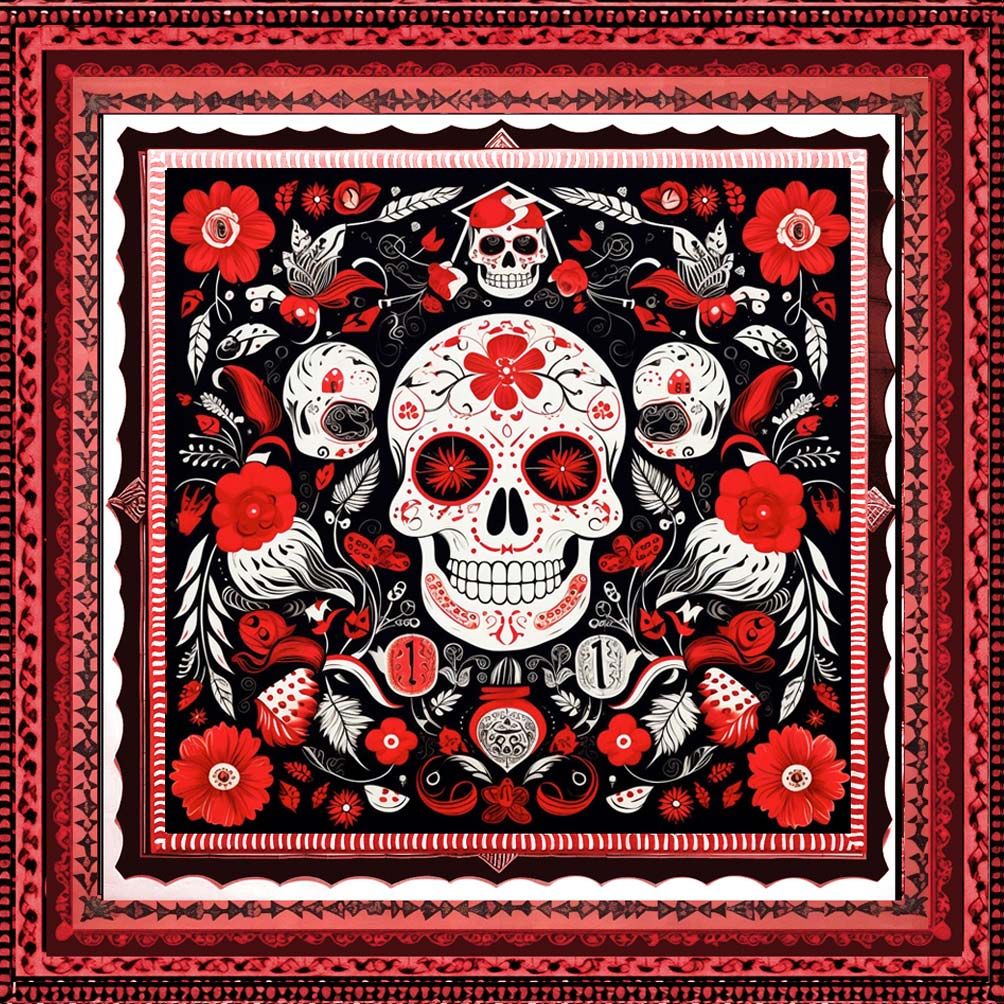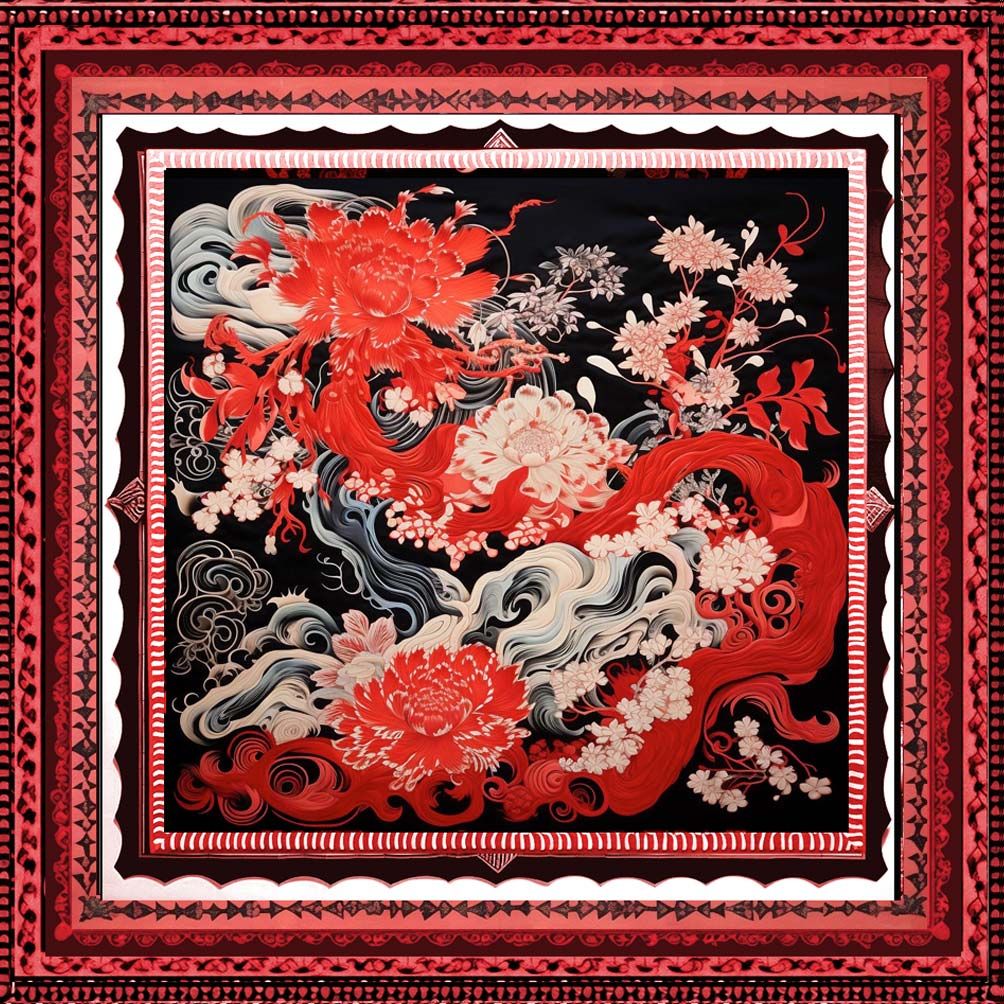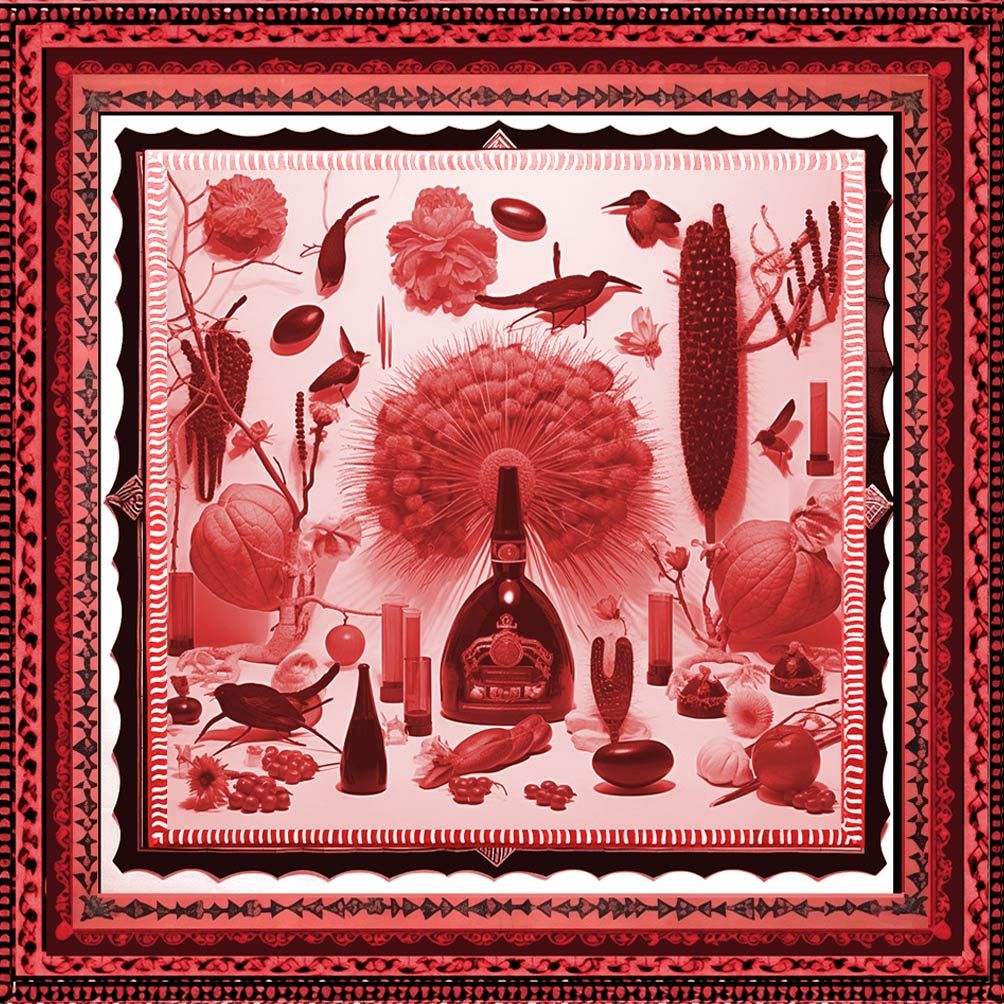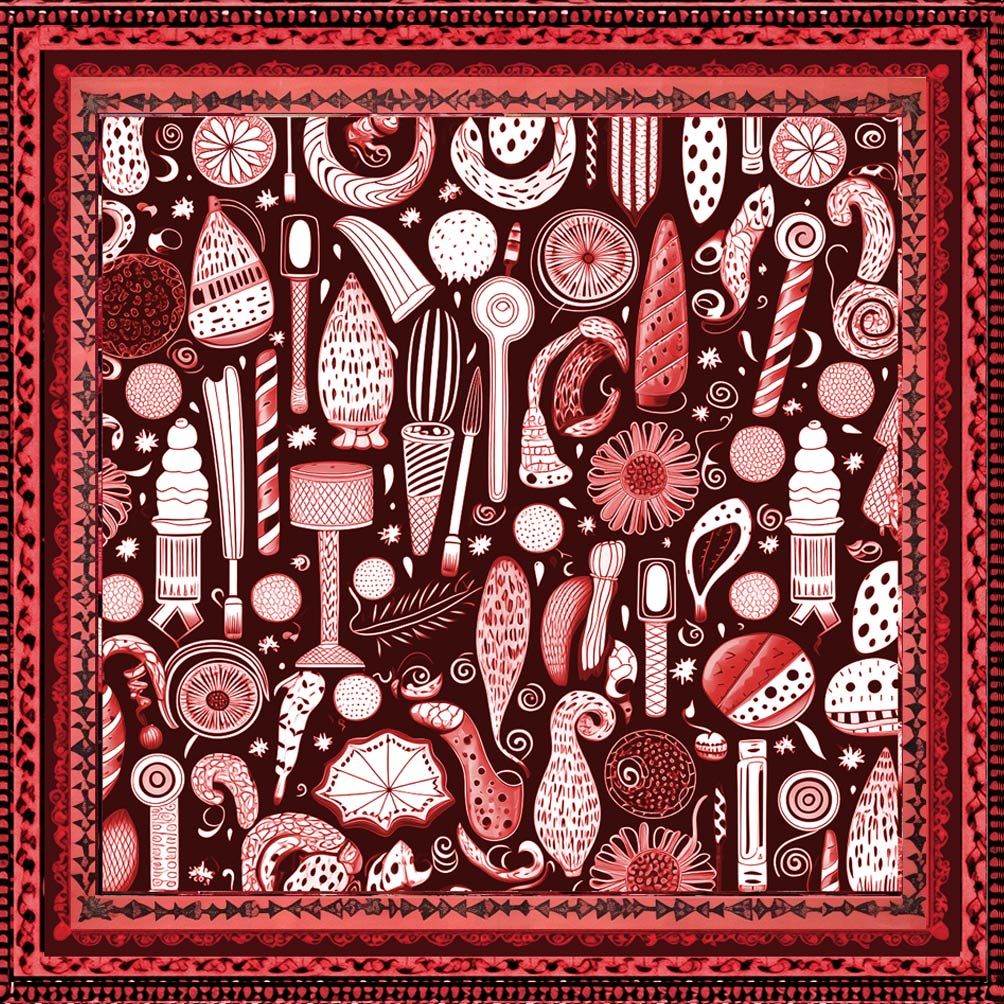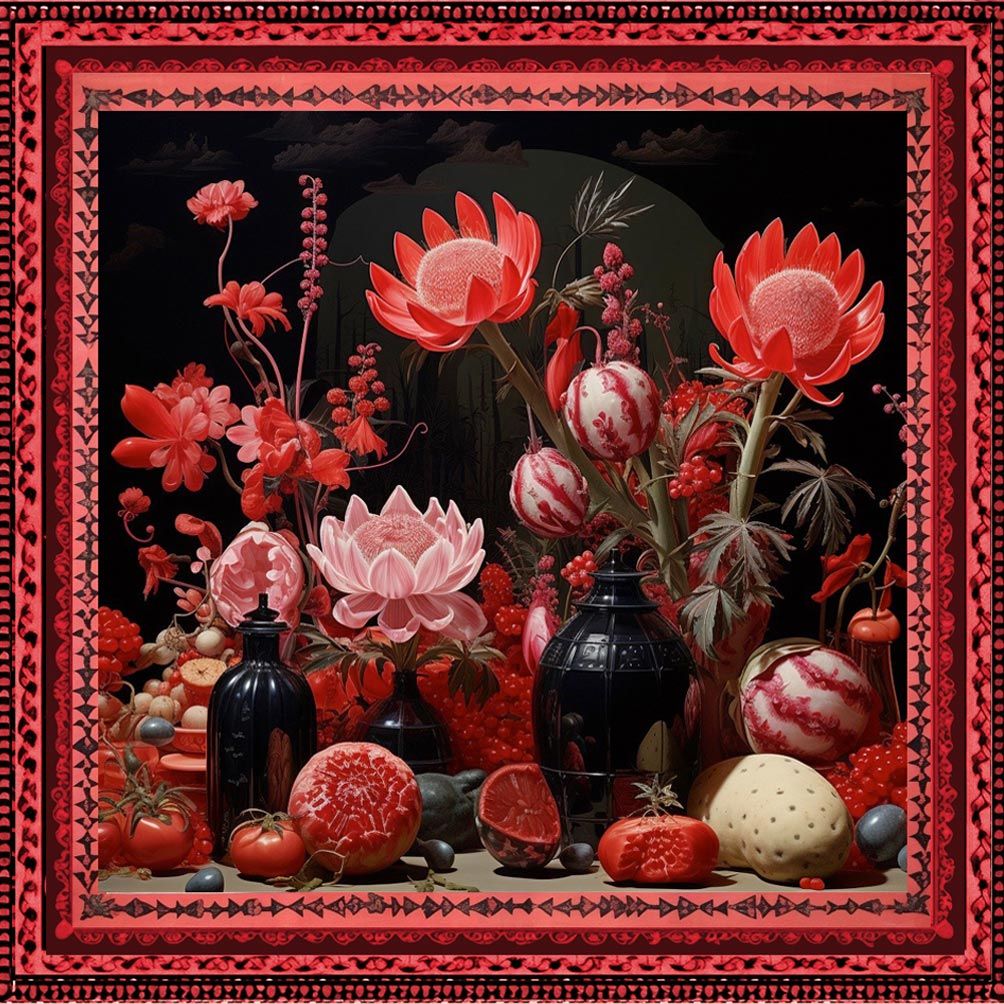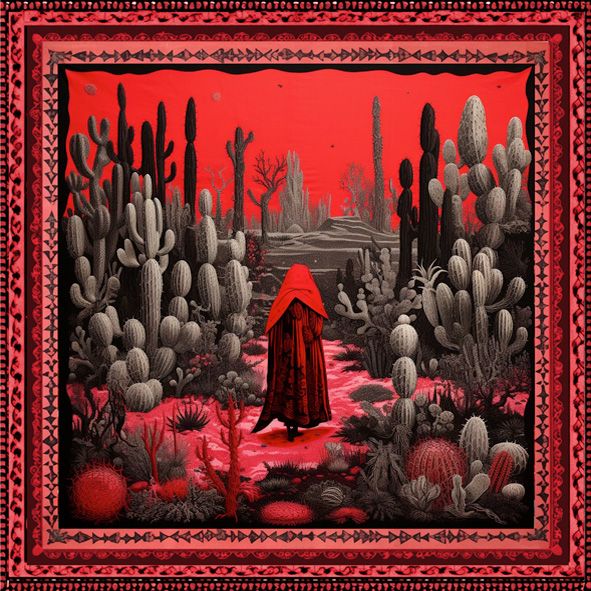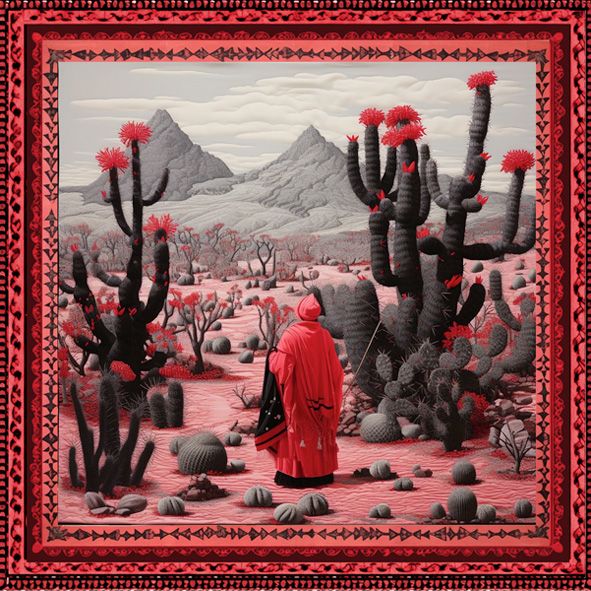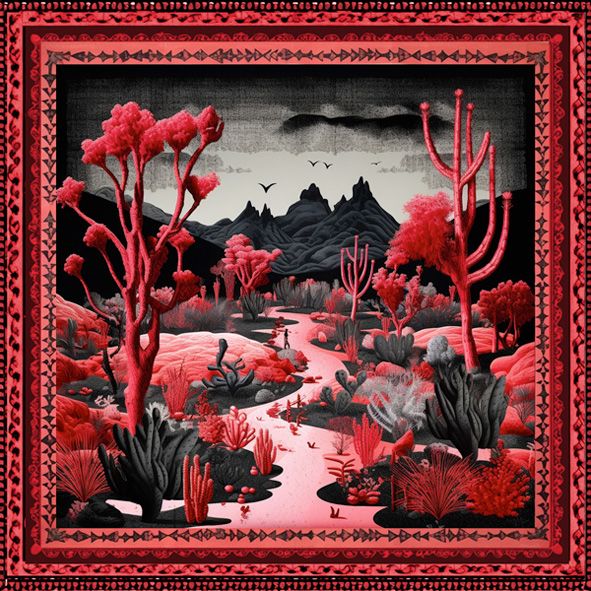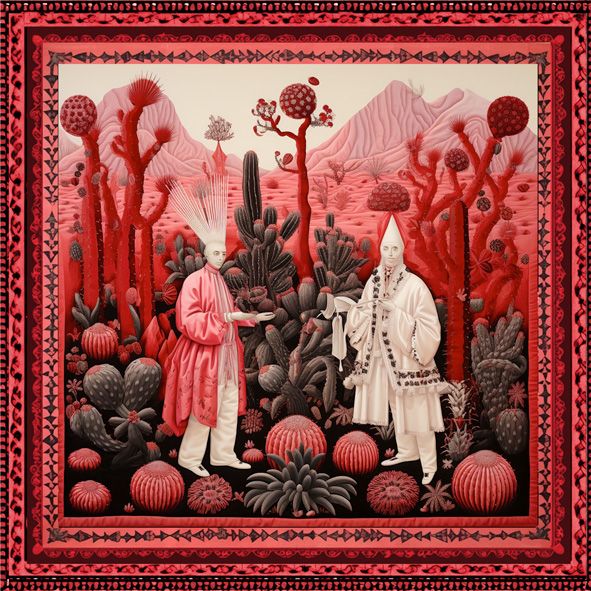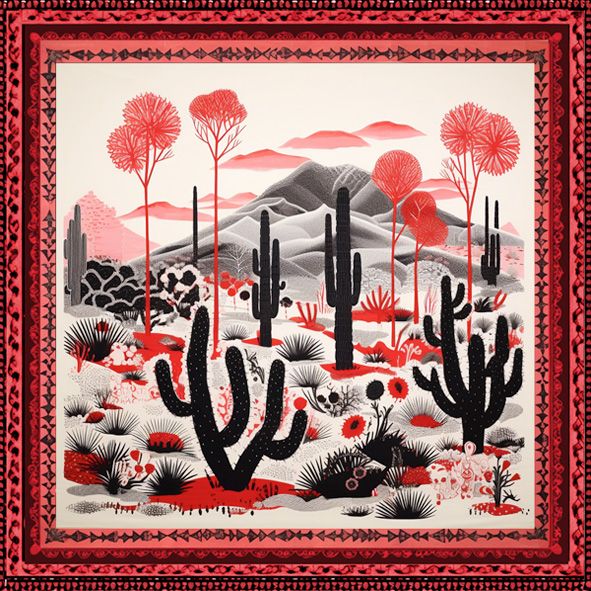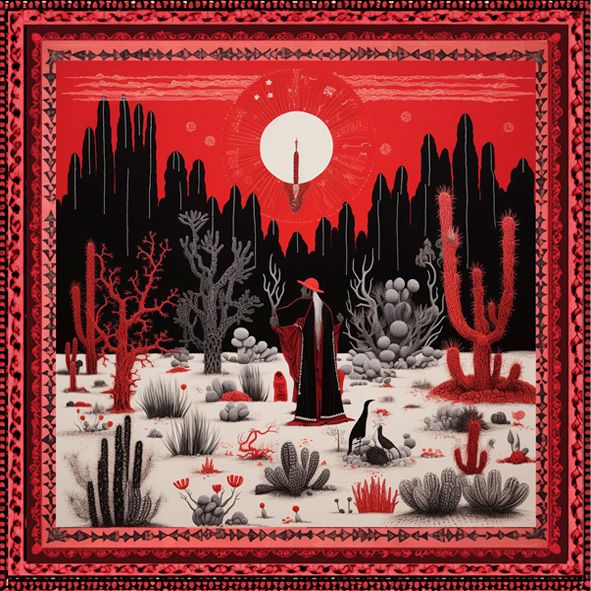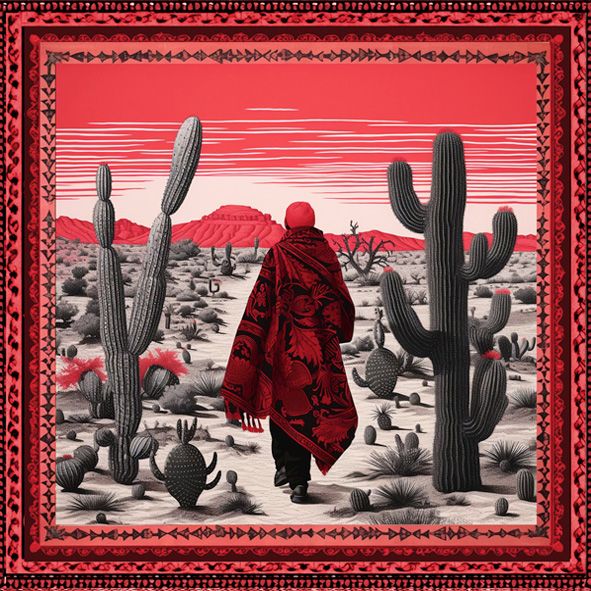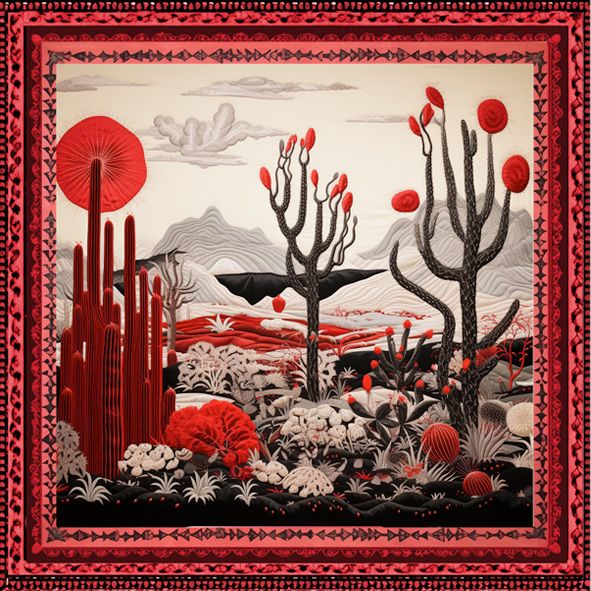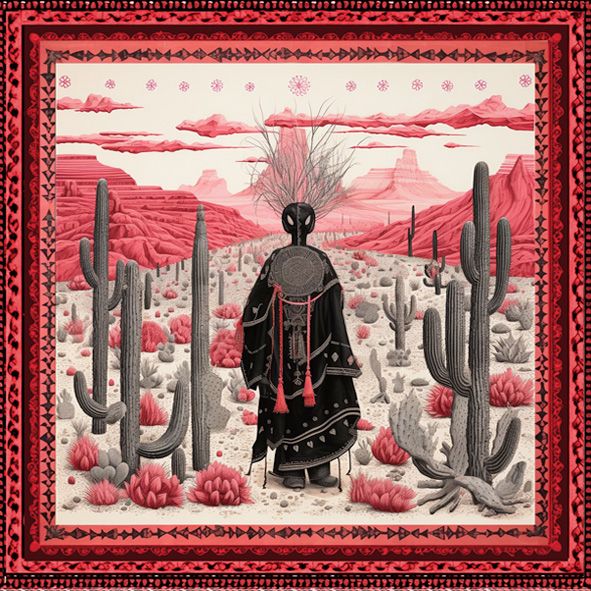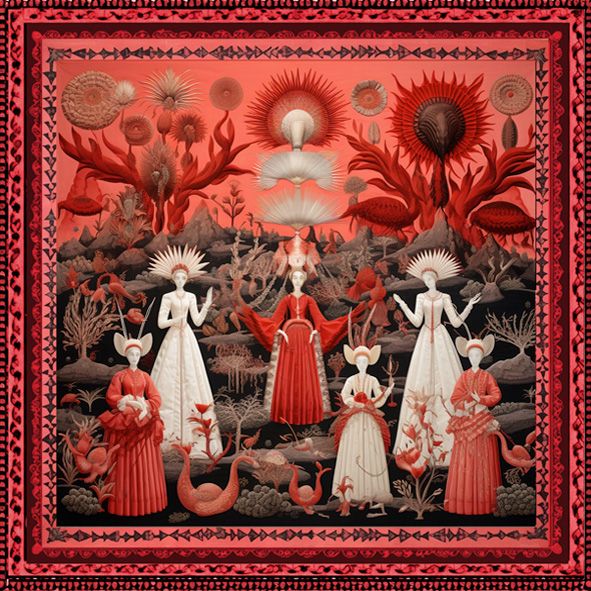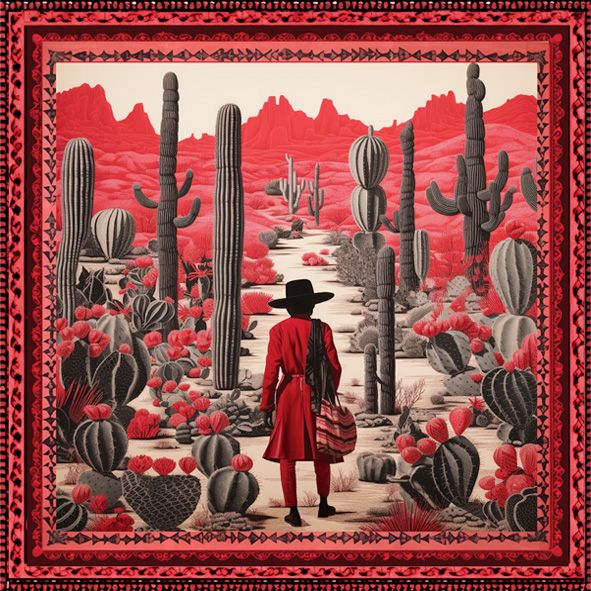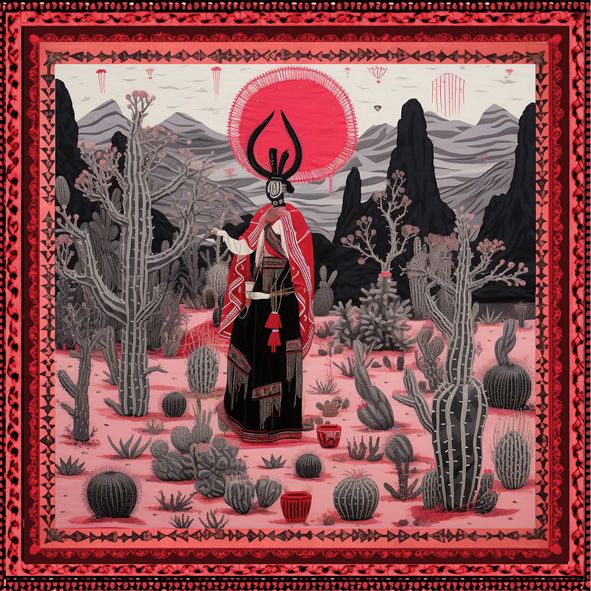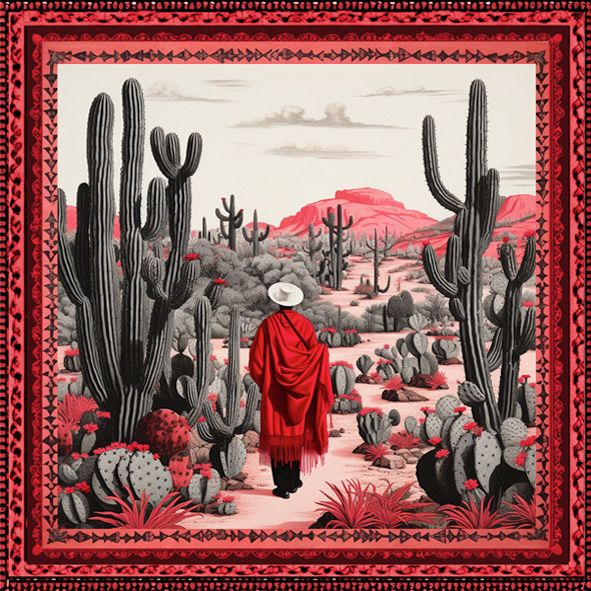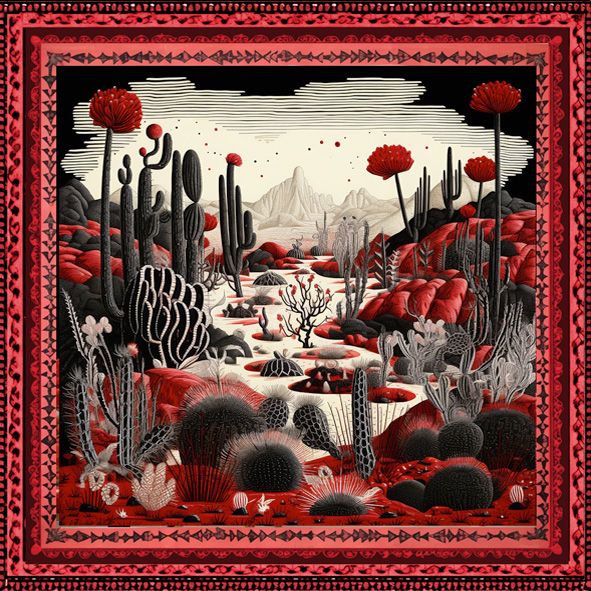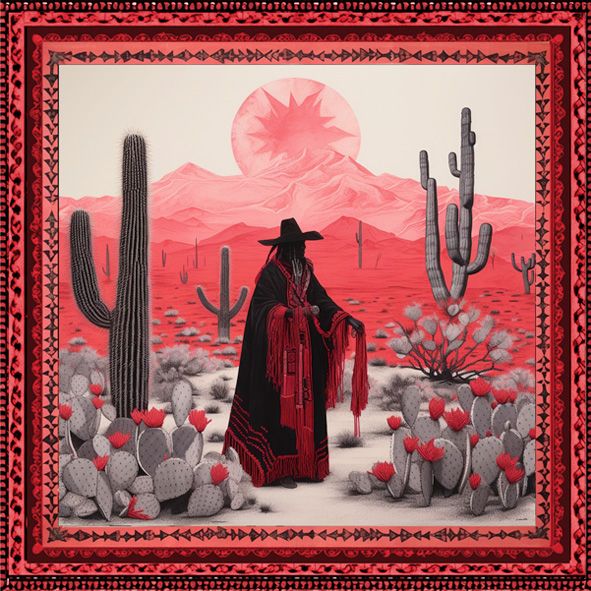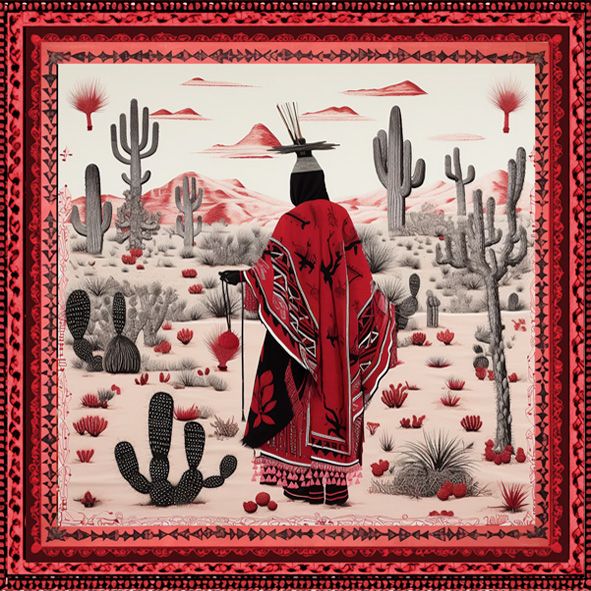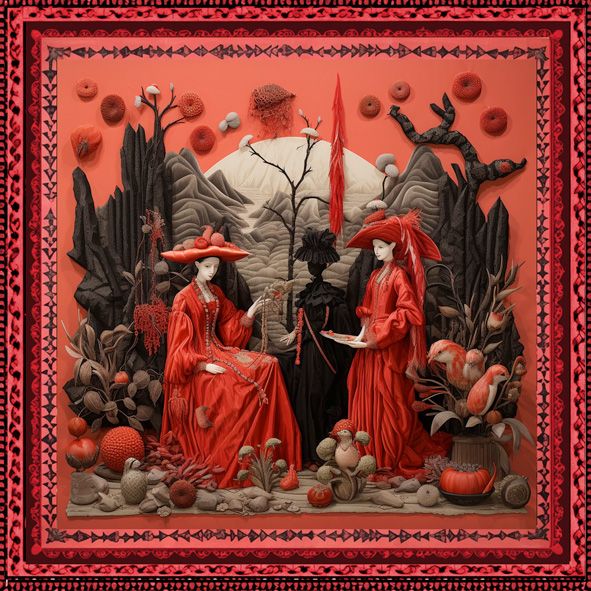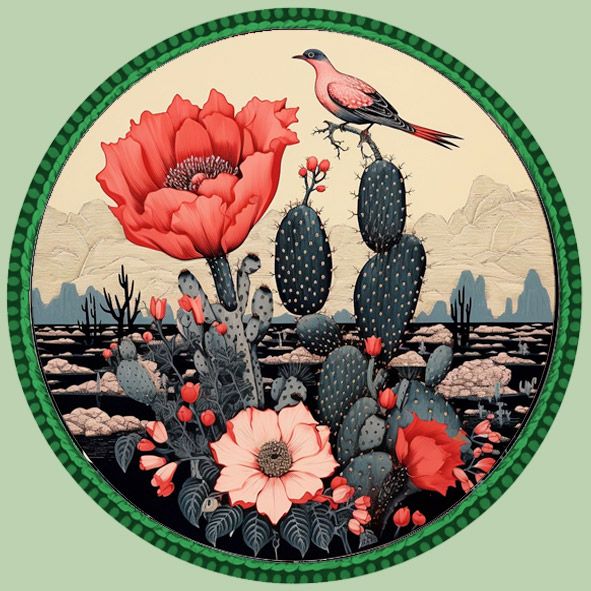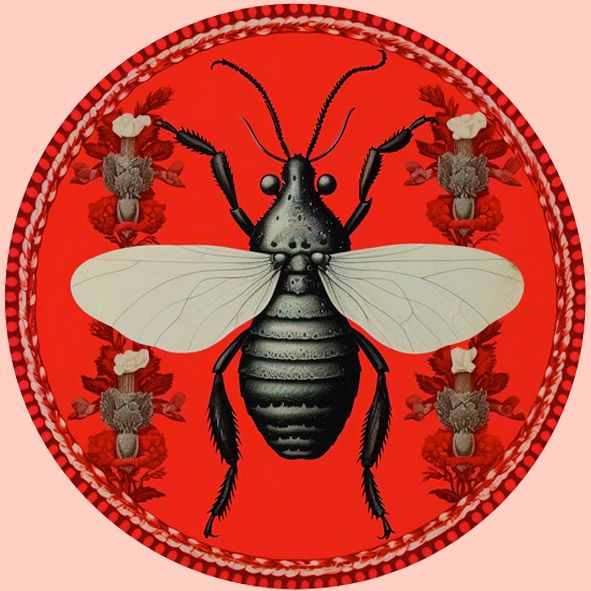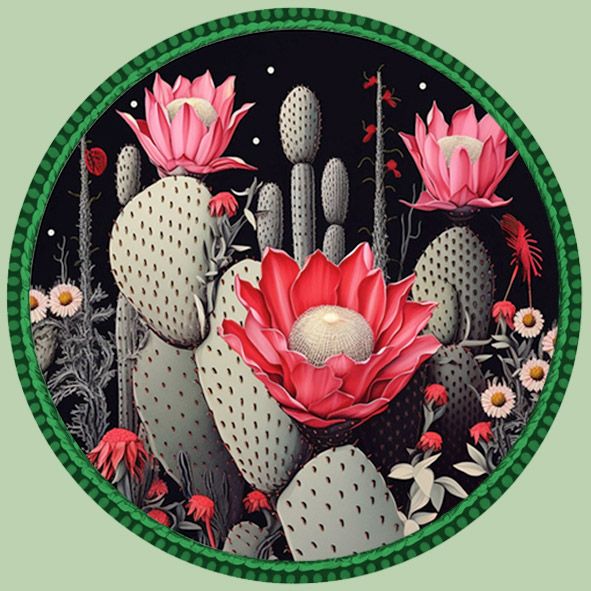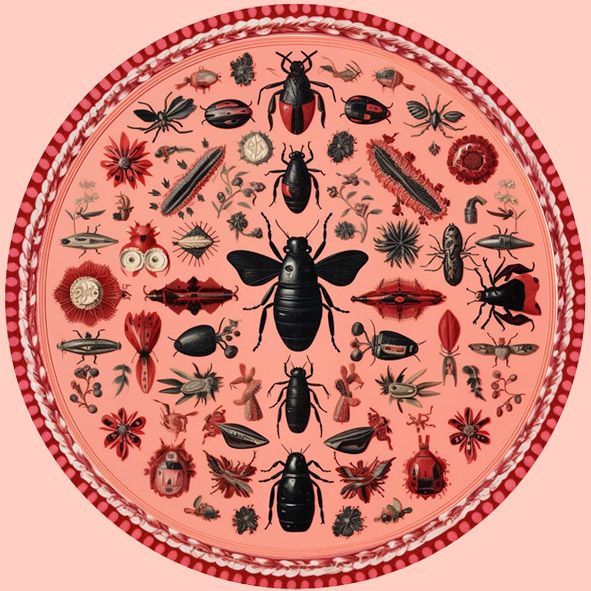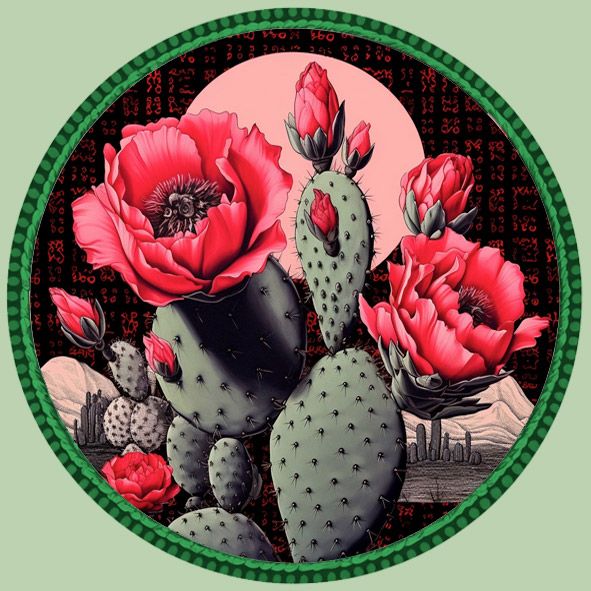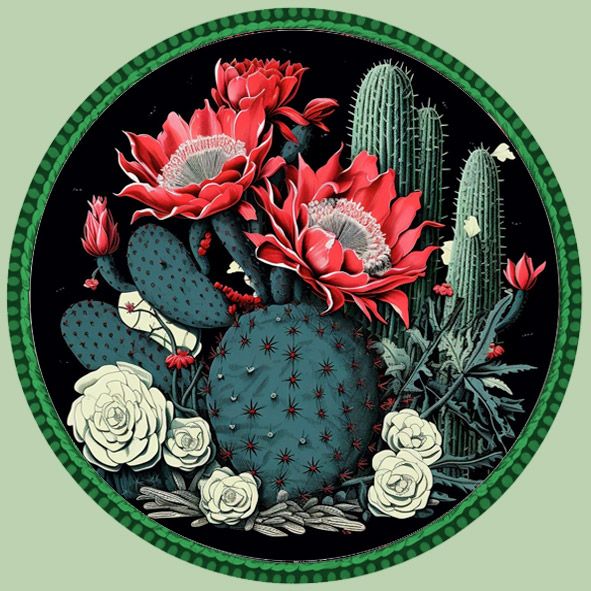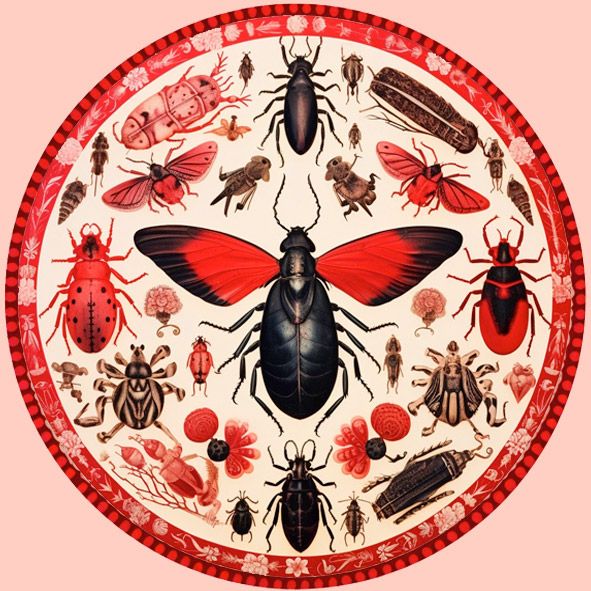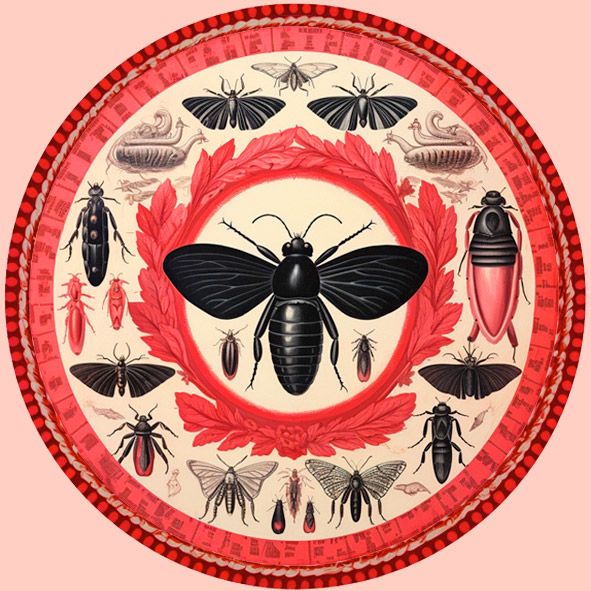Opuntia Chtulucene Landscapes – Analogue Digital & AI
Artworks available in limited editions prints, Nfts & video projection
Memories of the Future 2024
MEMORIES OF THE FUTURE
Speculative Fabulations on the Future of the Opuntia Cactus and Cochineal Insect
“Memories of the Future” is an eco-futurist and eco-poiesis artistic project I began developing in 2023.
This project is part of a collective action by a group of women artists, the @Sos_Cochichumbas, willing to raise awareness through art about the disappearance of the Opuntia cactus— known as Nopal, Prickly Pear, or Chumbera—in the Balearic Islands and mainland Spain due to a plague of Cochineal insects. Recognizing our emotional and aesthetic connection to the presence of this plant in the landscape, each artist in the collective created a personal project to engage with and reflect upon this ecological issue.
The project began researching the history and context of the Opuntiae cactus, as well as its relationship with the Cochineal insect. Why this seemingly indestructible cactus is disappearing suddenly? What is the origin of the plague?
What is the history of this plant and its symbiotic predator? We first discovered that the Opuntia cactus was originally from Mexico, and imported 300 years ago to Spain and Europe, following the conquest of Mexico by the Spanish, because of its intimate relationship with the Cochineal insect who produces a precious and coveted carmine red pigment.
This research took me on a journey from Ibiza to Oaxaca Mexico, the cradle of the Nopal /Cochineal golden match, and progressively shaped as a visual storytelling inspired by Donna Haraway’s writings and vocabulary (“Staying with the Trouble” 2016) to imagine possible or impossible “futuries” or “speculative fabulations”, weaving ecology, history, artificial intelligence and expressive arts.
“Memories of the Future” explores the web of interconnectedness shaping our world through the lens of the symbiotic relationship between the Opuntia Cactus and the Cochineal insect. This inter-species relationship serves as a gateway or “contact zone” for “tentacular thinking” (Haraway 2016) spanning across the historical ties between Mexico and Spain, colonization and cultural hybridization, the intricate play between nature and culture, biodiversity and human/non-human interactions.
Witness of Change Series – Analogue, digital & Nft artworks
Limited Editions Prints on Organic Paper
Memories of the future 2024
Tentacular thinking: the historical and ecological context of the project
To tell the story of the Opuntiae cactus and the cochineal insect we must start by honouring the “cosmovisión” of indigenous cultures in Central America who perceived the cosmos as a harmonious and interconnected entity where plants, animals, insects, humans, and celestial bodies, coexisted in a delicate balance. This world view emphasized respect for all forms of life and the natural environment. Plants, animals, and insects held sacred significance and were revered for their symbolic importance and roles in myths, rituals, and ceremonies. The indigenous “cosmovisión” is spiritual rather than exploitative and offers valuable insights into sustainable living, ecological stewardship, and holistic approaches to health and well-being.
Indigenous peoples in Mesoamerica possess extensive knowledge of plants, herbs, and remedies derived from their observations and interactions with the environment. Both the Nopal cactus (Opuntia) and the Cochineal insect (Dactylopius coccus) have historically been significant and respected resources among Aztec, Mayan and local indigenous cultures since the second century BC if not before. The Nopal cactus features on the Mexican flag and is depicted in many ways in traditional and folk art. Both its pads (nopalitos) and fruits (tunas) are a great source of food for both humans and animals, rich in vitamins, minerals, and antioxidants. It is a natural anti- inflammatory and is used in traditional medicine to treat wounds, digestive issues, and diabetes. The Nopal cactus also provides materials for construction, its fibres were used to make ropes and adobe. Today it is used to produce vegan leather and biofuel, offering a range of innovative potential applications.
Indigenous cultures in Central America have been mastering the art of breeding the cochineal insect on Nopal’s pads since centuries. The cochineal insect, particularly its female, produces carminic acid, used as a valuable natural red dye for textiles, wall paintings, pottery, ceremonial body painting as well as natural medicine. Cochineal played a role in indigenous rituals and in artistic expressions. Its vivid blood like red hue symbolized life, vitality, and sacredness.
Following the Spanish conquest of the Aztec Empire, the carmine red Cochineal pigment became a highly valuable trade commodity and a source of immense wealth for the Spanish Empire. Red has always been a powerful symbolic colour, representing love and war, blood and sacrifice, beauty and anger, revolution and progressive forces. Cochineal dye became the popular red pigment used to colour clothing for royalty, the church, European nobility, and lavish interiors. It also became the preferred carmine red colour for European painting schools and a natural food colorant.
Planet Nopal Series – Analogue, digital & Nft artworks
Limited Editions Prints on Organic Paper
Memories of the future 2024
To exploit the cactus’s potential for breeding the Cochineal insect and produce the coveted red carmine dye, European Colonizers imported the Opuntiae cactus to Europe, Africa, Asia, and Australia. This is why today this cactus is present on all continents with temperate and hot climates. In many of these regions, the Opuntia’s myriad other uses remain often unexploited or even unknown. Today in many countries the plant is labelled as invasive due to its remarkable resilience to heat and drought. The Opuntiae cactus reproduces itself not only through self-pollination and seeding but also through fragmentation, any pad falling on the ground can root and grow a new cactus. The Opuntia cactus also has the ability to hybridize with many other cacti, creating hundreds of sub-species. Its rapid reproduction can potentially endanger more fragile eco-systems as it has been the case in Australia where the Opuntiae cactus imported to host Cochineal insects for dye production, has widespread over hectares and hectares of land.
But the Carmine Cochineal insect (Dactylopius coccus) never endangered the cactus before in our regions, so what was happening now in Spain? We discovered that the origin of the plague was due to the introduction of a new strain of lethal wild Cochineal (the Dactylopius opuntia) by the Spanish preservation administration to eradicate the Opuntia cactus from a nature reserve where it was endangering other native plants and eco systems.
The propagation of this new breed of Cochineal, coupled with a staggering 50% decline in insect diversity in Spain, of which many are natural predators of the cochineal, is what started the actual plague that is decimating the Opuntia cactus not only in Spain but also in Morocco and could potentially spread to other European and African countries. This is a notable loss of an amazingly resourceful plant that has been part of the aesthetic of our Mediterranean landscapes for the last 300 years.
Hybrid Worlds Series – Analogue, digital & Nft artworks
Limited Editions Prints on Organic Paper
Memories of the future 2024
Speculative Fabulations: Artistic process, Artificial Intelligence, surrealism, hybridization and shifts of perspective
What if the Opuntiae Cactus and the Cochineal insect were to play a central role in our future? This question started to inspire past and future narratives for these two species. These narratives weaved themselves into prompts that I fed into an Artificial Intelligence Image Generator (Mid-journey) to create series of “speculative fabulations” scenes.
“Speculative fabulations” is a type of imaginative storytelling that enables us to unfold new worlds through what could take place in the future or could have taken place. “Speculative fabulations” enlarge our perception of history, fantasizing stories that re-shape possibilities, imagining characters and myths, to shift our perspective in front of global and local ecological crisis. (Harraway 2016)
For this project I collaborated with Artificial Intelligence Image Generators that produce hybrid images from written prompts. Algorithms search the internet for available images related to the “prompt” and combine them into seamless “collages” in an unpredictable surrealistic and aleatory fashion. At the heart of surrealism is the idea of pushing beyond the limits of the human conscious mind to explore the irrational and the subconscious, as well as freeing the imagination from pre-conceived ideas. AI art unexpected connections between previously unrelated images, is questioning the possibility of a new kind of human/machine collaborative imagination. Or as artist William Kentridge says “the algorithms are becoming our contemporary oracles” (Slade Lectures 2024).
Some will argue that AI art is reducing the artist to a typist and “offering the fruits of creativity without the effort, the search and the self-doubt” (Rob Horning in Art in America 2022). This has not been my experience on this project as working with AI asked many trials and errors to finalize artworks. Others defend that AI-generated art offers a fresh perspective on surrealism. “By using algorithms AI can create images and compositions that might never have occurred to human artists but still need the artist’s creativity and imagination to be truly innovative.” (in Surrealistly 2023) AI art is born of a new type of creative collaboration between humans and machines.
Living Red Series – Analogue, digital & Nft artworks
Limited Editions Prints on Organic Paper
Memories of the future 2024
In “Memories of the future” the created artworks imagine a world in which the Opuntiae Cactus and the Cochineal insect are central to our past-future evolution. The generated images or “speculative fabulations” scenes are produced from a hybrid blend of artificial intelligence, digital manipulation, and hands-on analogue craftsmanship. As an Art Based Research and by engaging with AI, the project aims to experiment with processes of artistic hybridization, crossing between heterogeneous medium/ techniques/ modalities, and tests how they shift our perspectives while expanding creative and imaginative possibilities.
“Memories of the future” wishes to sensitize the public to the aesthetic and emotional relationships we have with our landscapes, the fragile equilibrium of our biodiversity, and the complex network of historical, cultural and ecological connections we are weaving with the plants and insects that surround us. Through this project we realize that our landscapes are the result of 300 years of cultural and ecological hybridization, enlarging our perspective on the role that these processes play in our evolution.
Many questions remain open. What will be the impact of Artificial Intelligence on art and creativity? Between curiosity, hope, fear and ethical questioning, how will Artificial Intelligence, impact our evolution? Will Artificial Intelligence help us address some of our global and local ecological issues? Will AI, a pure product of our imagination, be our saviour or our curse?
Chtulucene Series – Analogue, digital & Nft artworks
Limited Editions Prints on Organic Paper
Memories of the future 2024
Weaving digital and physical: the final artworks
The project comprises 5 series of 24 miniature “speculative fabulations” scenes
Witness of Change fabulates a world in which the Opuntiae Cactus is the main plant species of our planet, flourishing and flowering on all continents and land types. In each image the silhouette of the “payesa,” the traditional peasant woman from the island of Ibiza, a disappearing human species, an archetype of ancient knowledge close to the land, becomes a witness of the ecological changes happening around her. She also used to be part of our landscapes and I have embodied this character in a live performance (Nostalgia 2019). The silhouette was drawn from photos of this act.
Hybrid World fantasies imaginary global transportation and trade of Opuntia cacti across seas and continents reshaping our planet’s landscapes with all types of hybrids species.
Planet Nopal invents a world in which the Opuntiae cactus is central to life on earth, providing energy and food for humans, animals, cyborgs and humanoids, as well as medicinal products, cosmetics and fibre to create all kind of objects.
Living Red revisits and re-invents the myriad uses of the Cochineal red pigment, which is notably less toxic (though not vegan) than synthetic red pigments. It can be employed in food, medicinal products, cosmetics and fabric dyeing.
Opuntia Chtulucene : are surrealist landscapes of Opuntia and Cochineal picturing a new epoch in which refugees from environmental disaster (both human and non-human) will come together. This is a time when humans will try to live in balance and harmony with nature (or what’s left of it) in “mixed assemblages”.
Chthulucene is a neologism created by Donna Haraway (2015) and contrasting the term Anthropocene used to describe the Earth’s current age. For Haraway, the Anthropocene does not provide the necessary narrative to break out of thought patterns and actions that are destructive to all living things. It only emphasises the supremacy of humans, their individualism and self-invented exceptionalism. Chtulucene is a reference to the chthonic earth goddesses or forces of the Earth worshipped by animistic and pantheistic faiths.
The series are presented in the form of limited edition individual prints (25 x 25cm or larger) as well as 4 artworks in which miniature images are weaved in strips of printed and hand-painted canvas with vintage ribbons (60 x 60cm)
Exhibitions / Presentation of project
Collage & Eco-futurist Storytelling Workshops
Memories of the future 2024
The project also includes:
Videos projections & performance
Collective collage & storytelling experiment/workshop in which participants can imagine their own “speculative fabulations” in the future of the Opuntia cactus and the Cochineal insect.
“Memories of the Future” is part of my doctoral research on shifts of perspective in the creative process with a focus on deconstruction and hybridization as catalysts.
